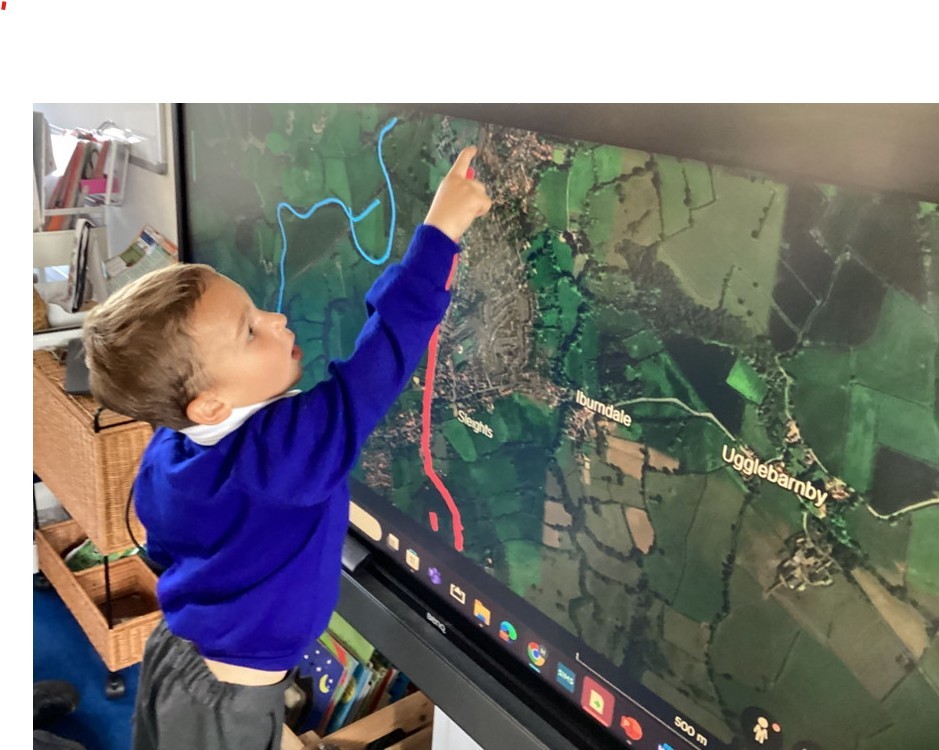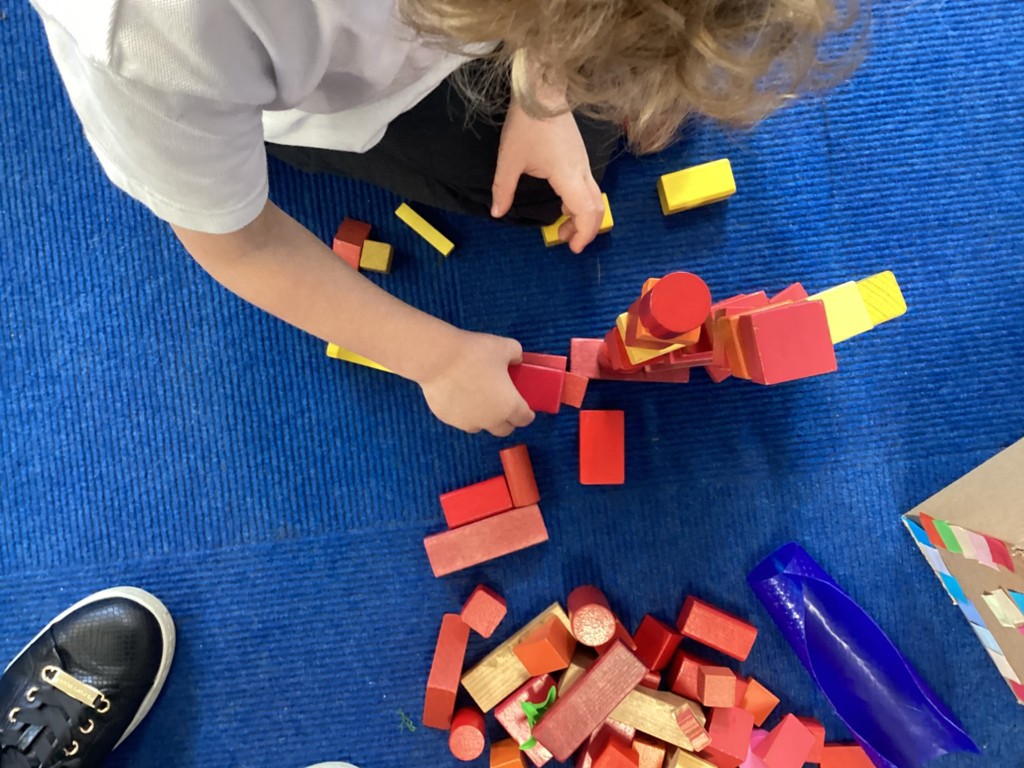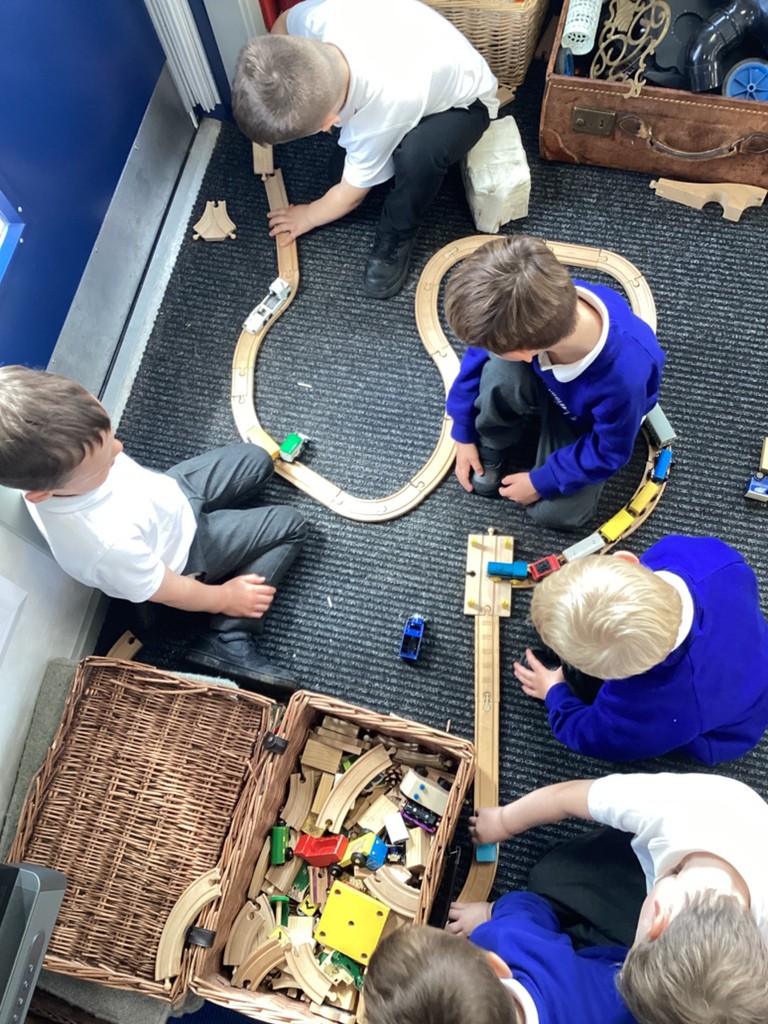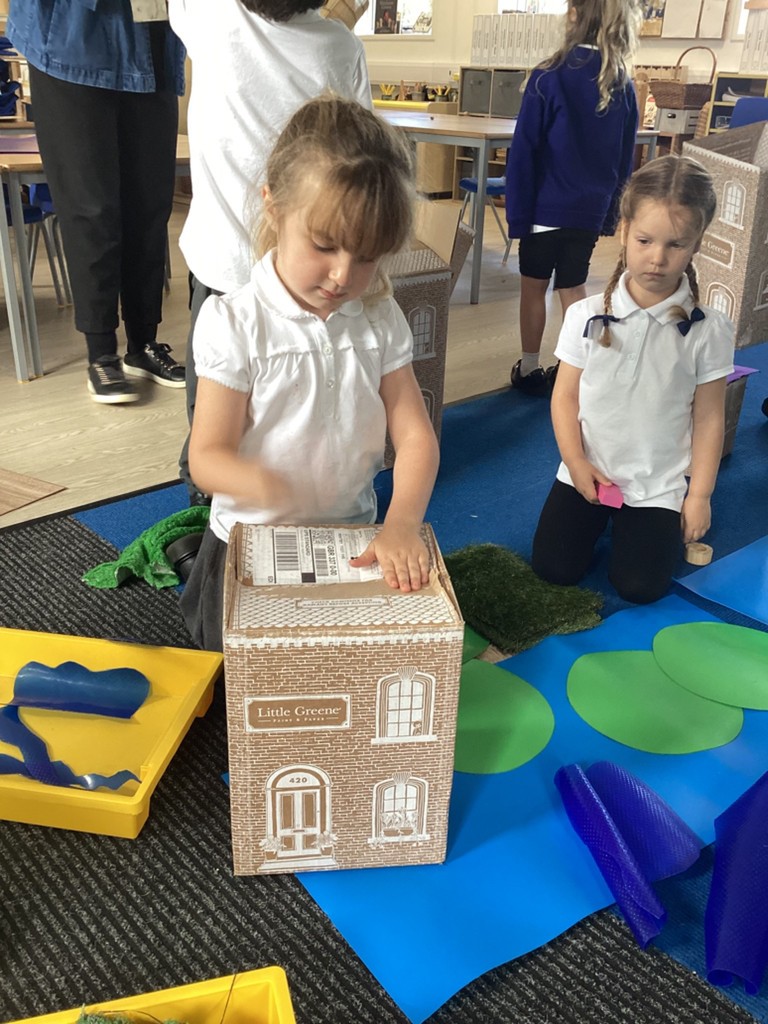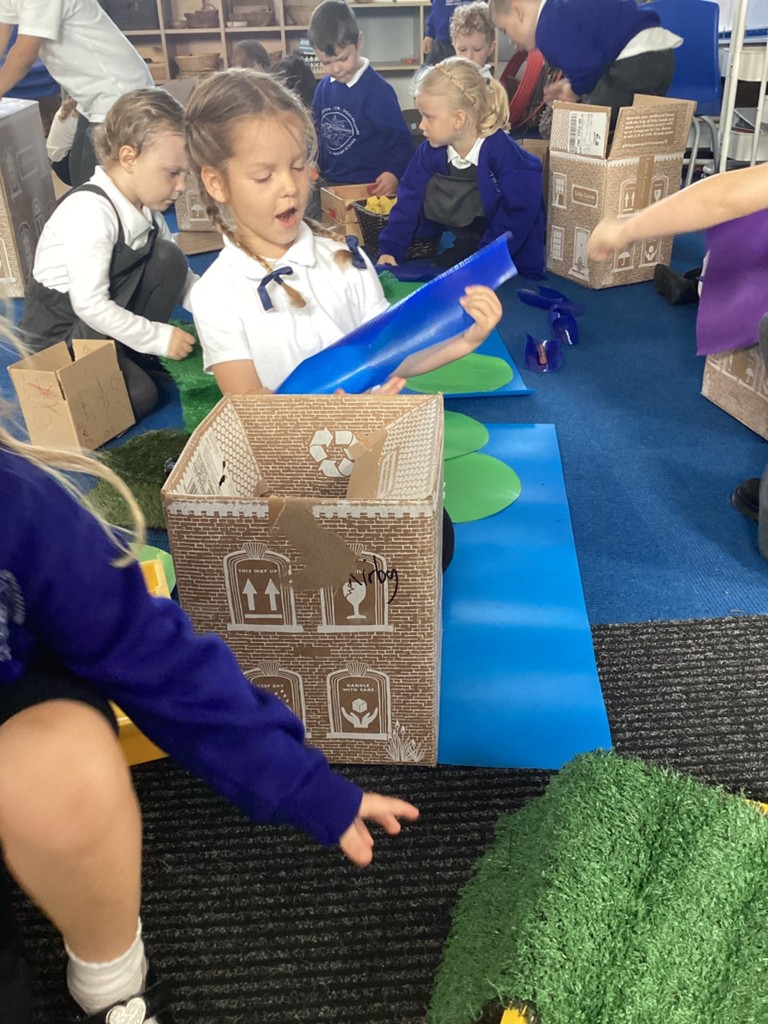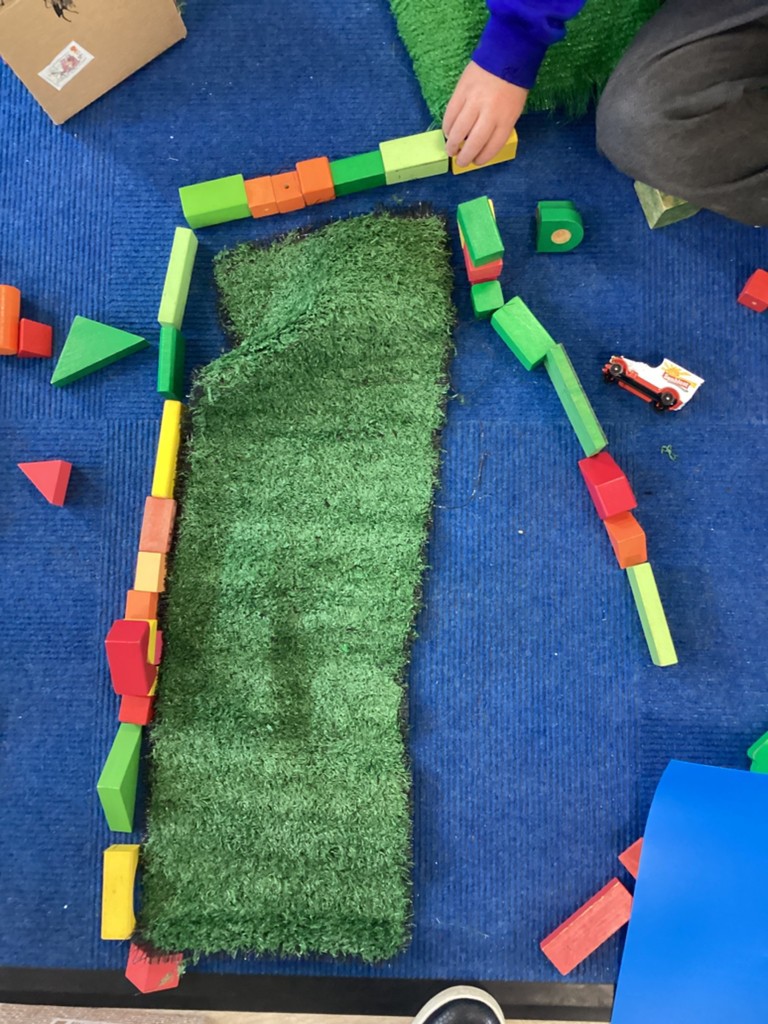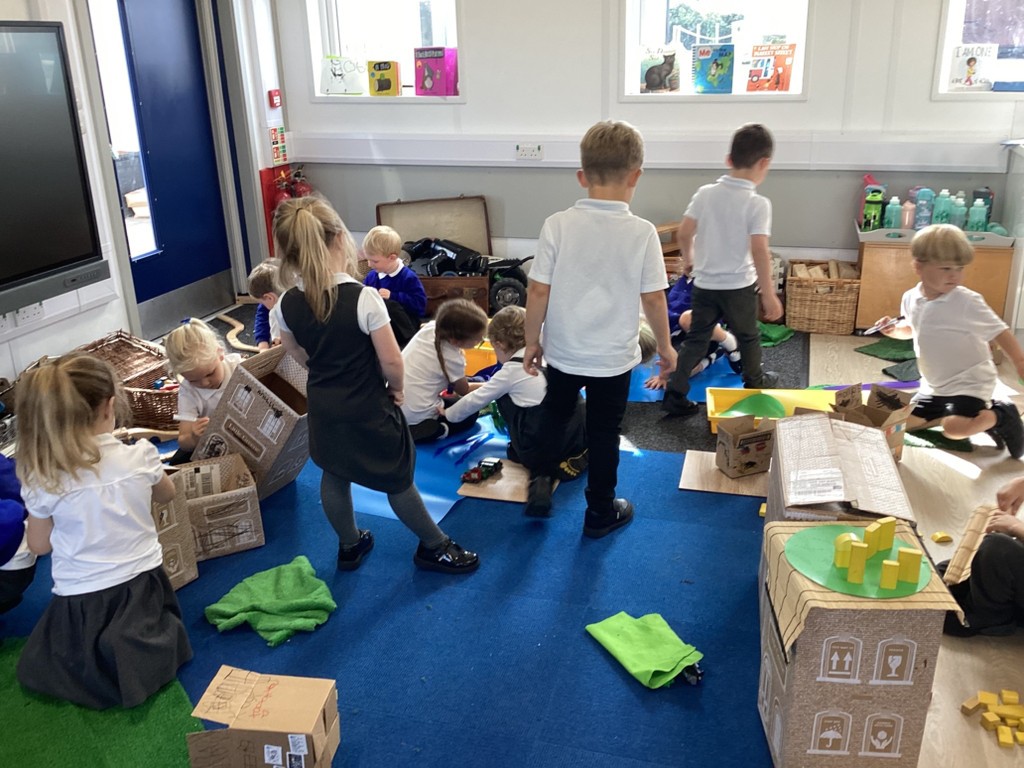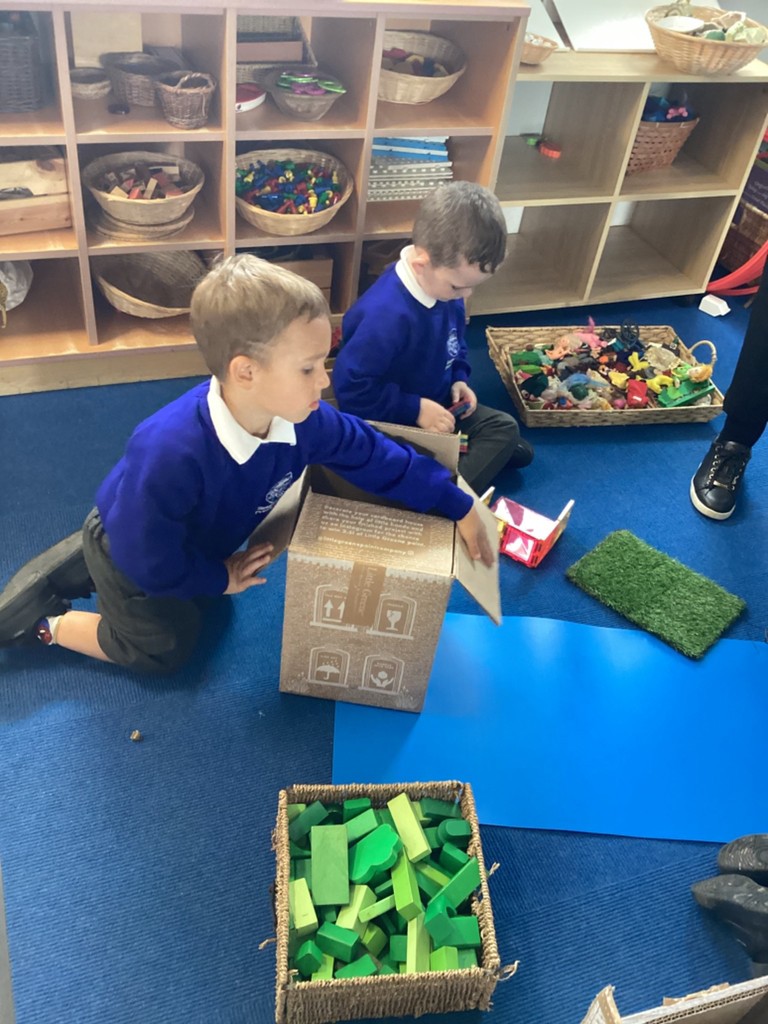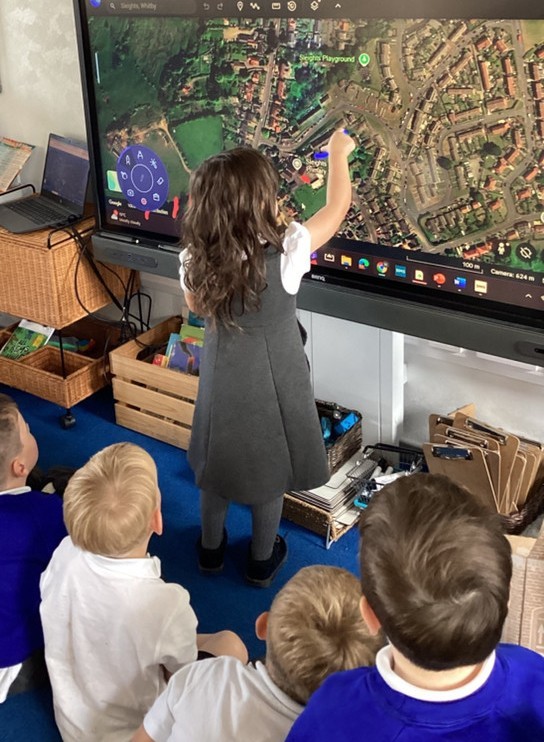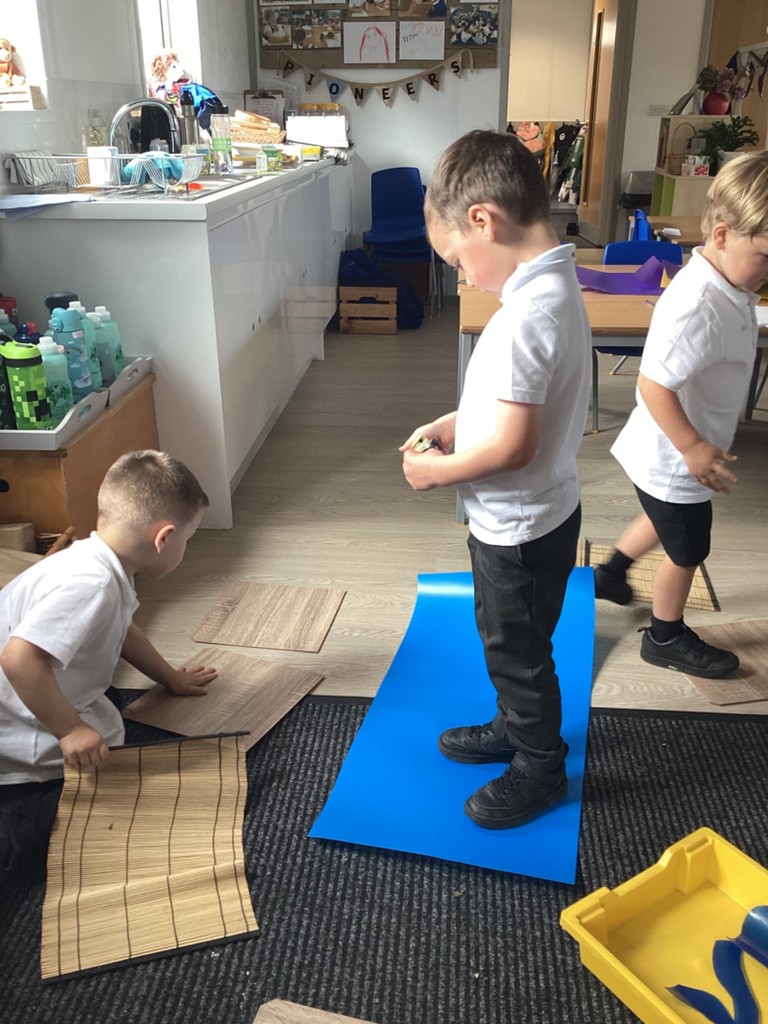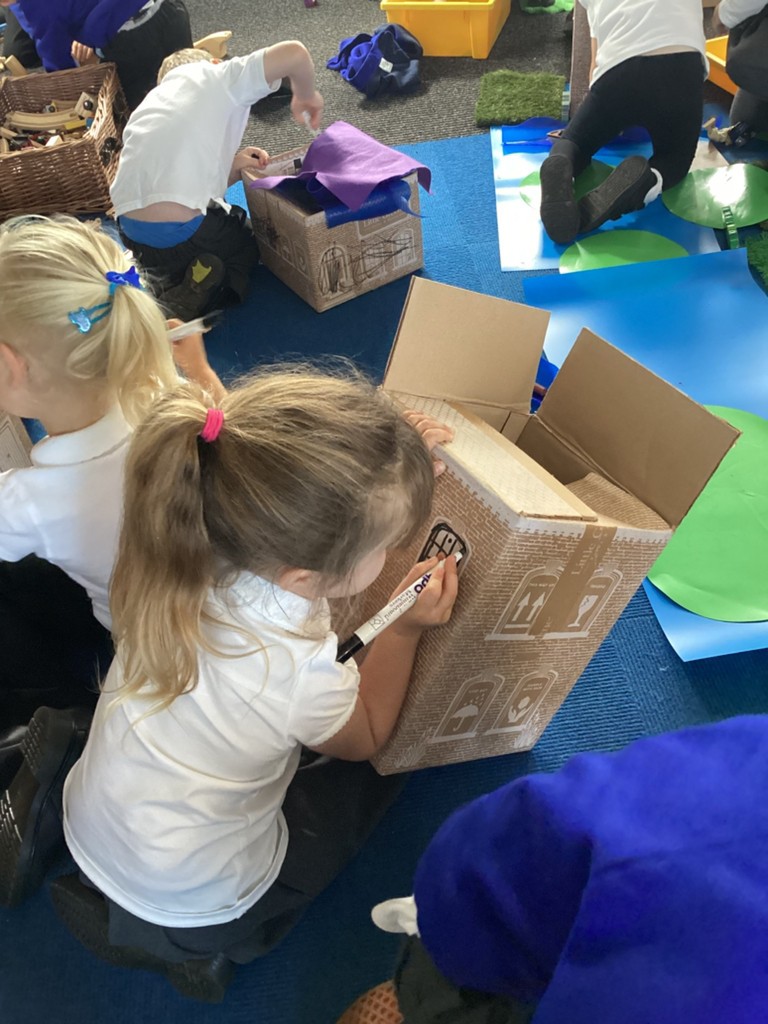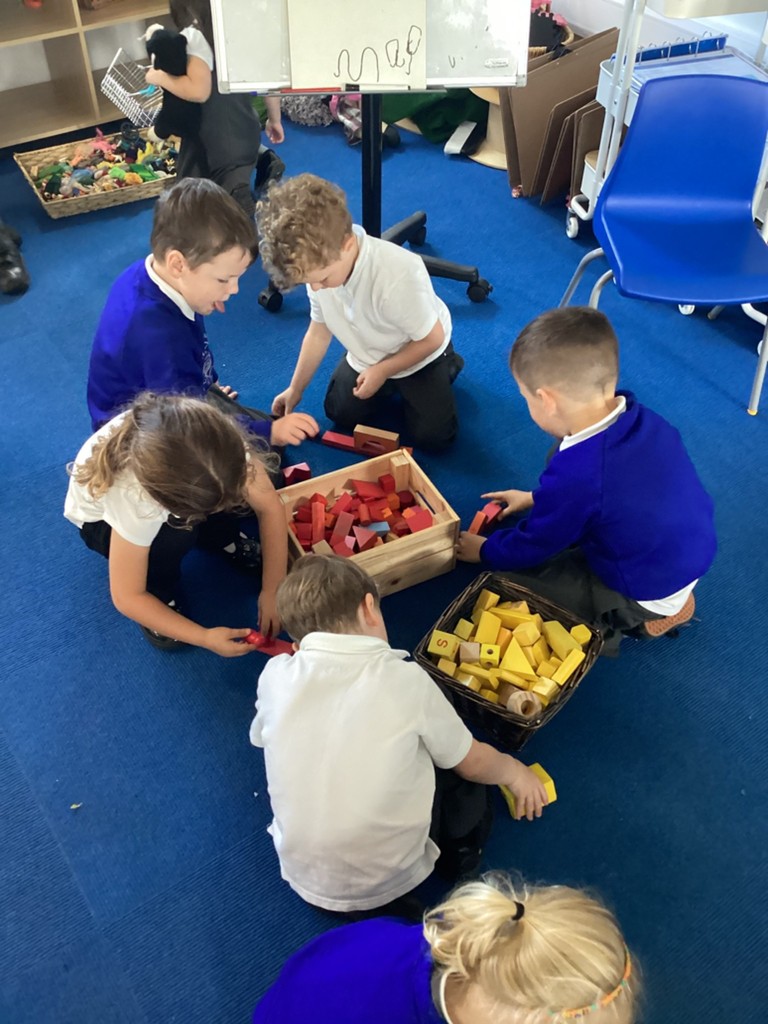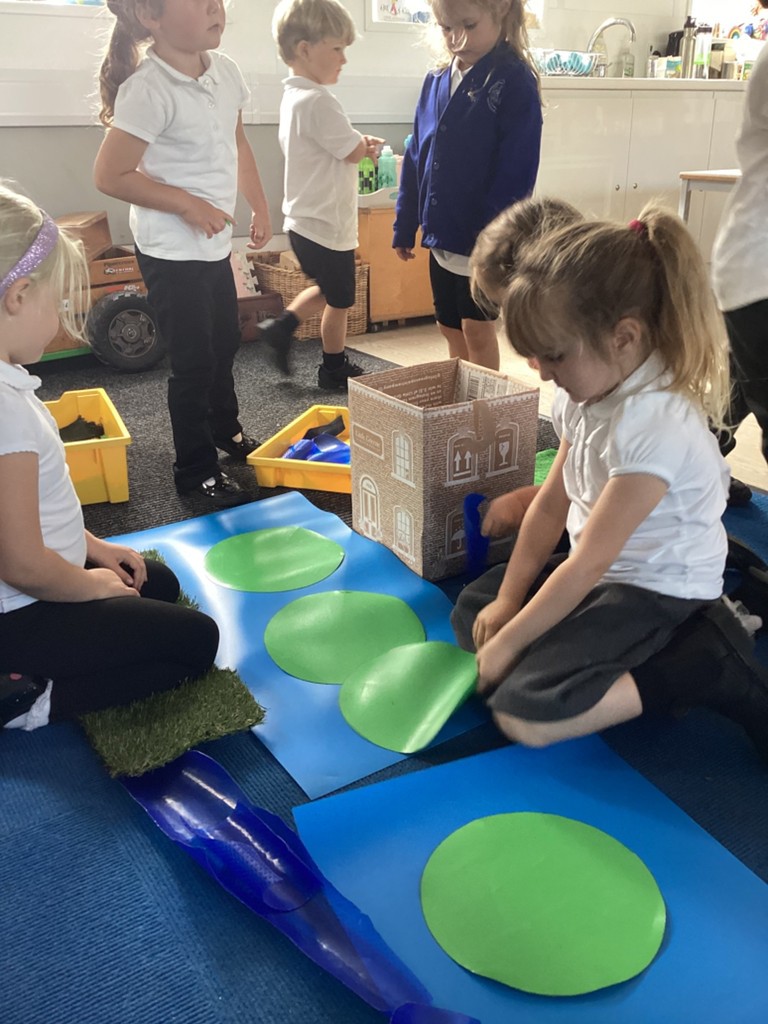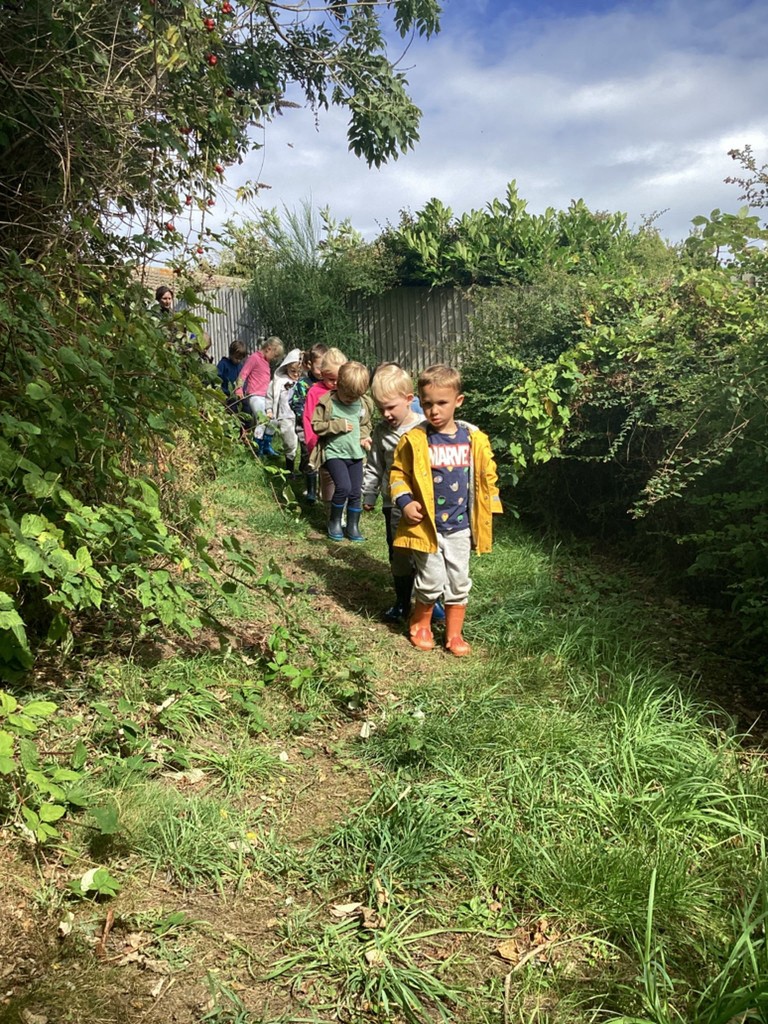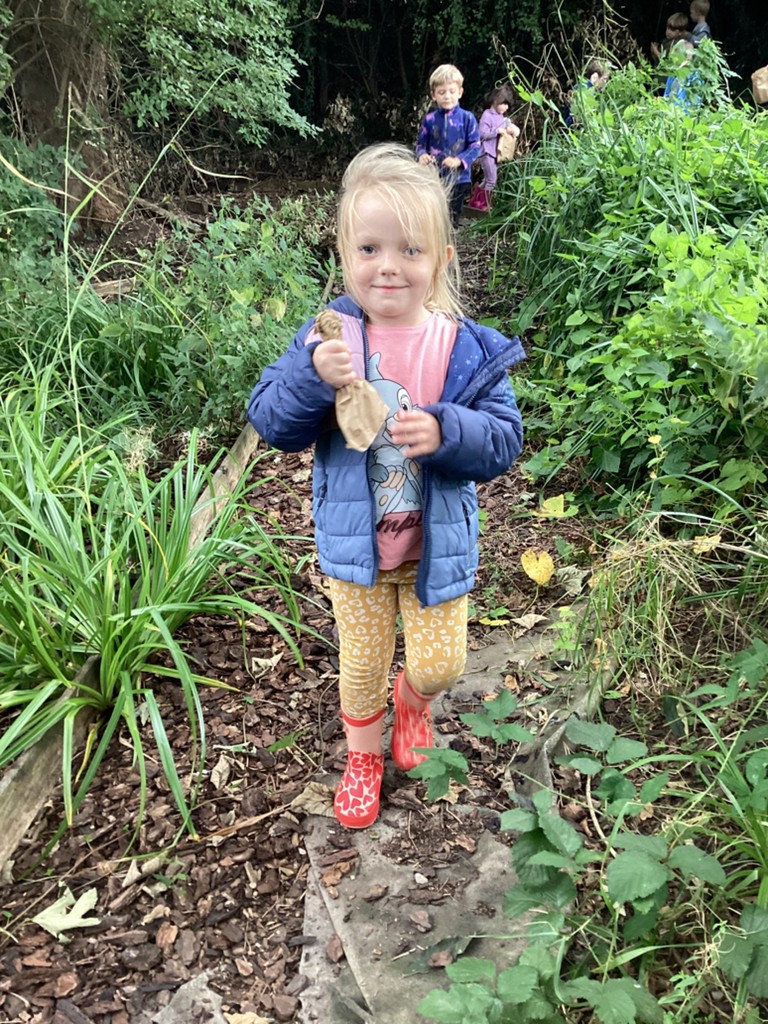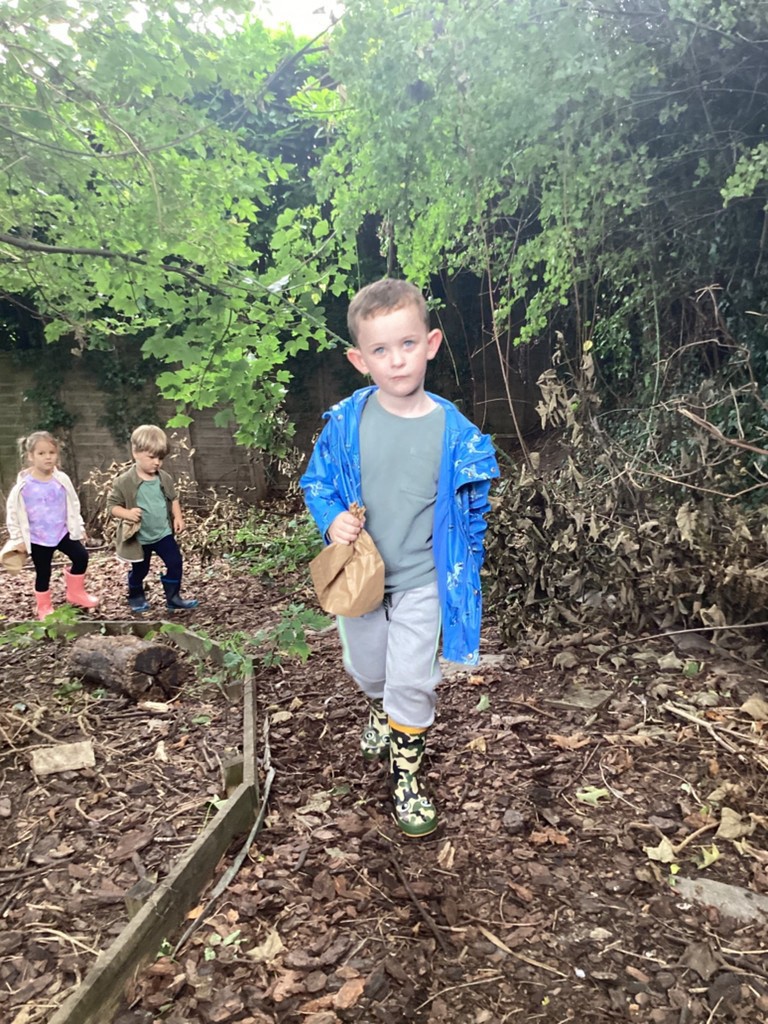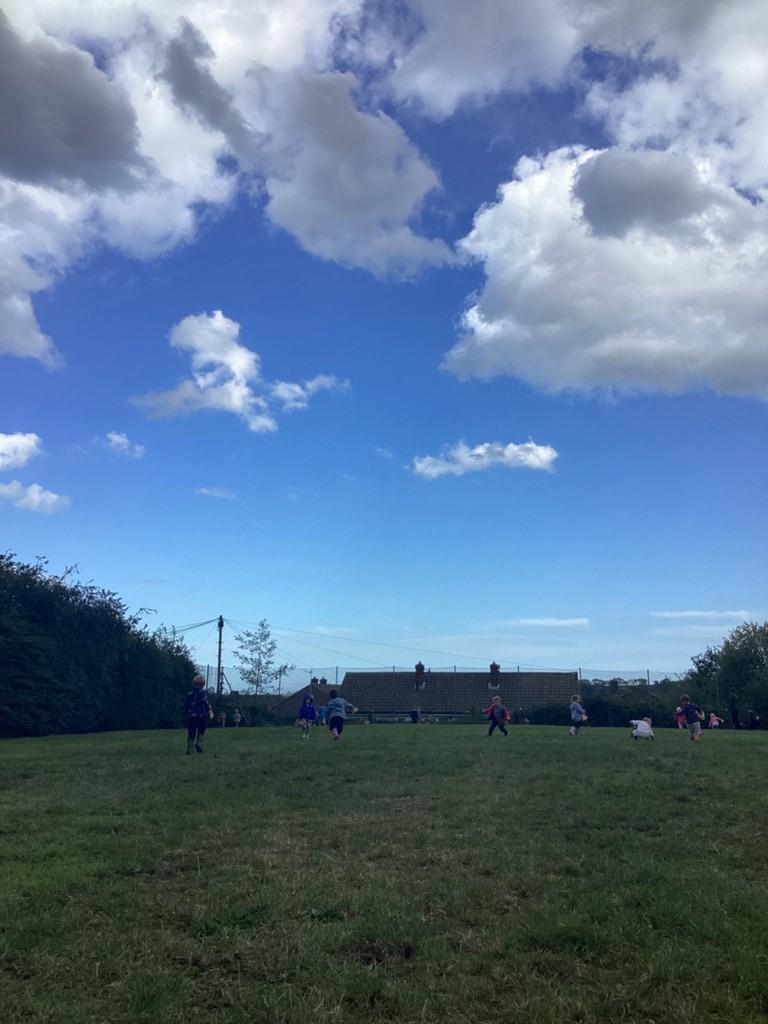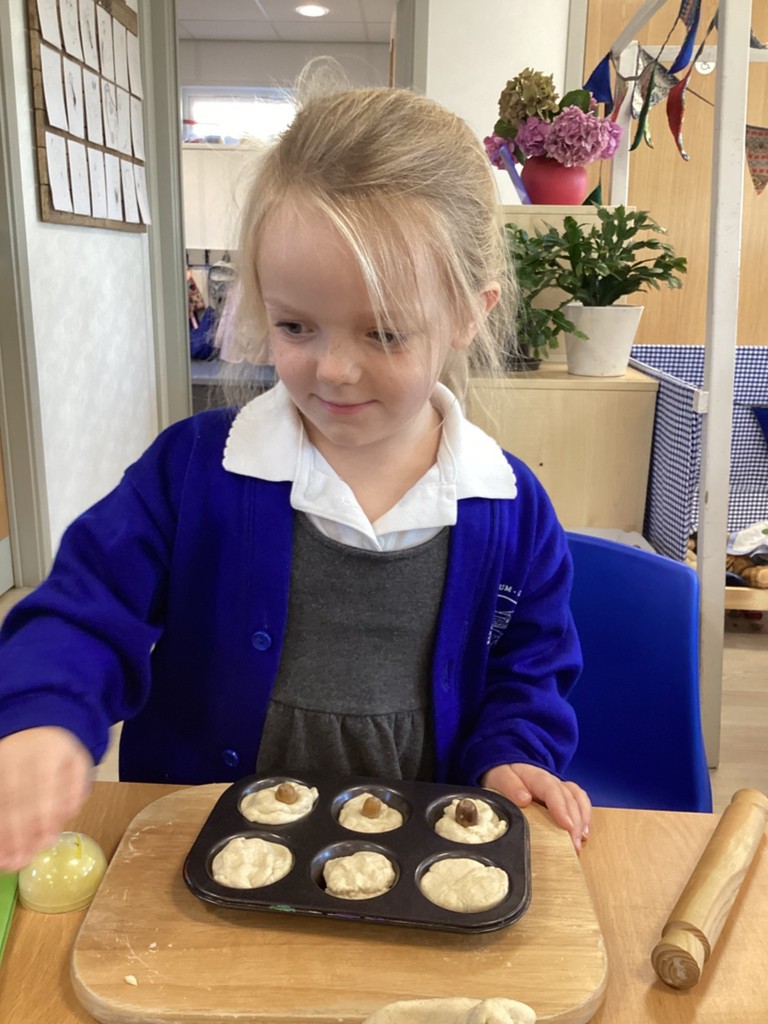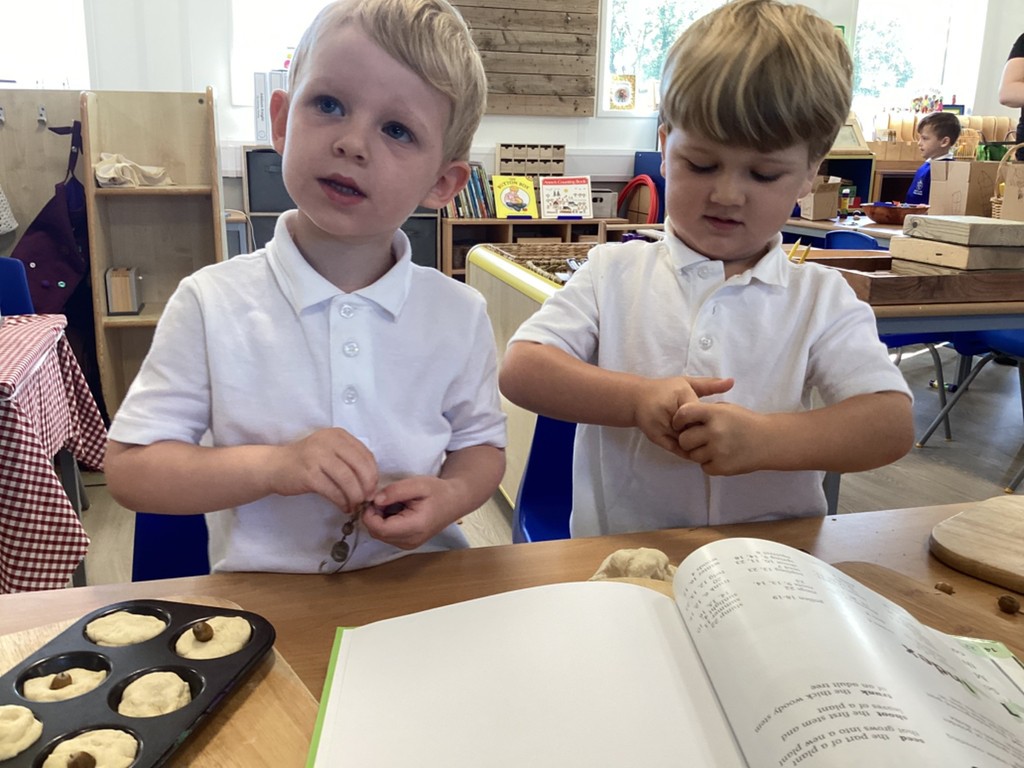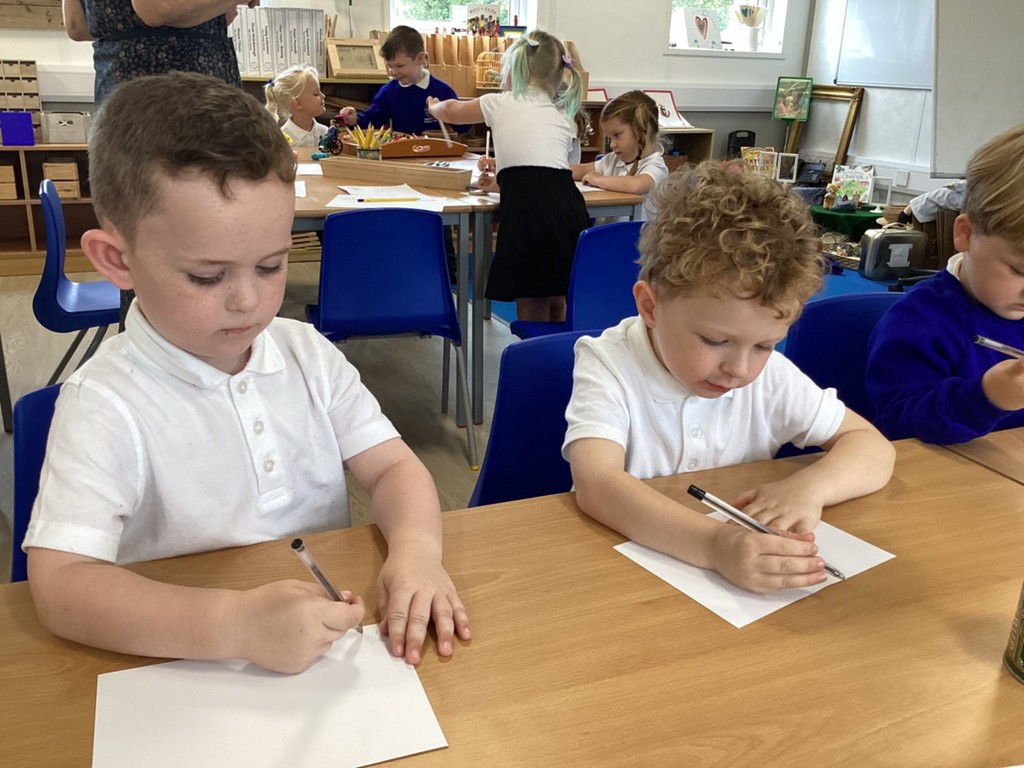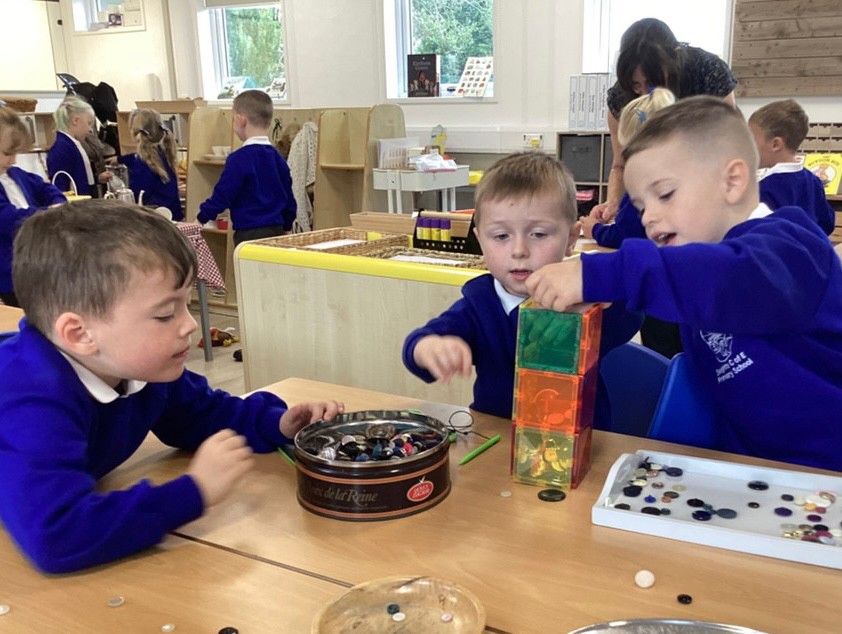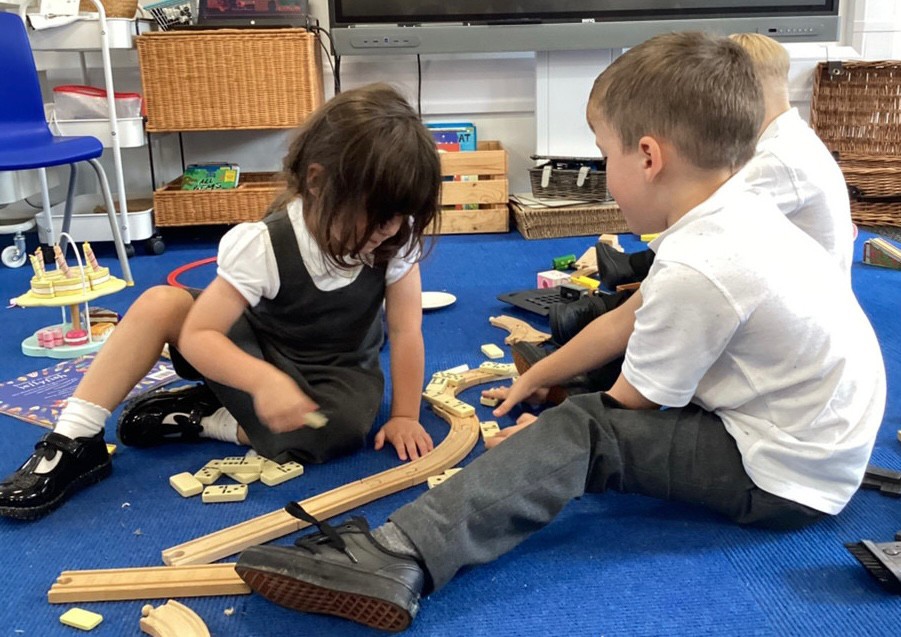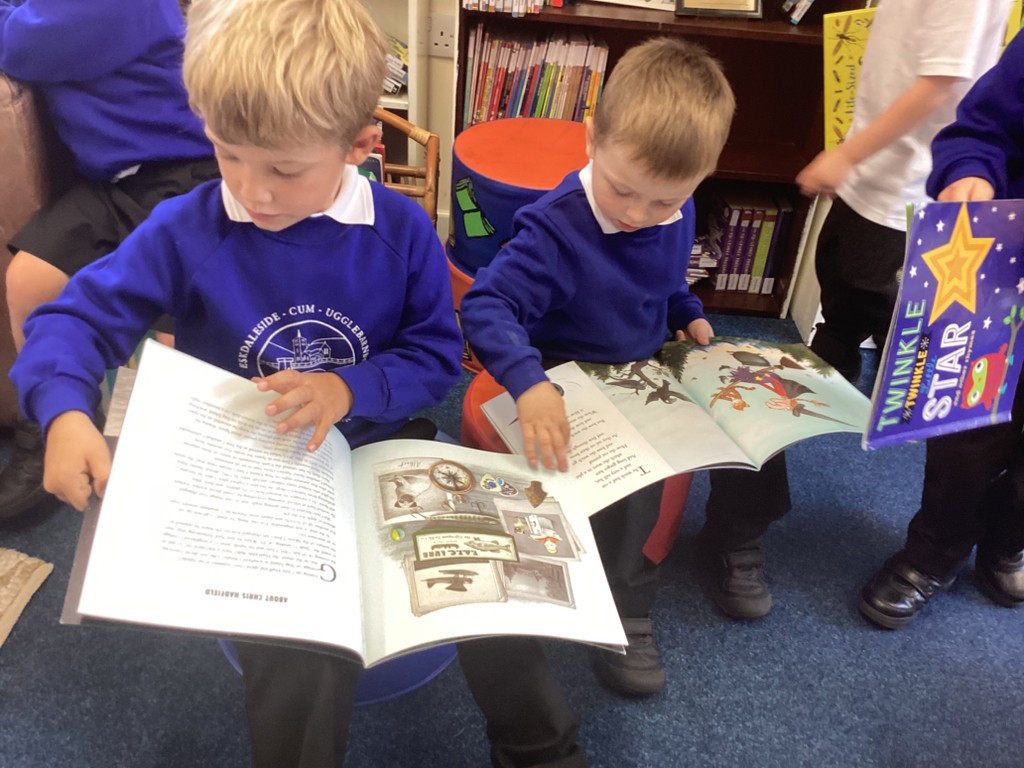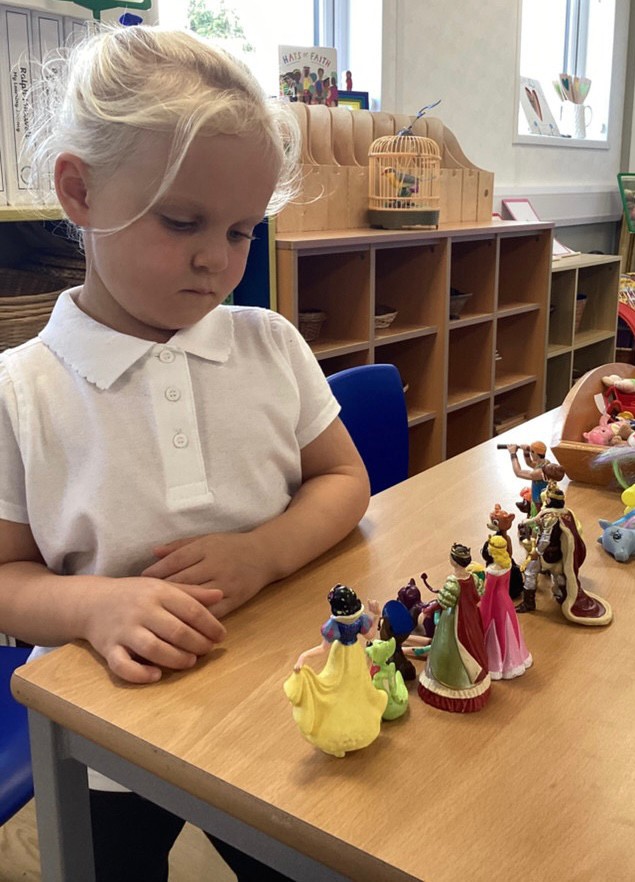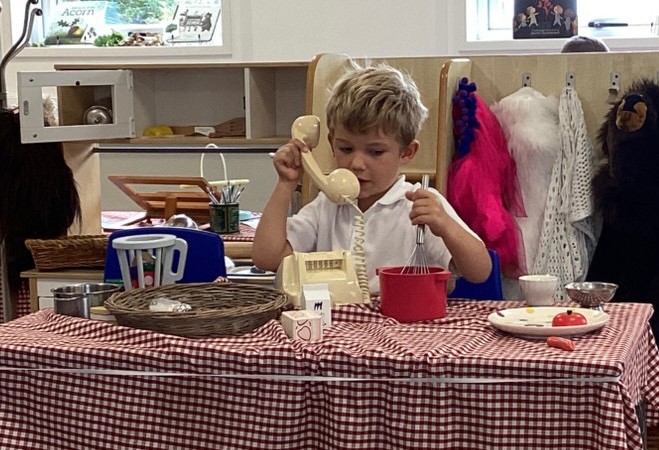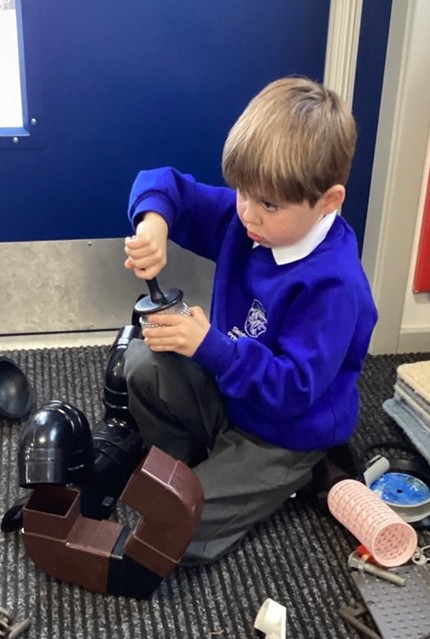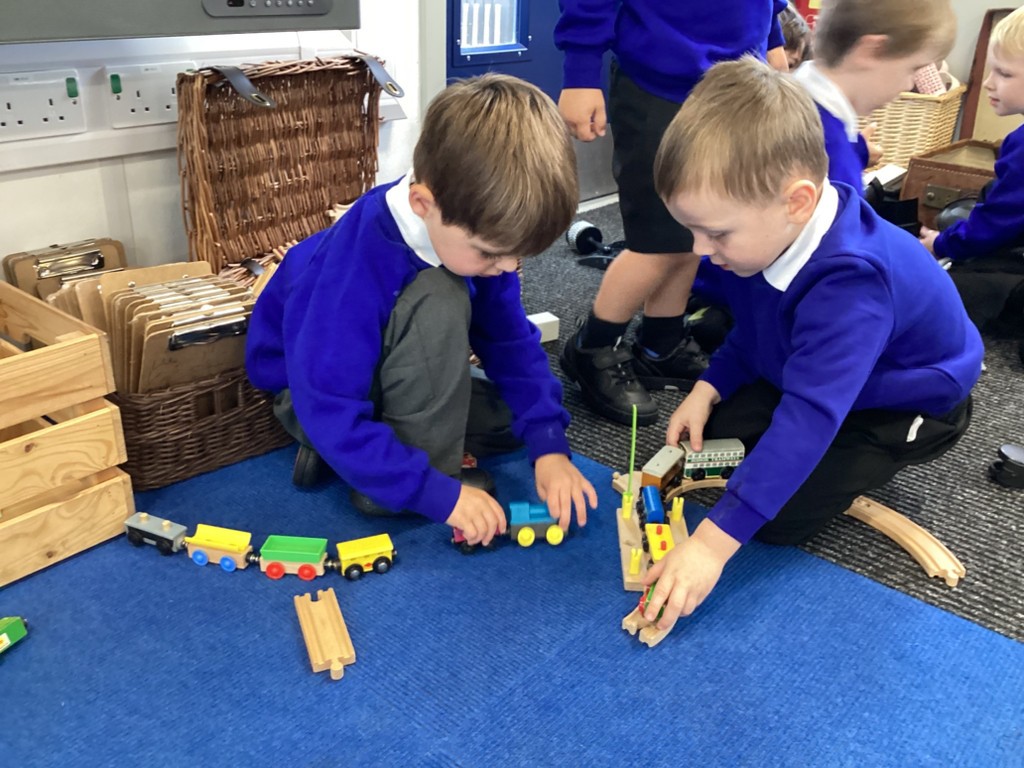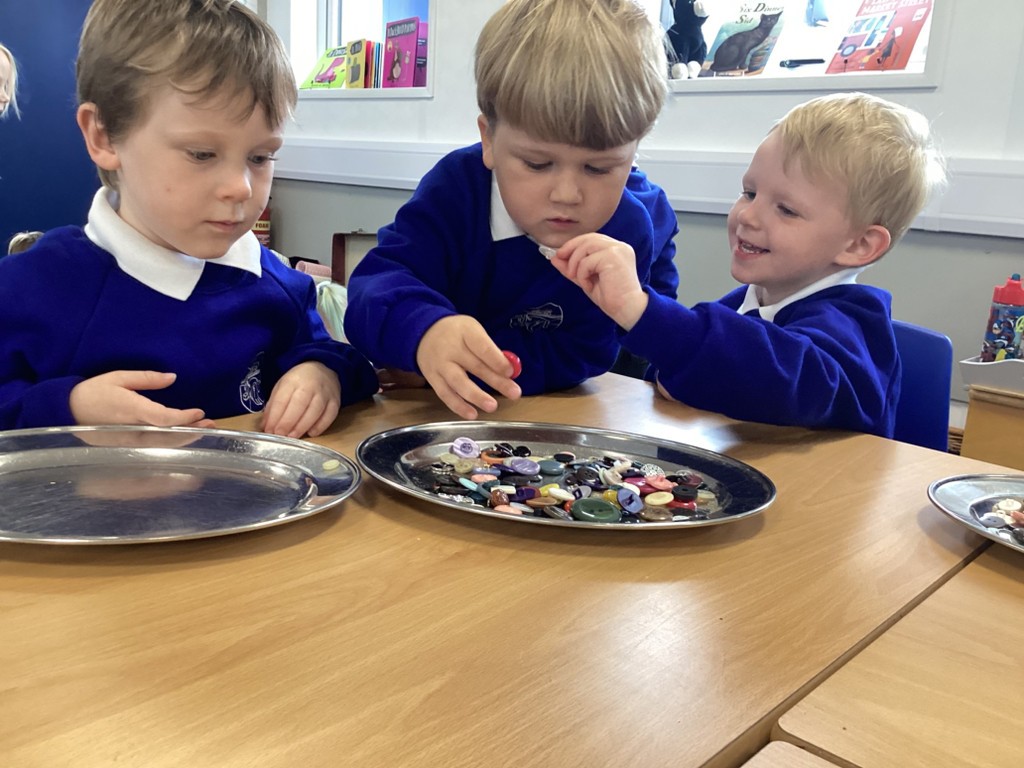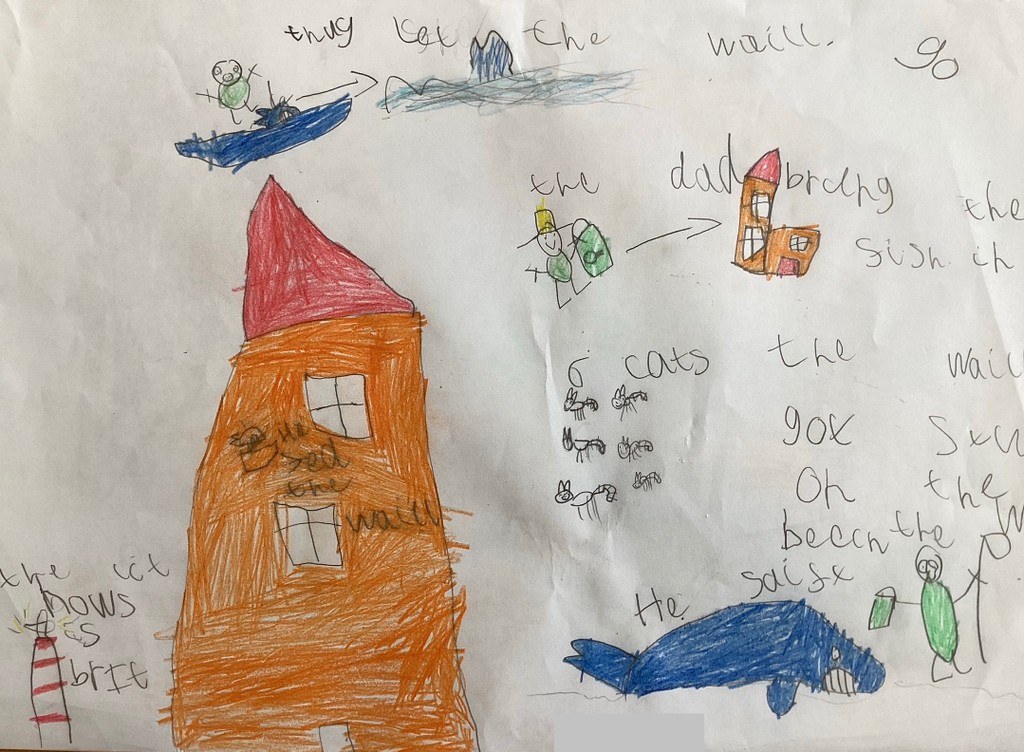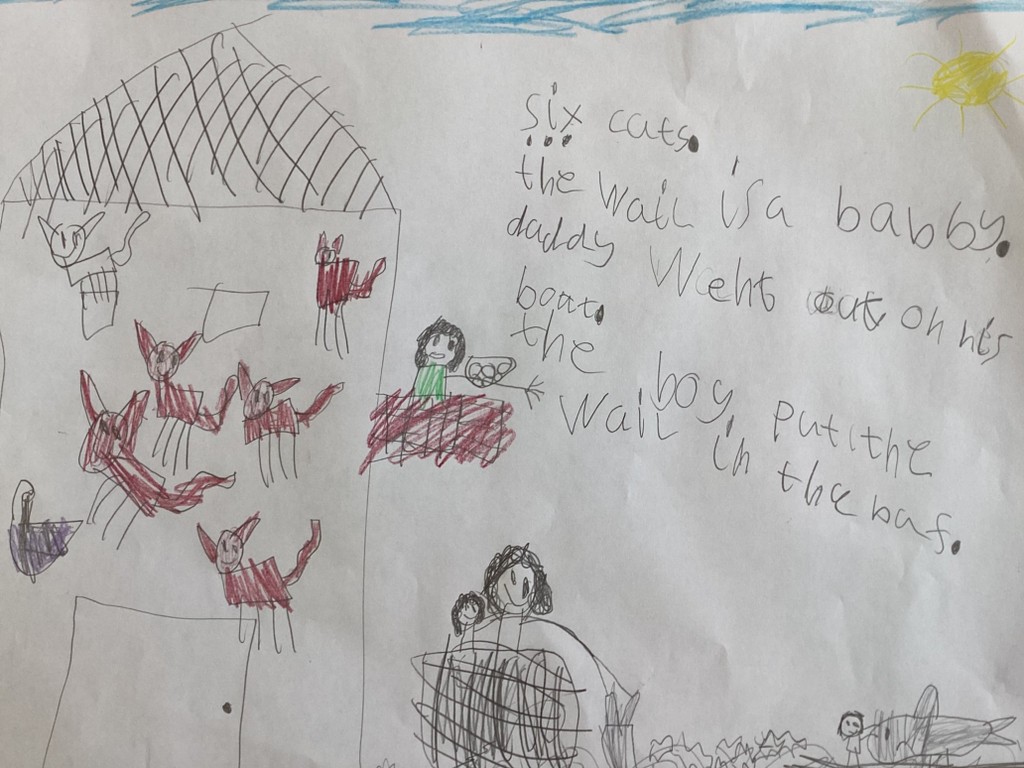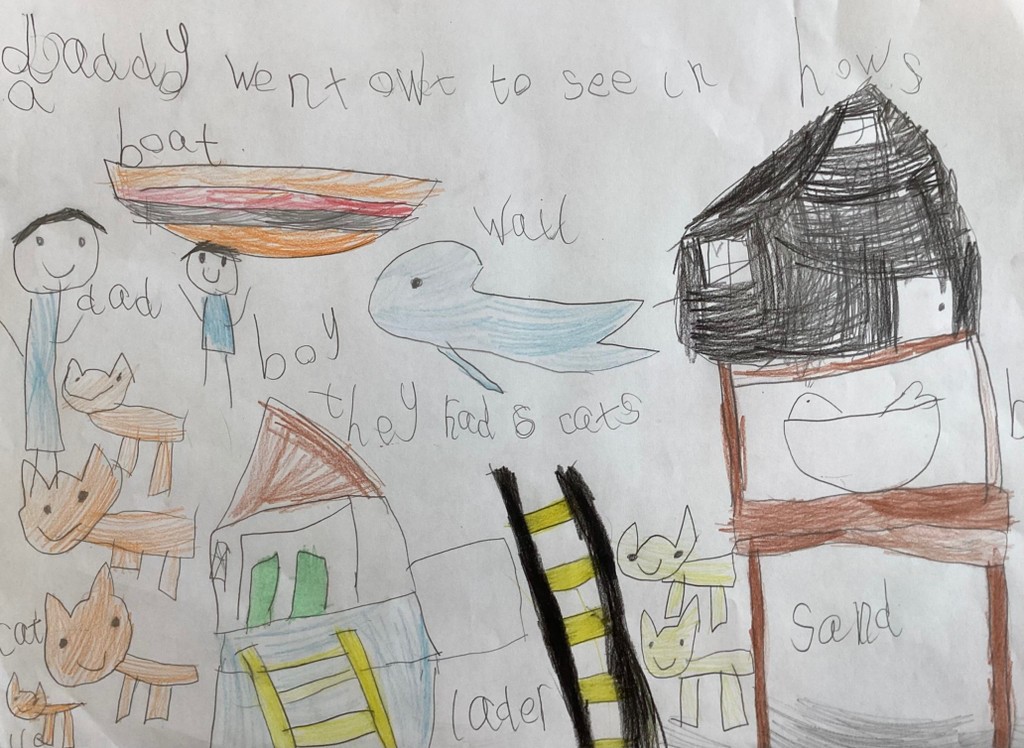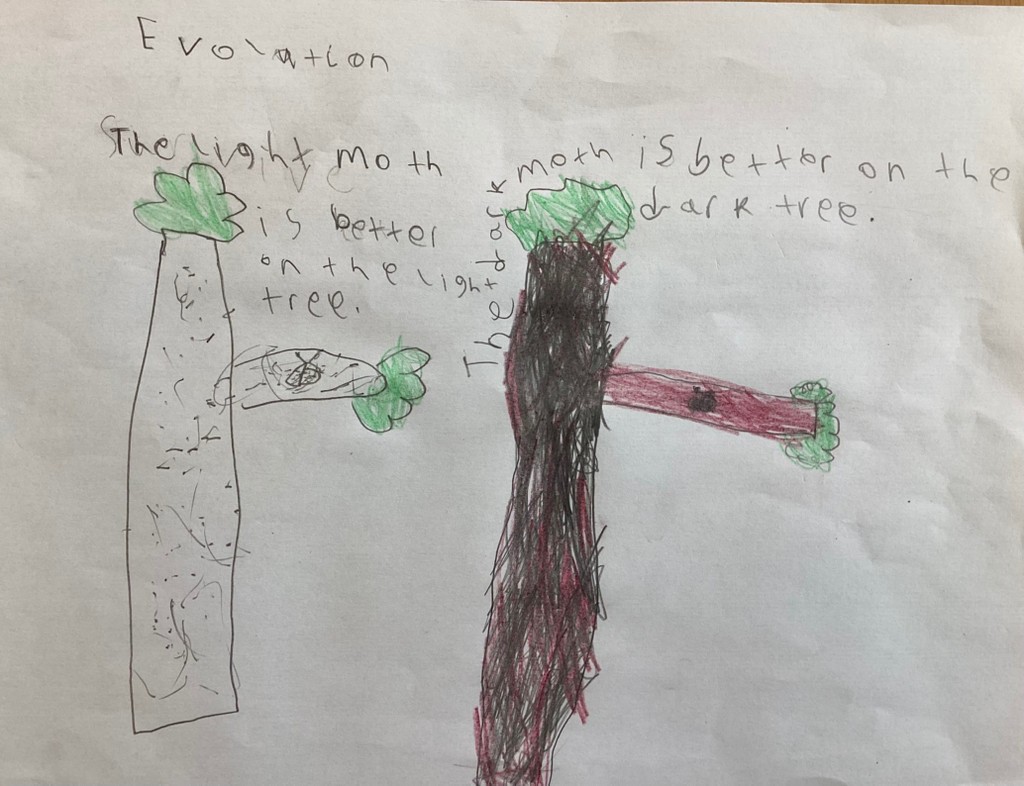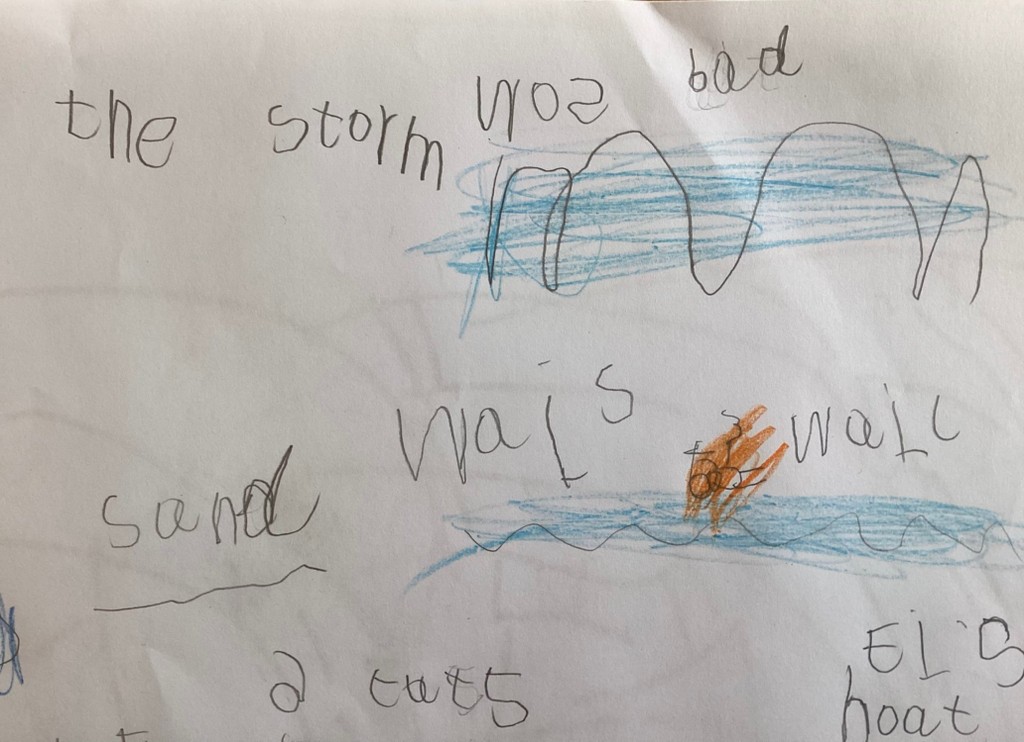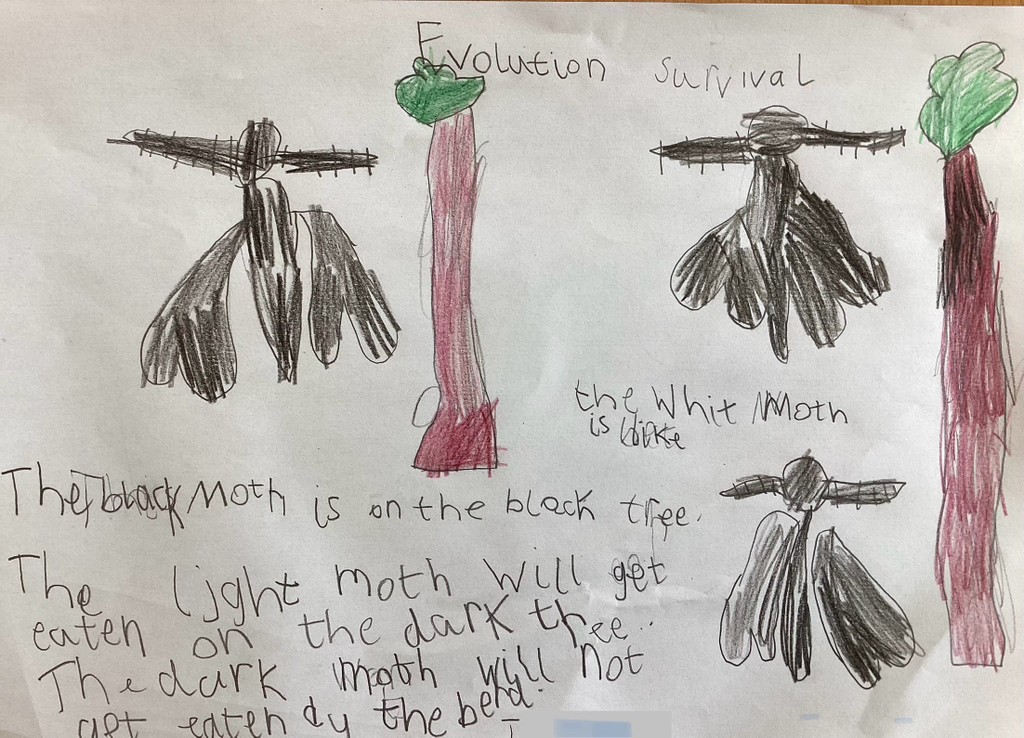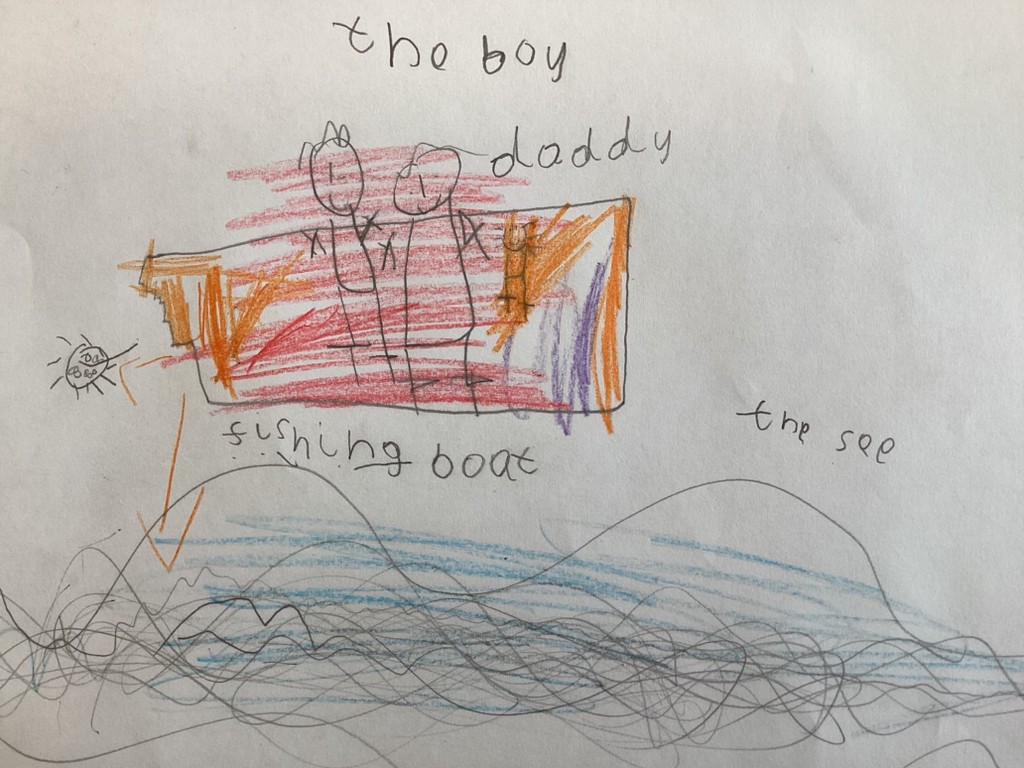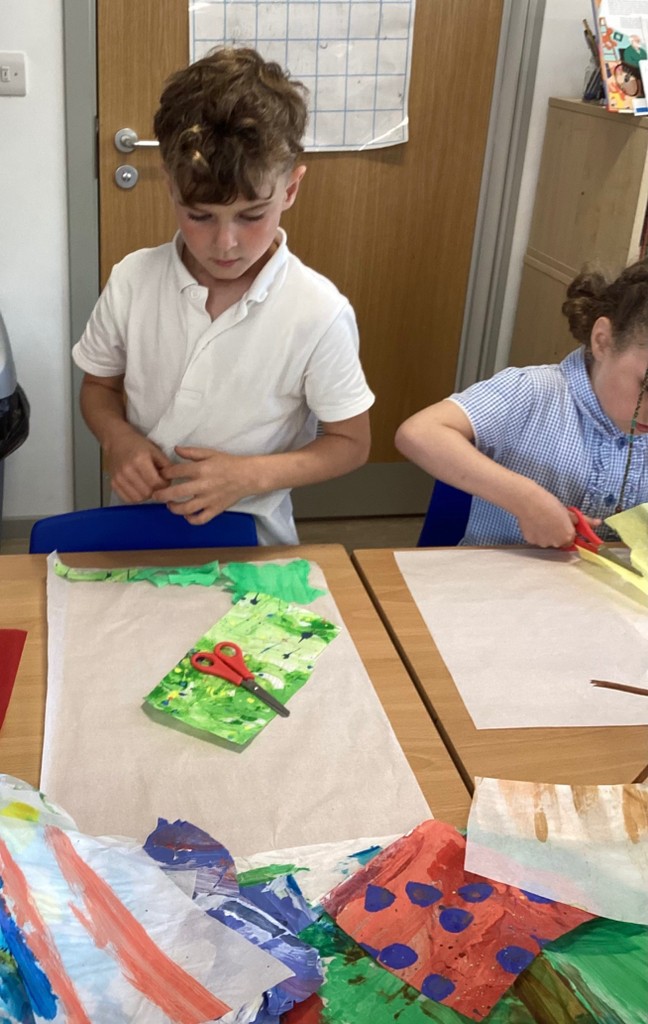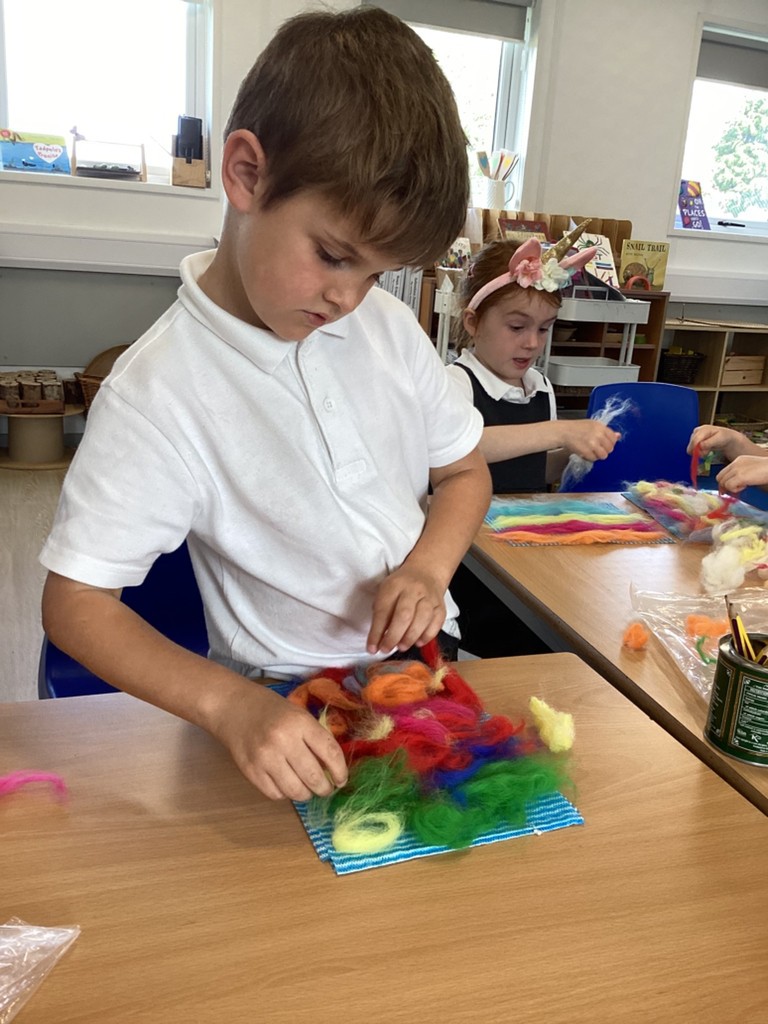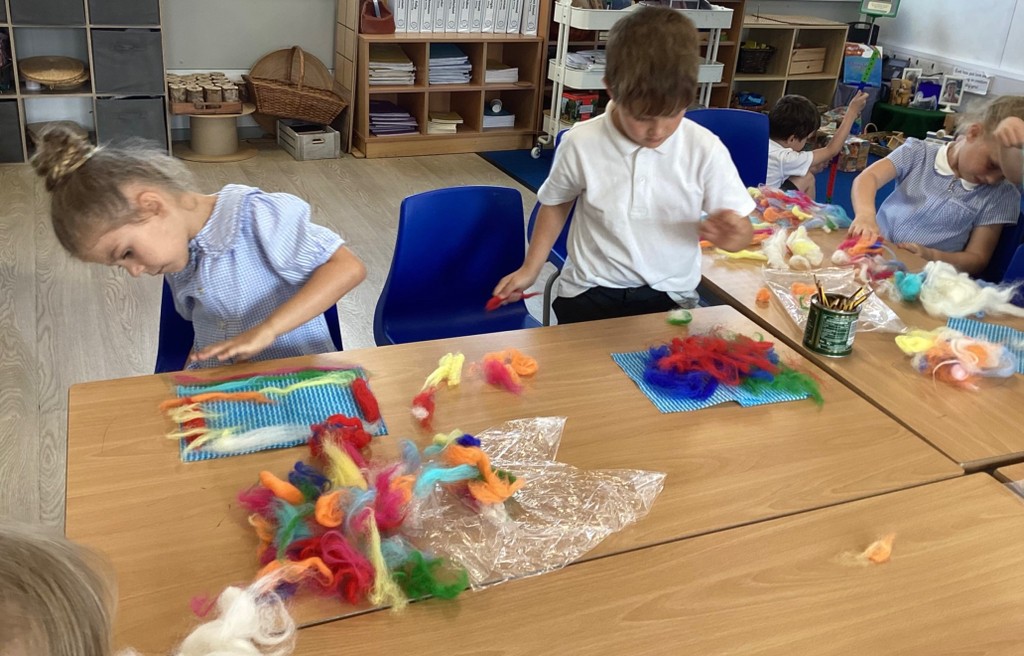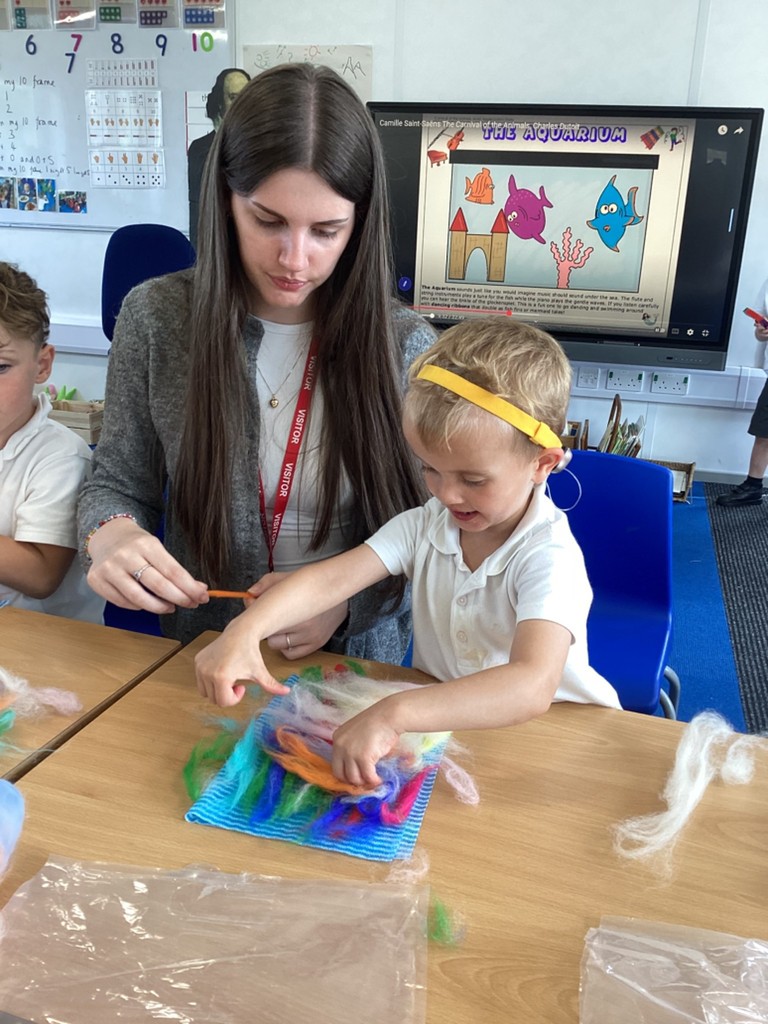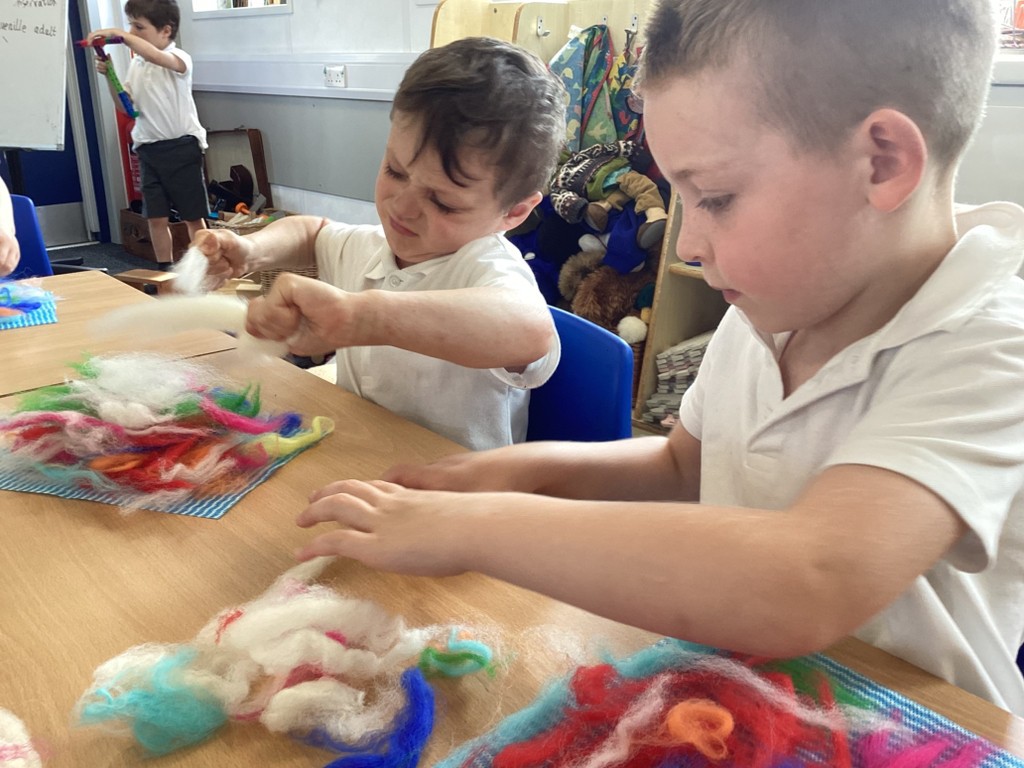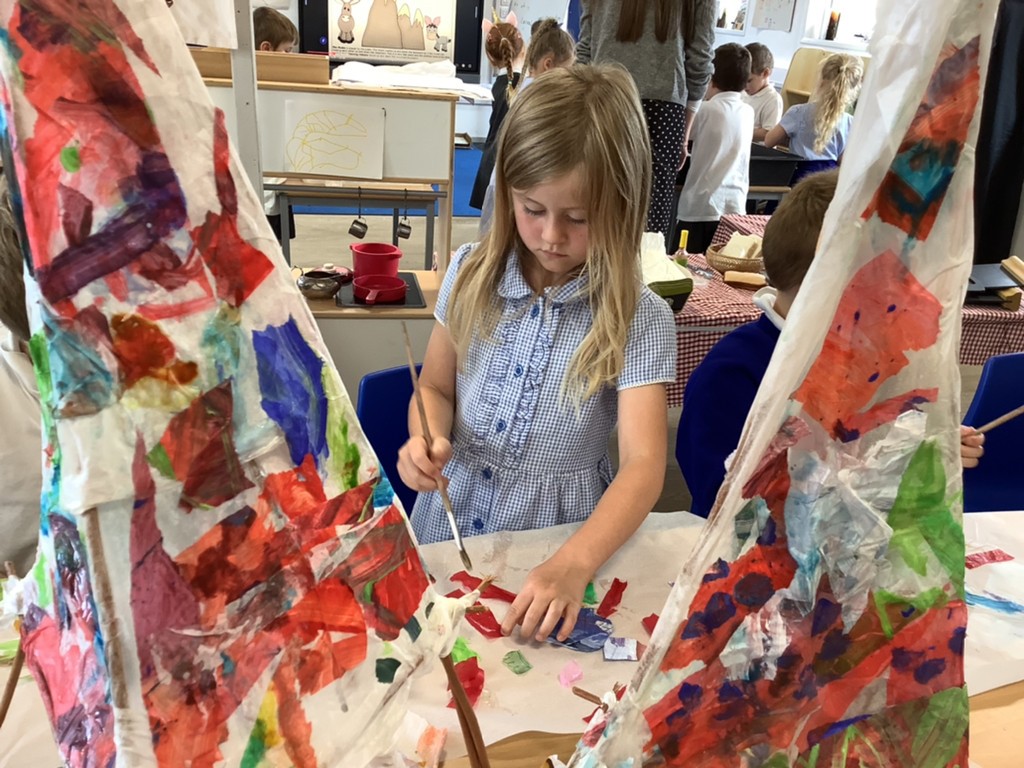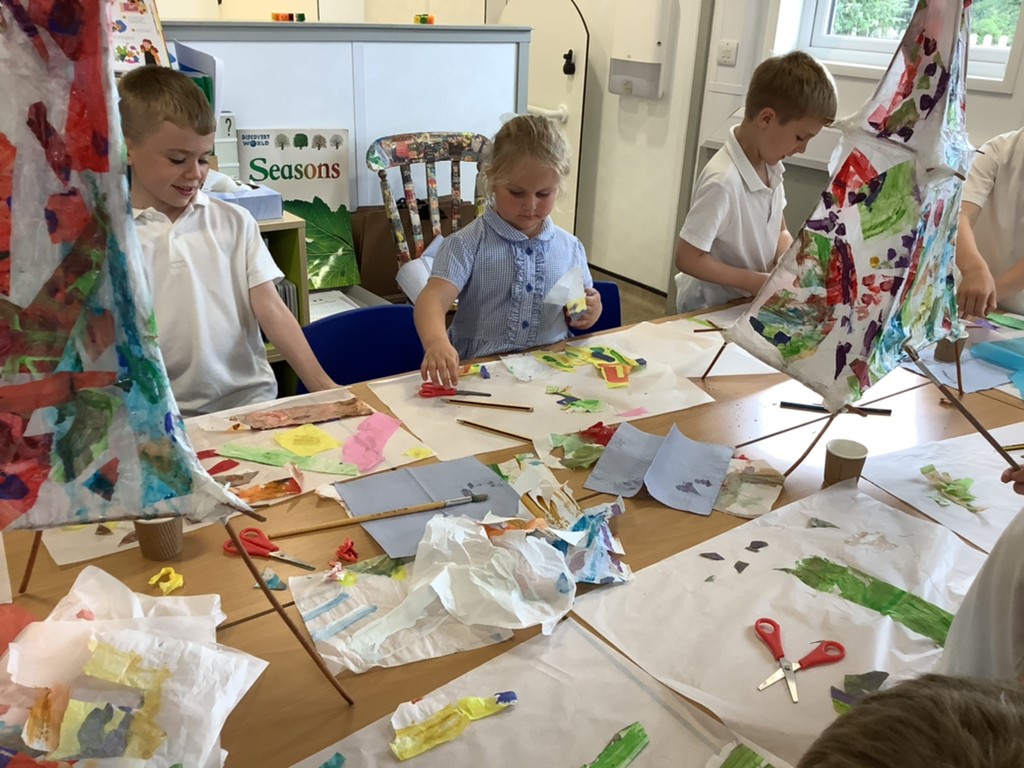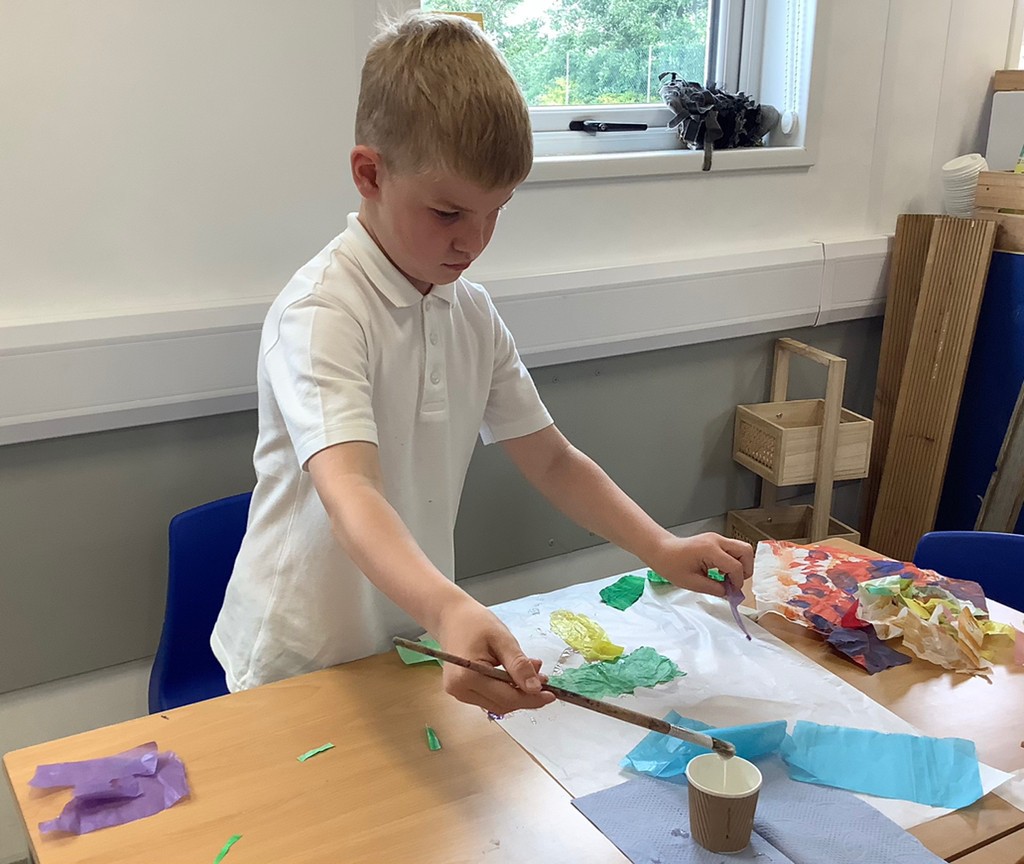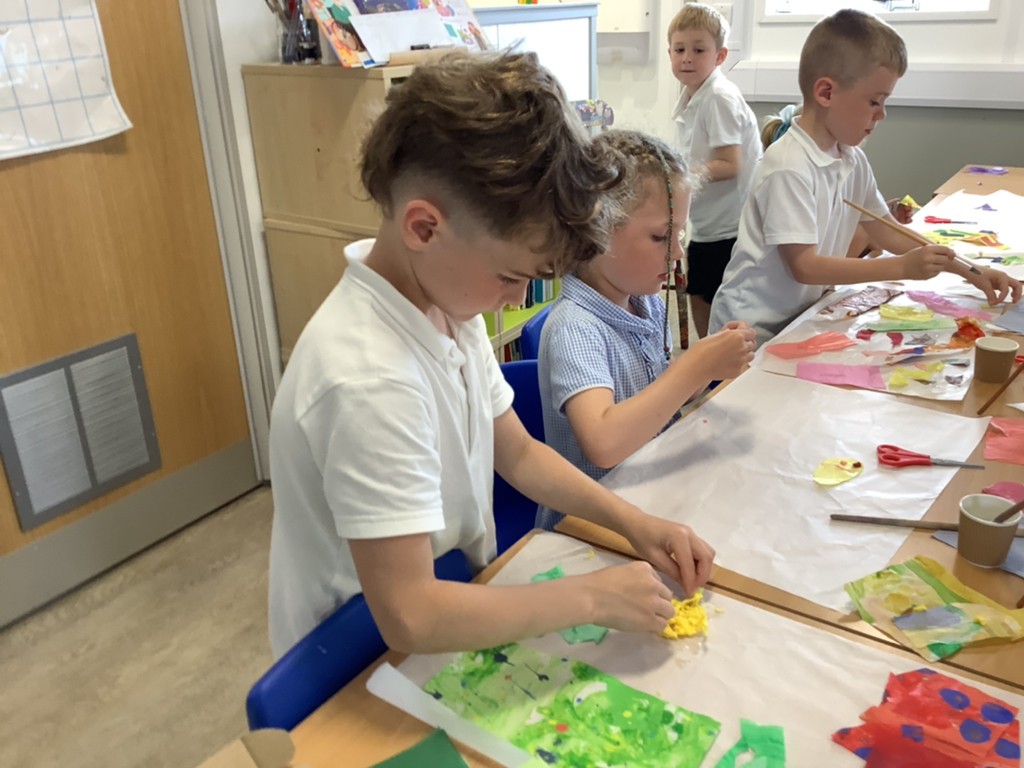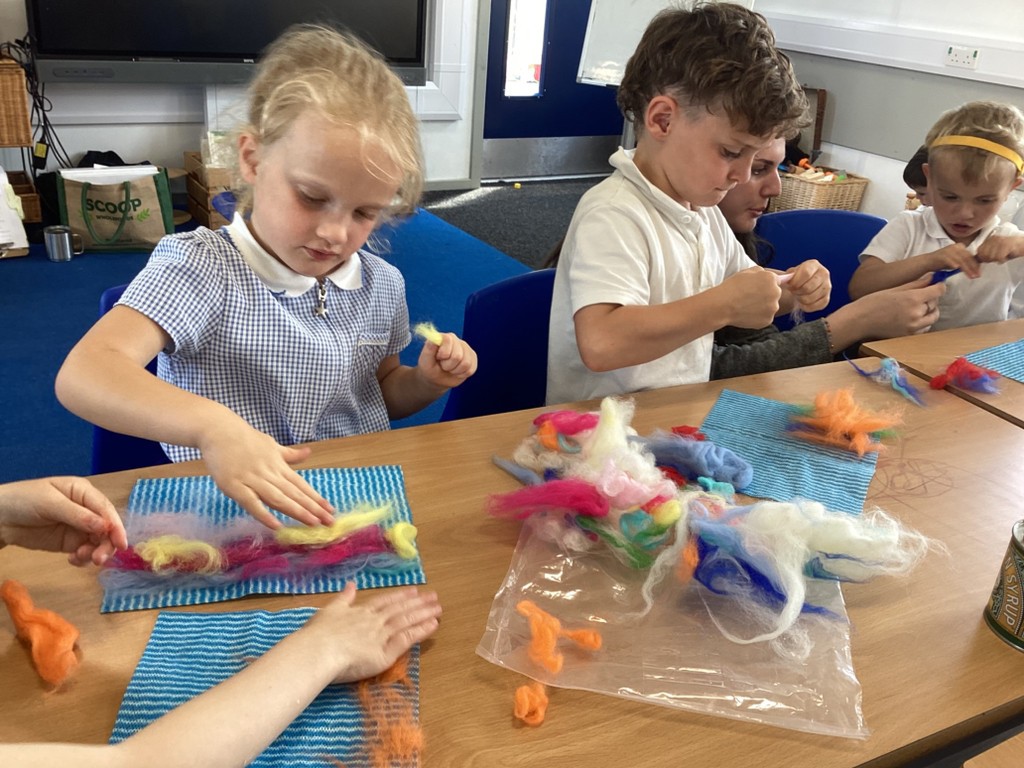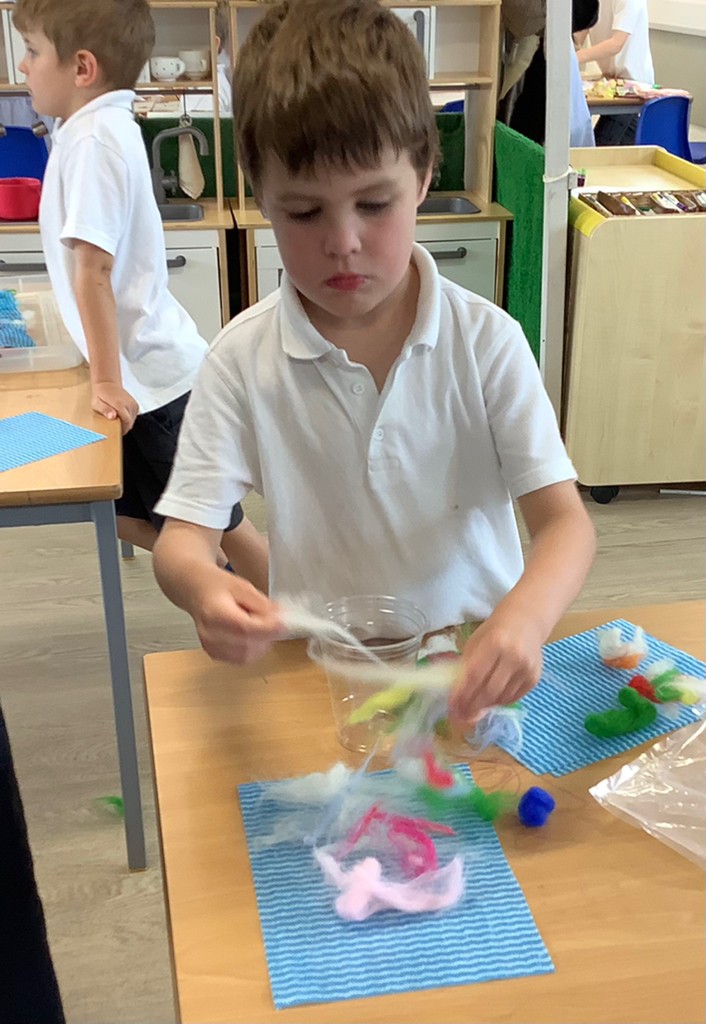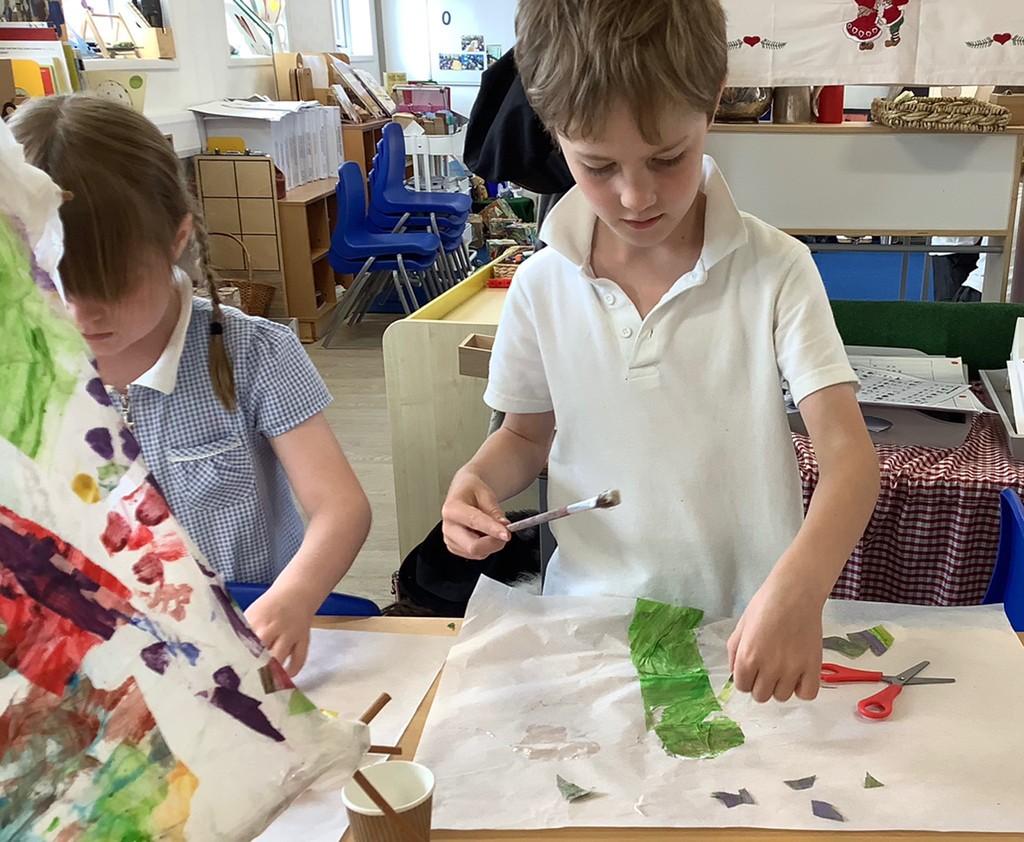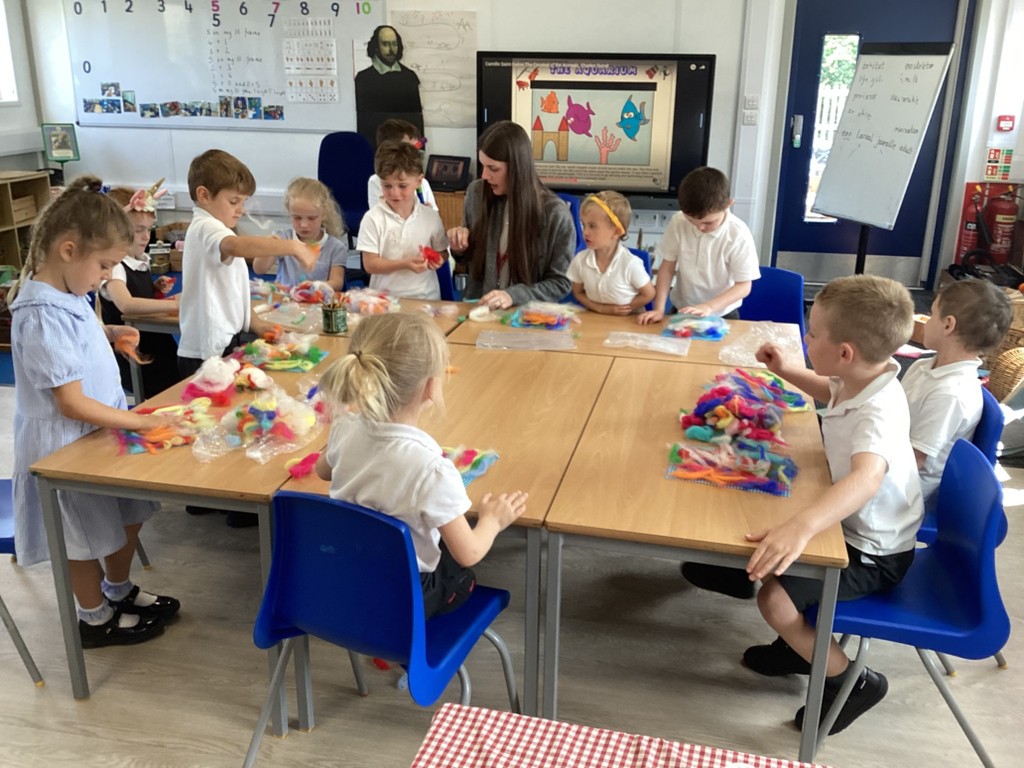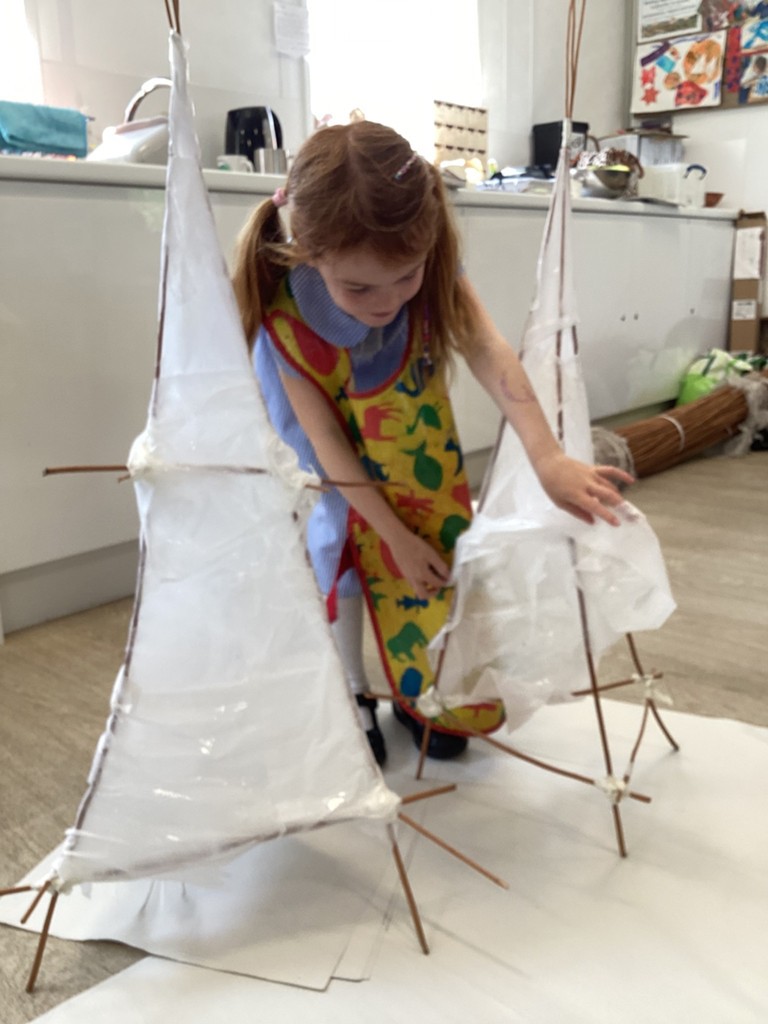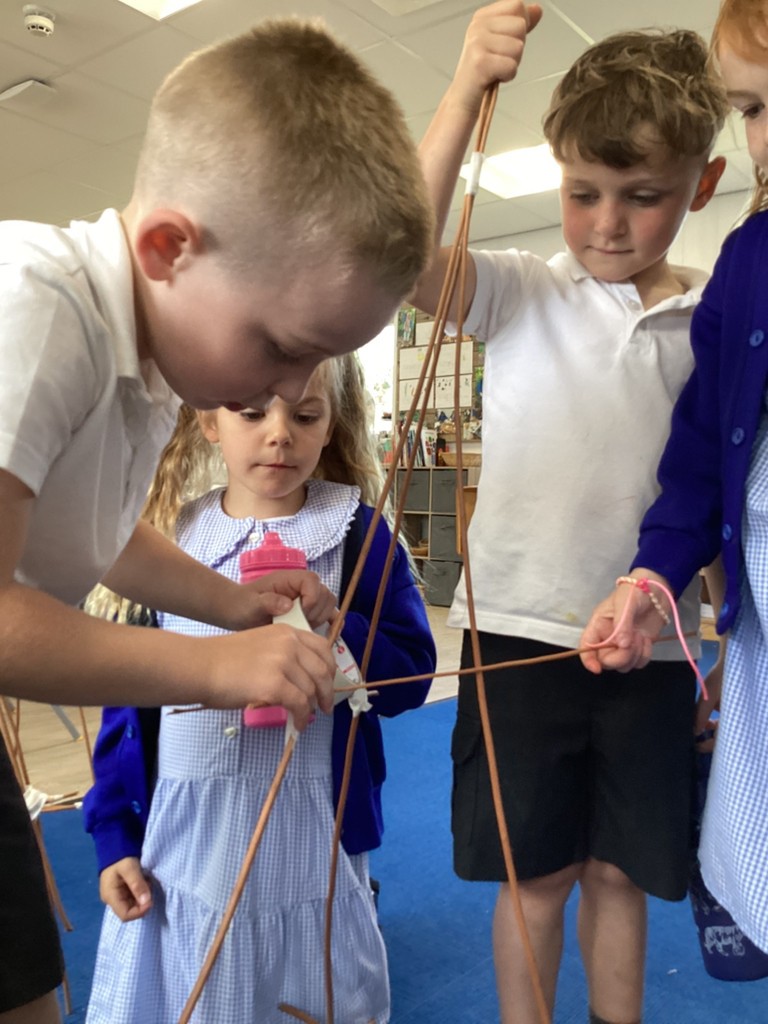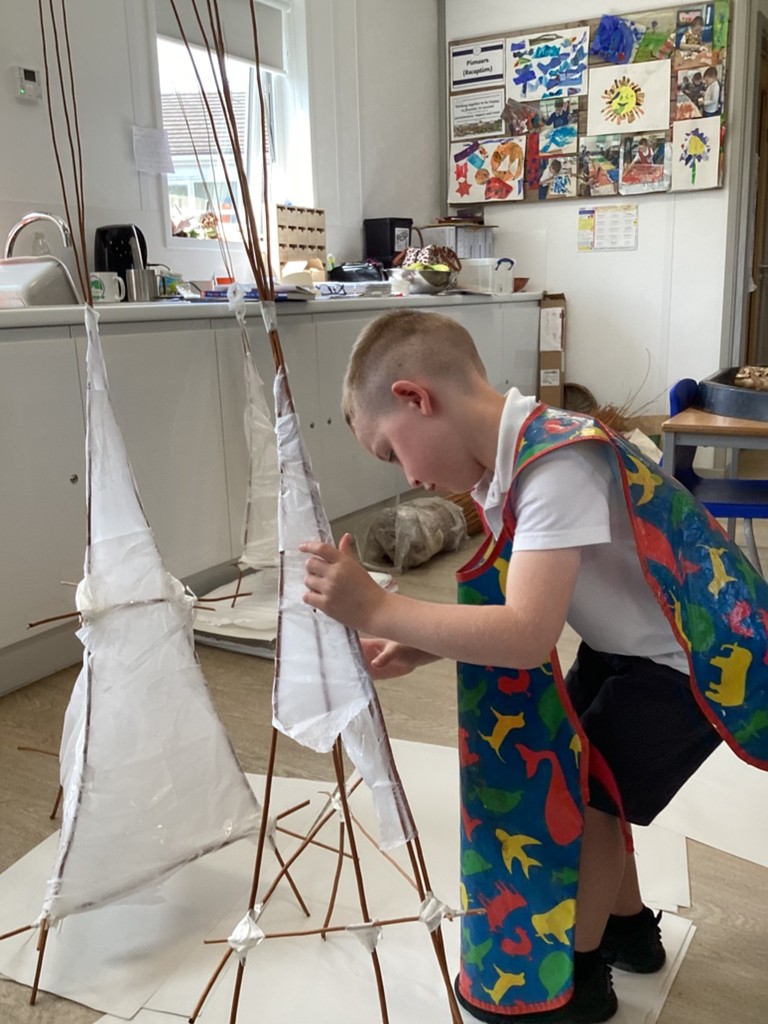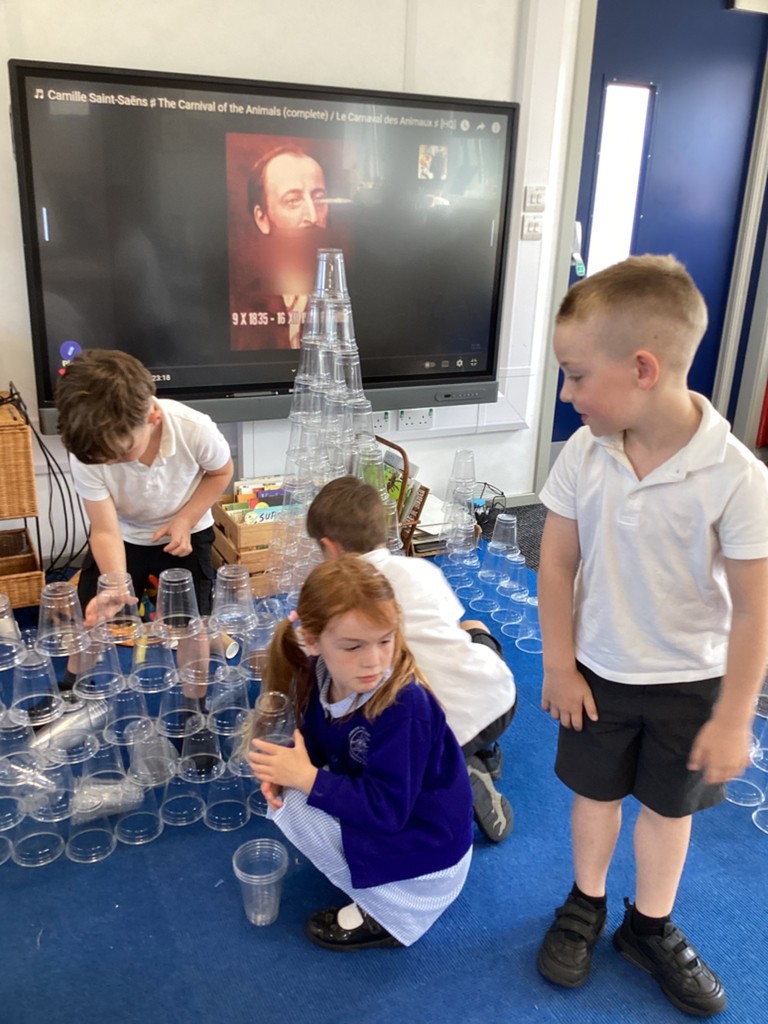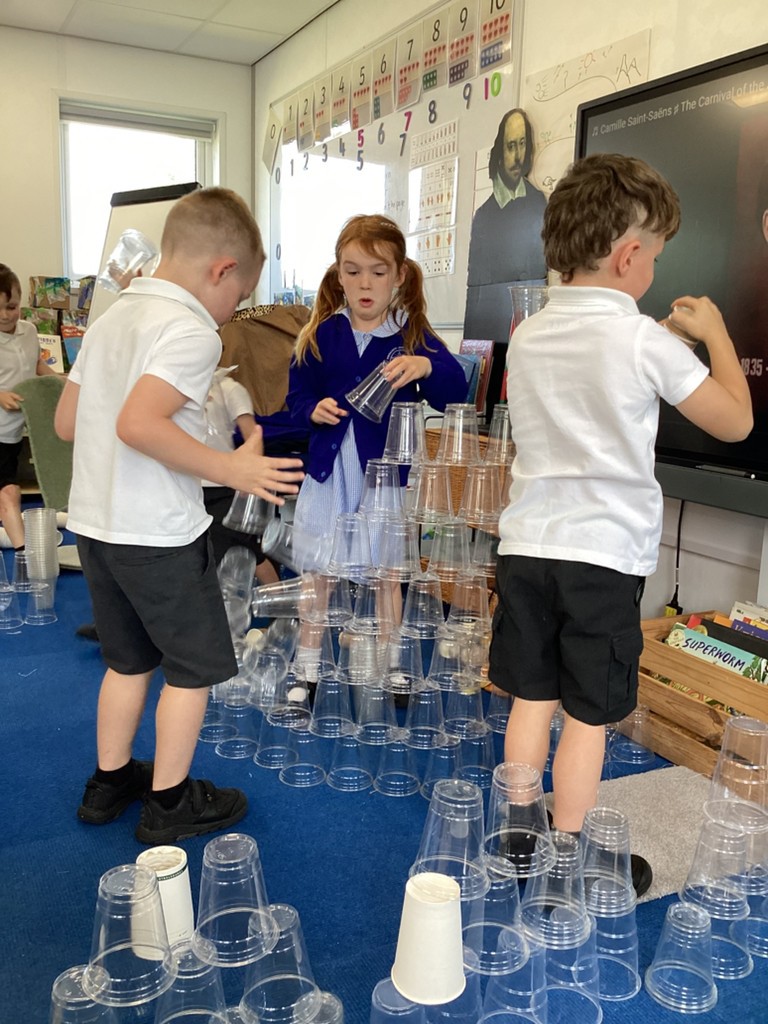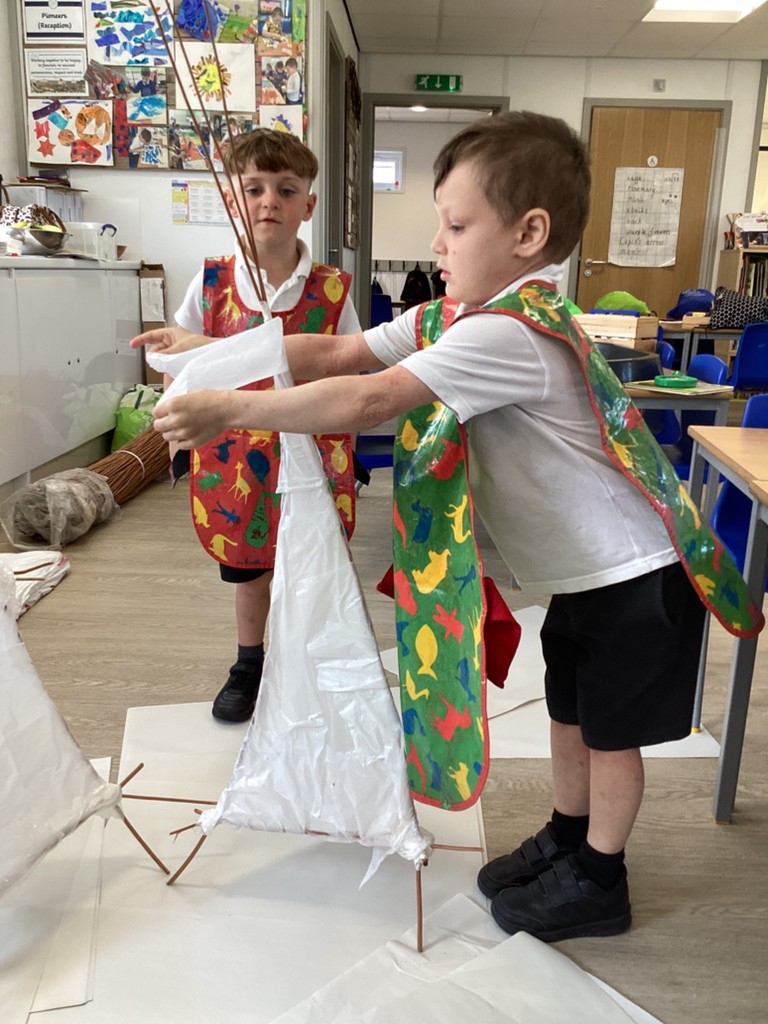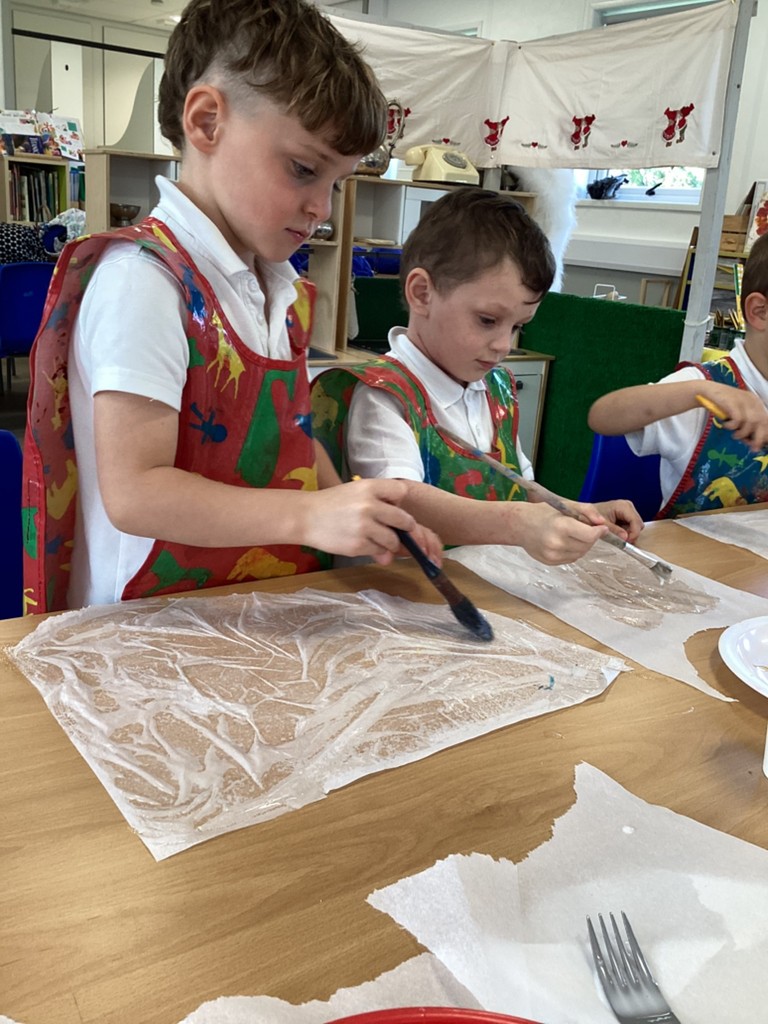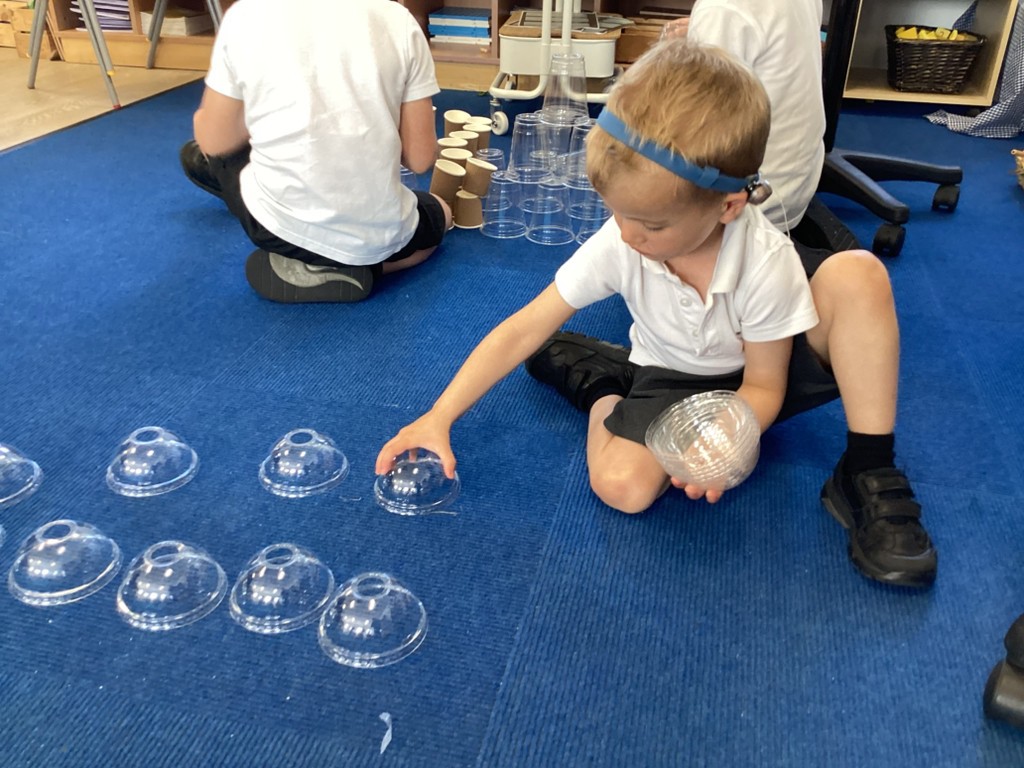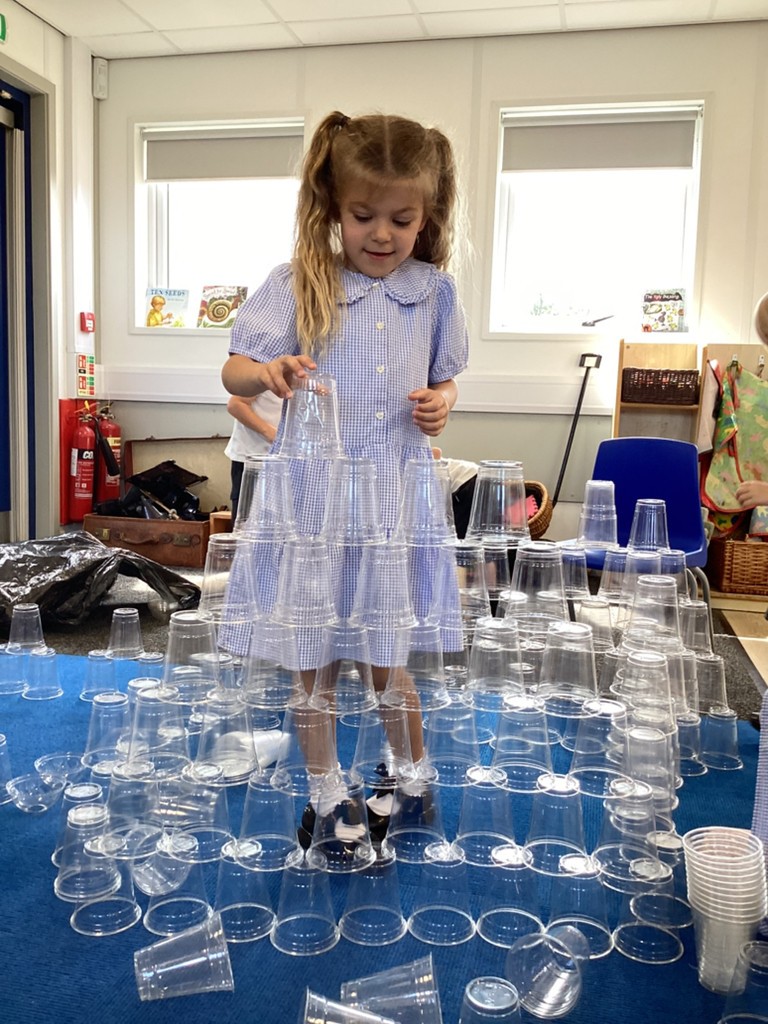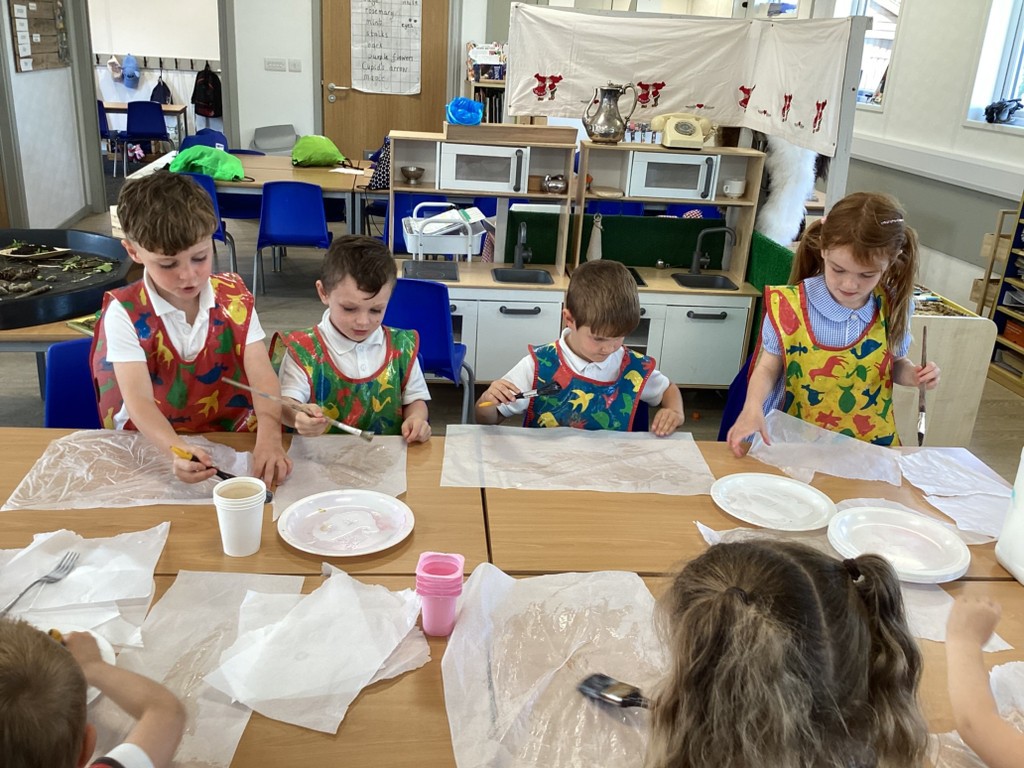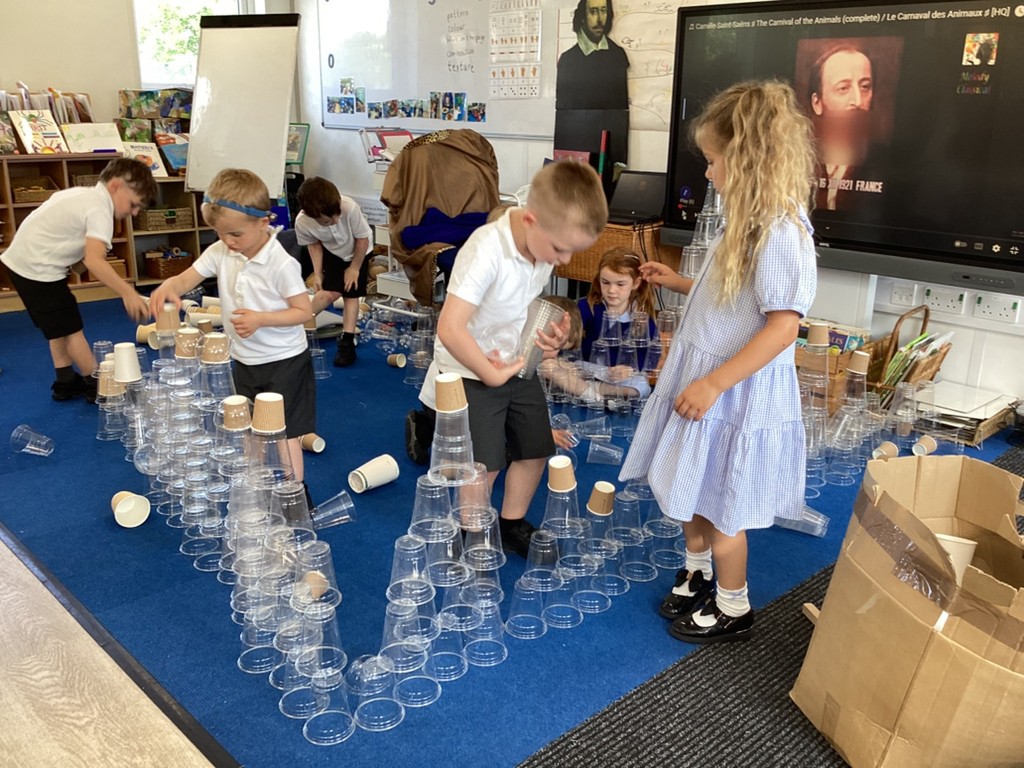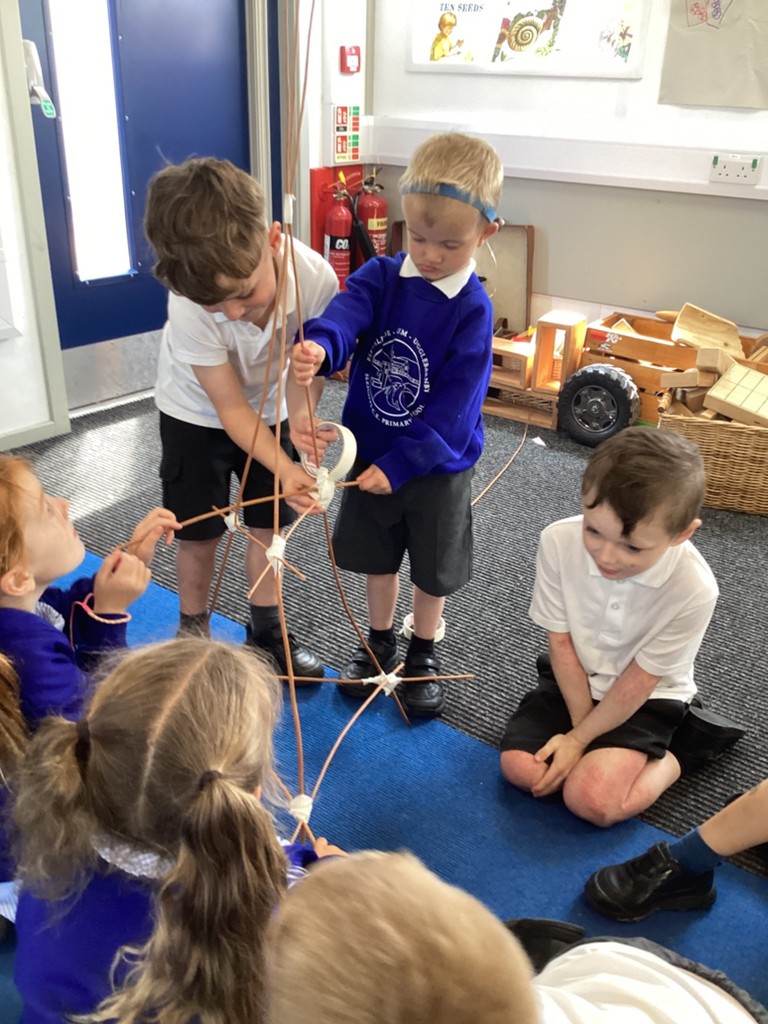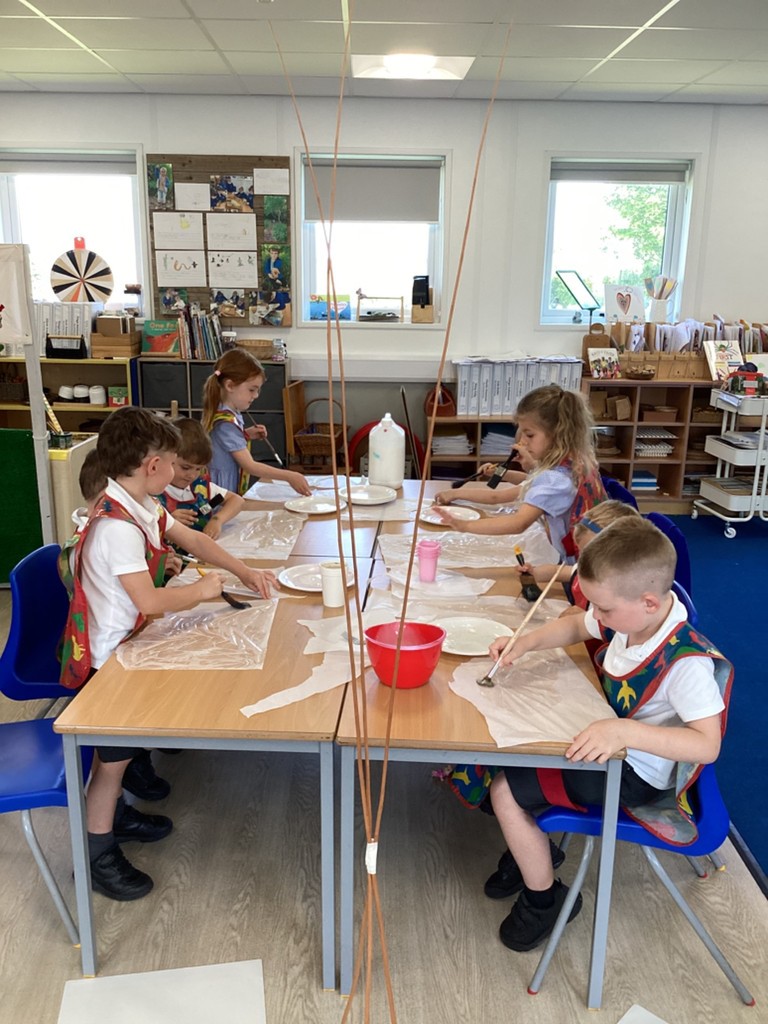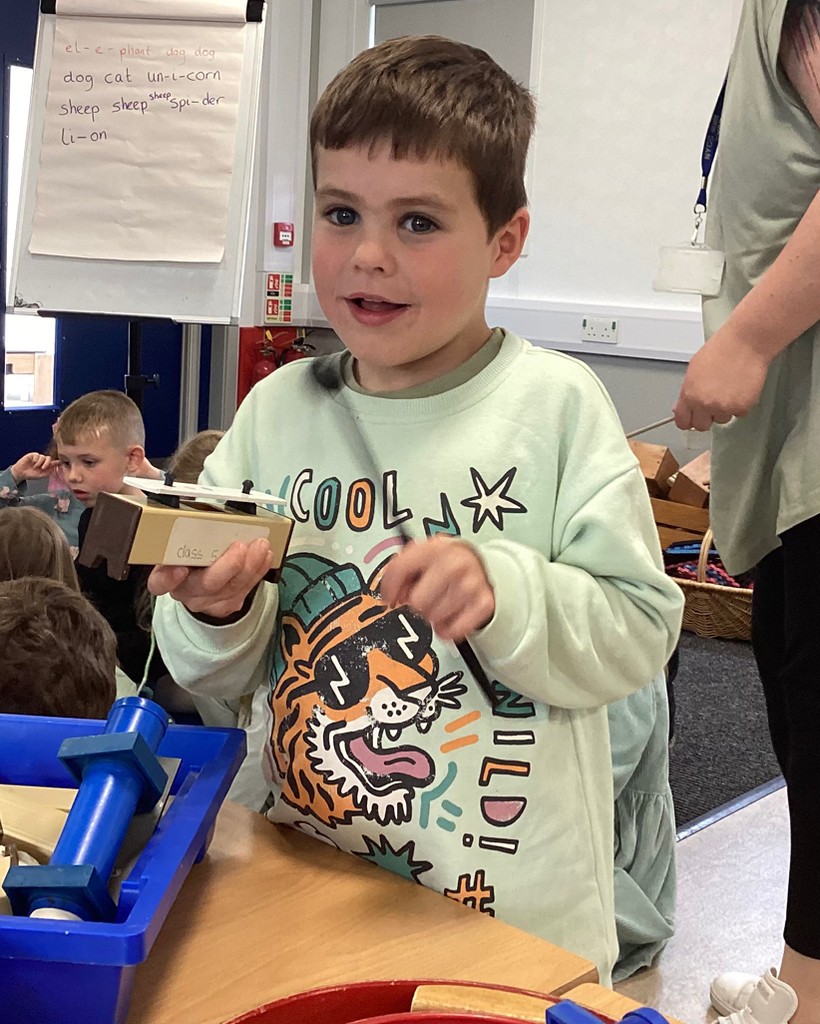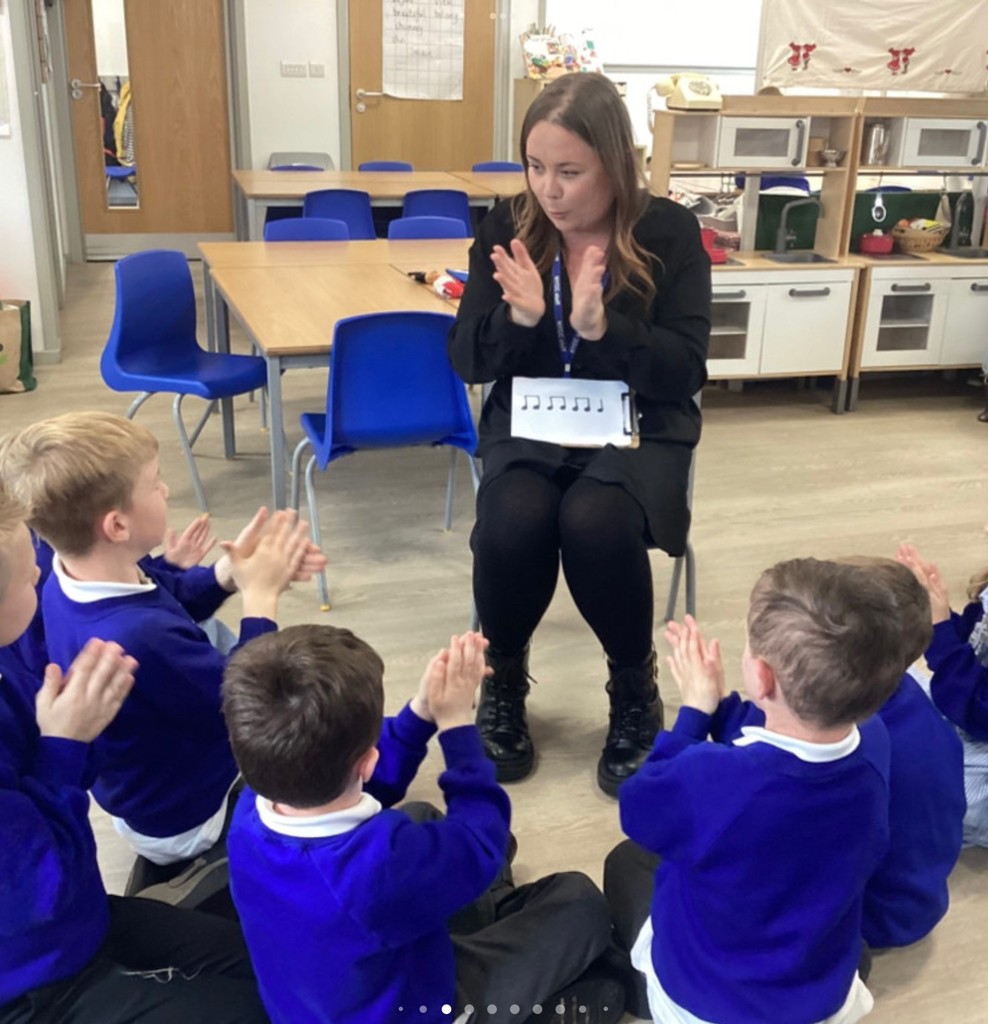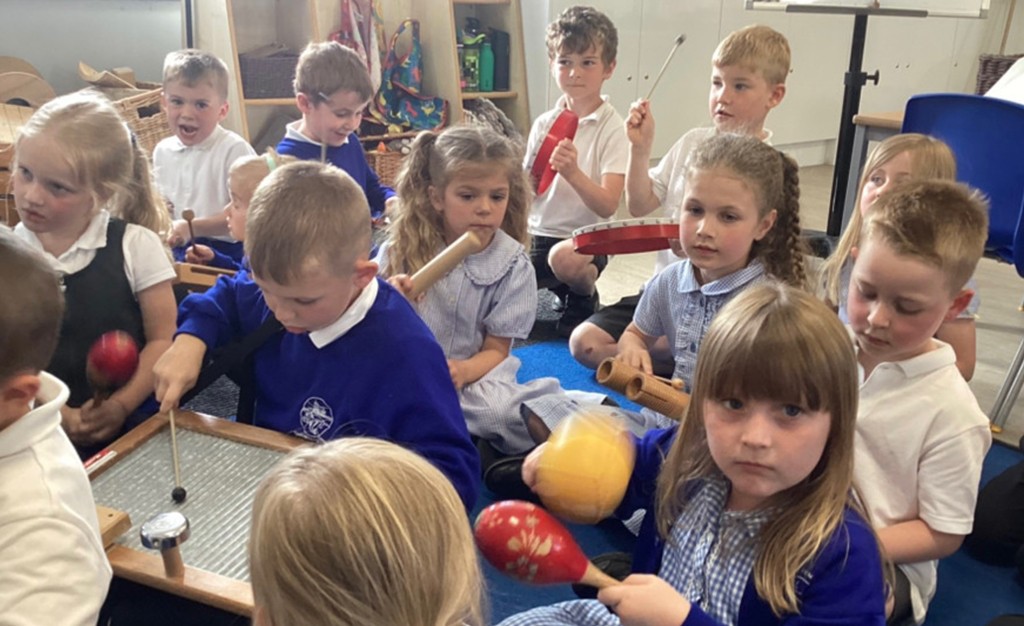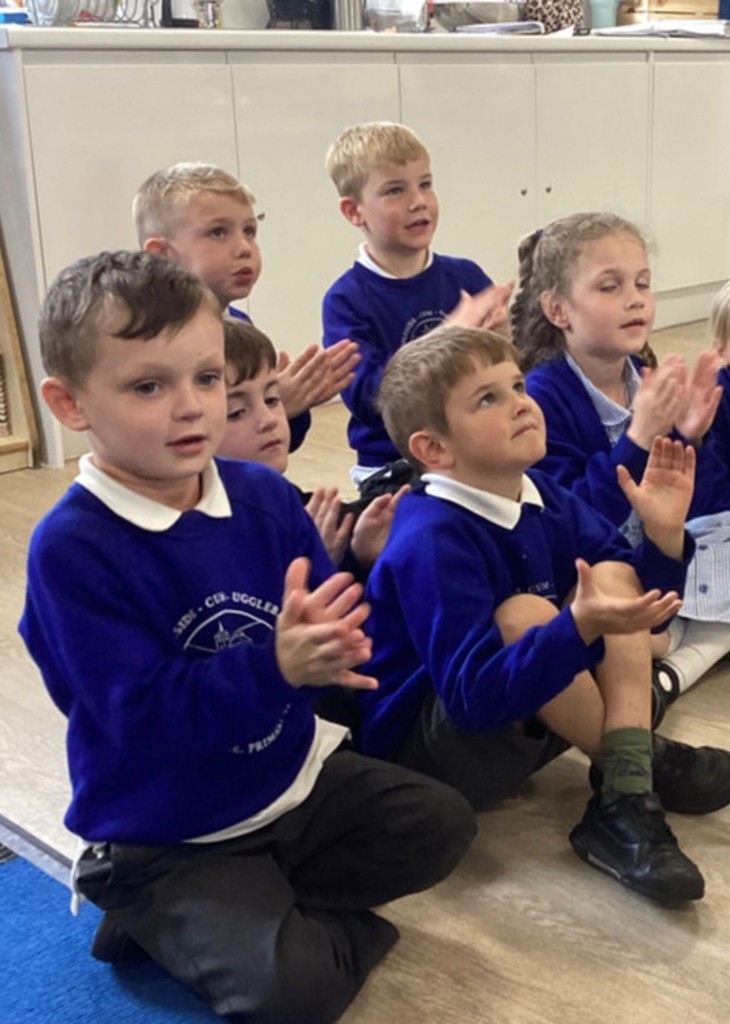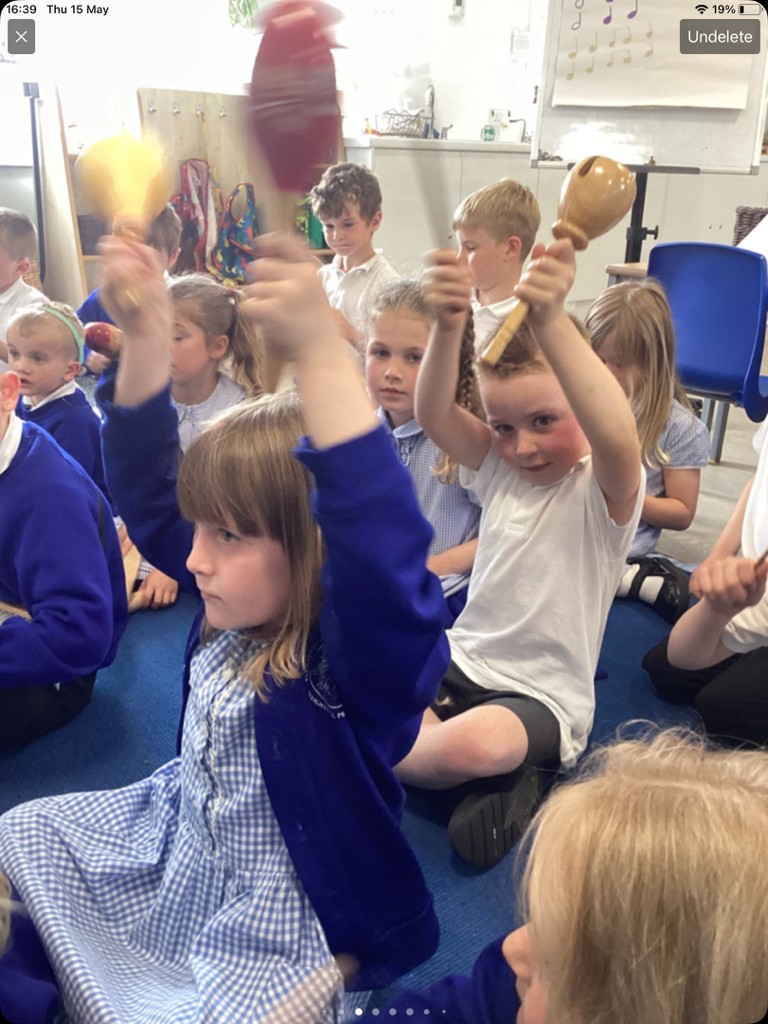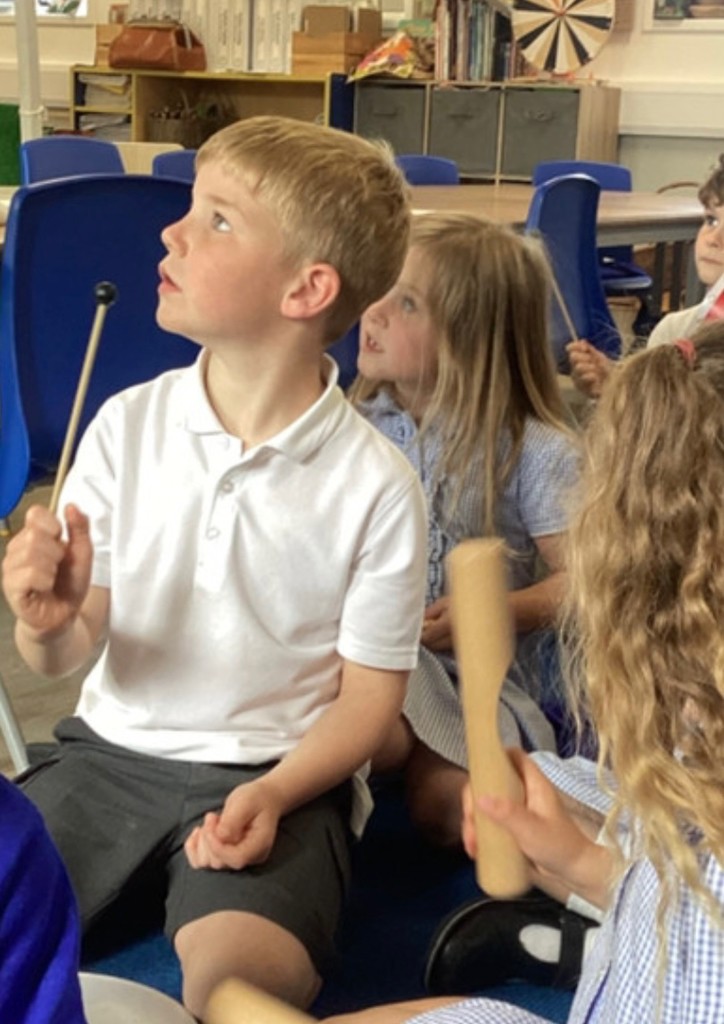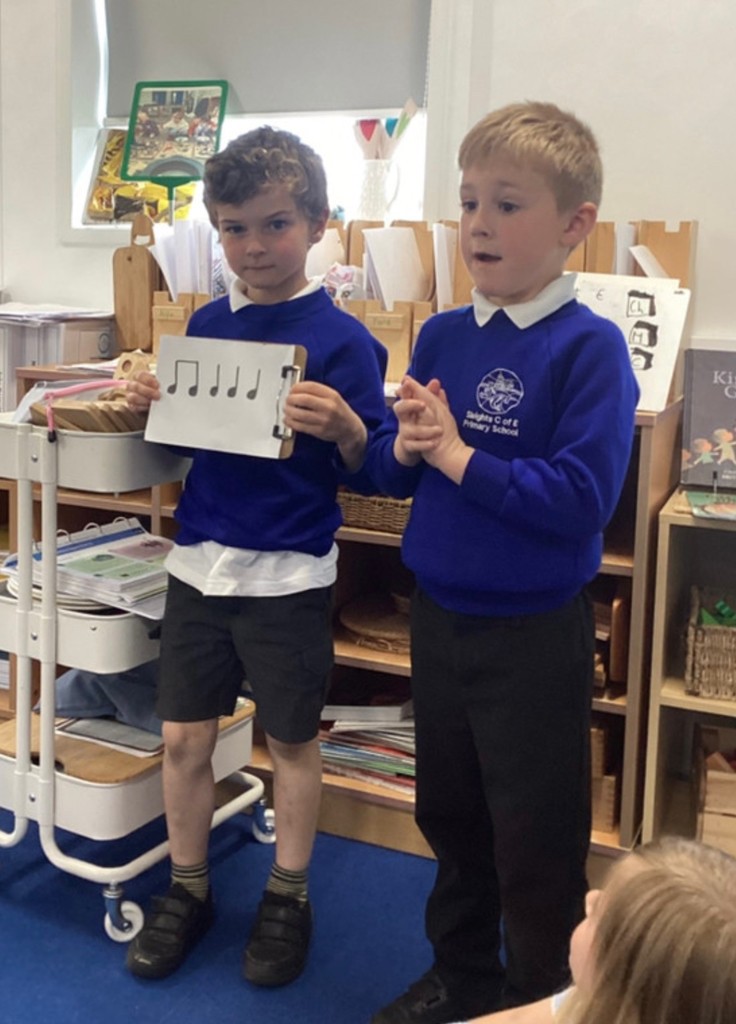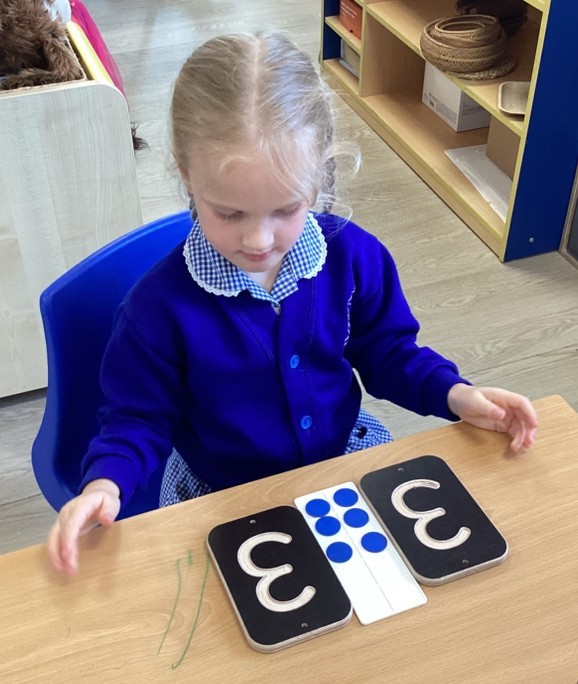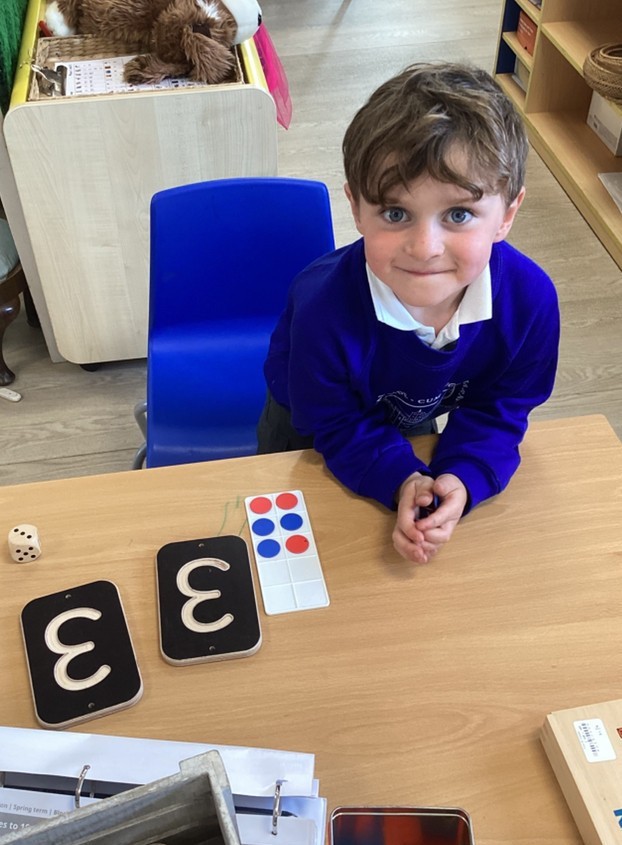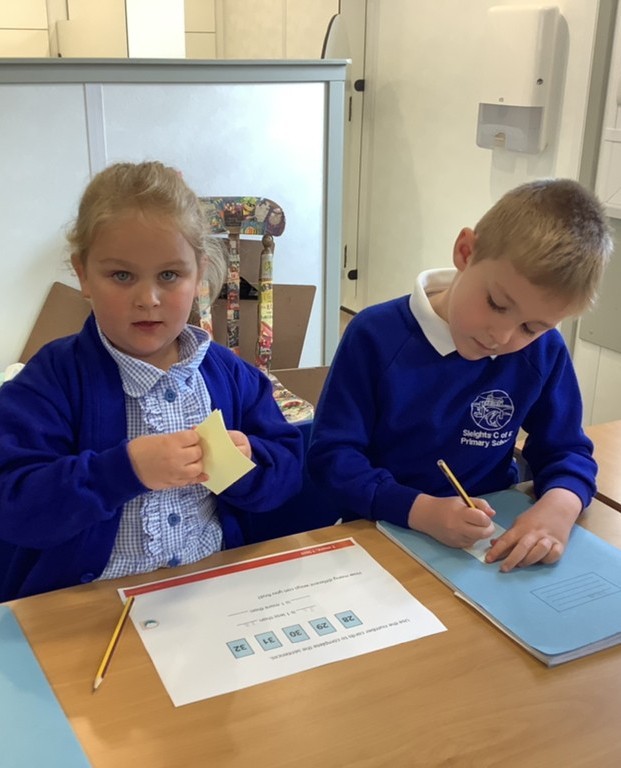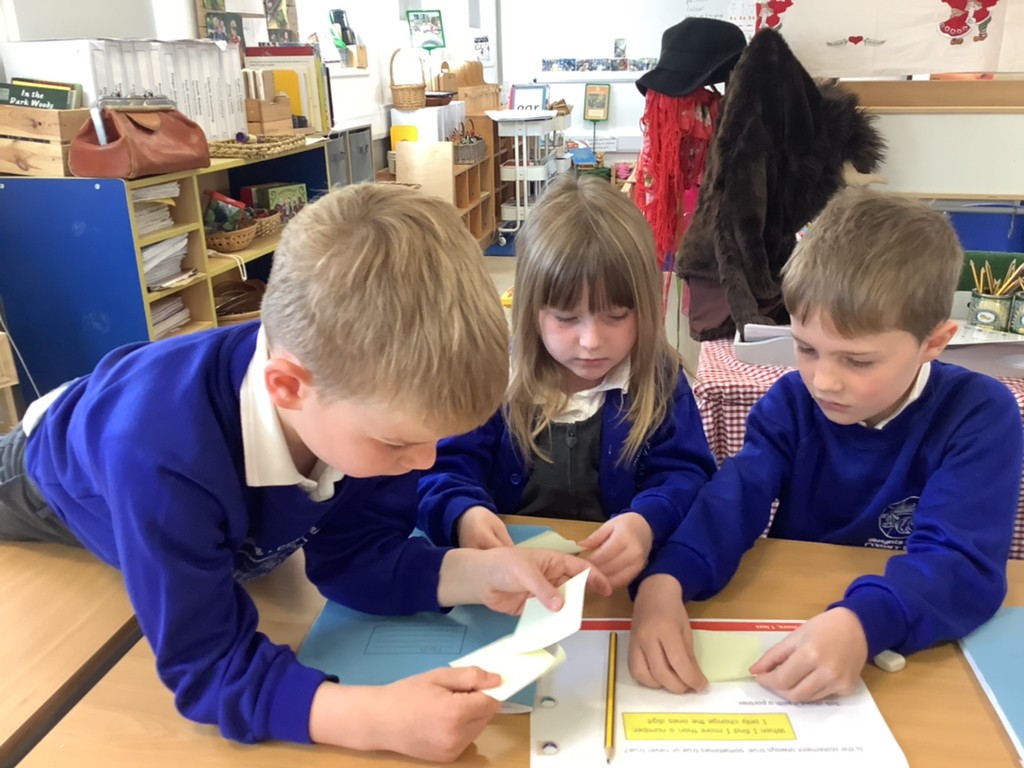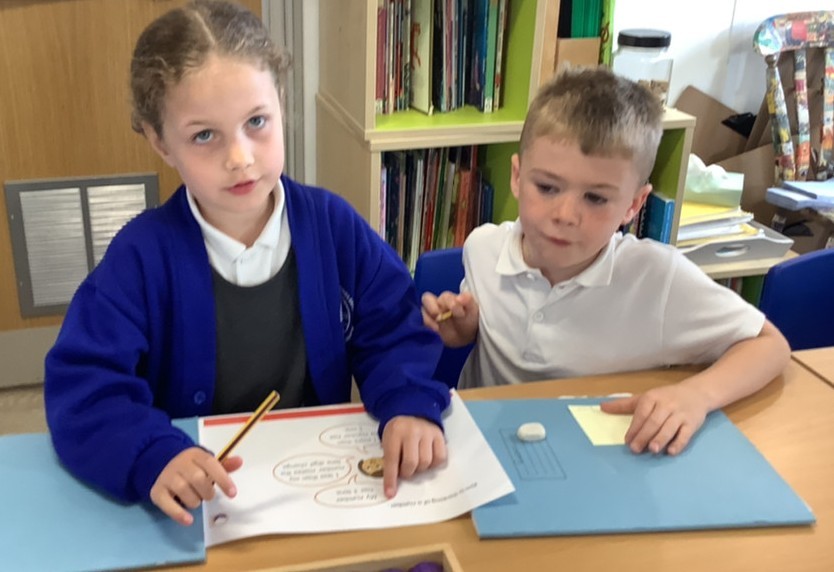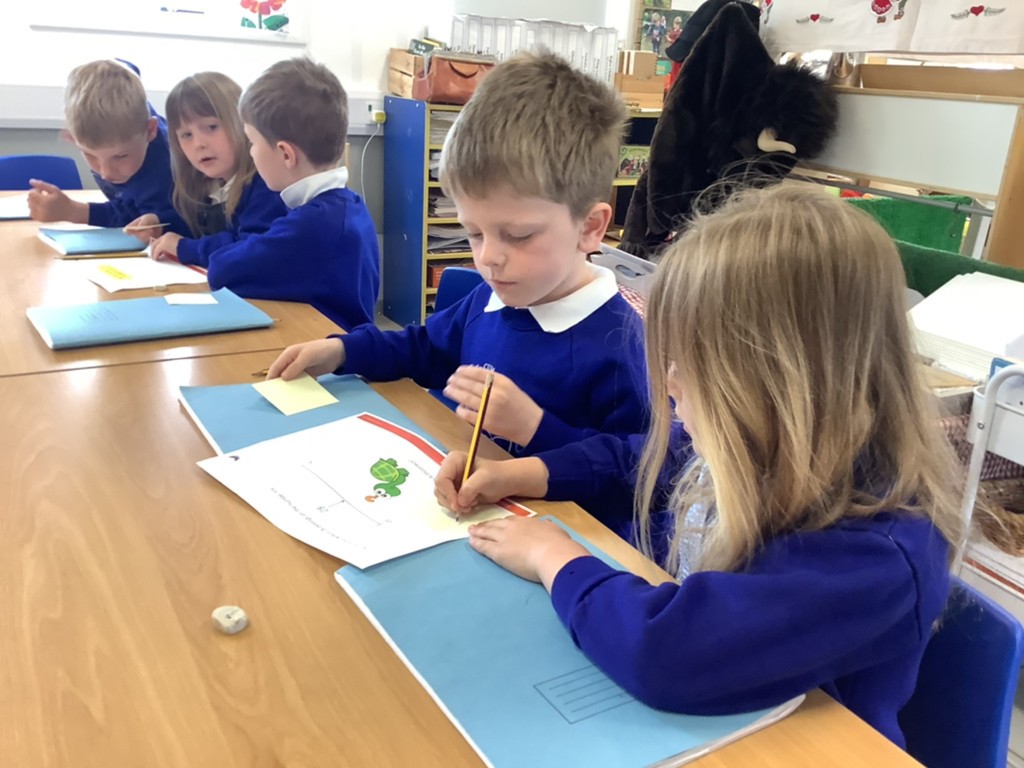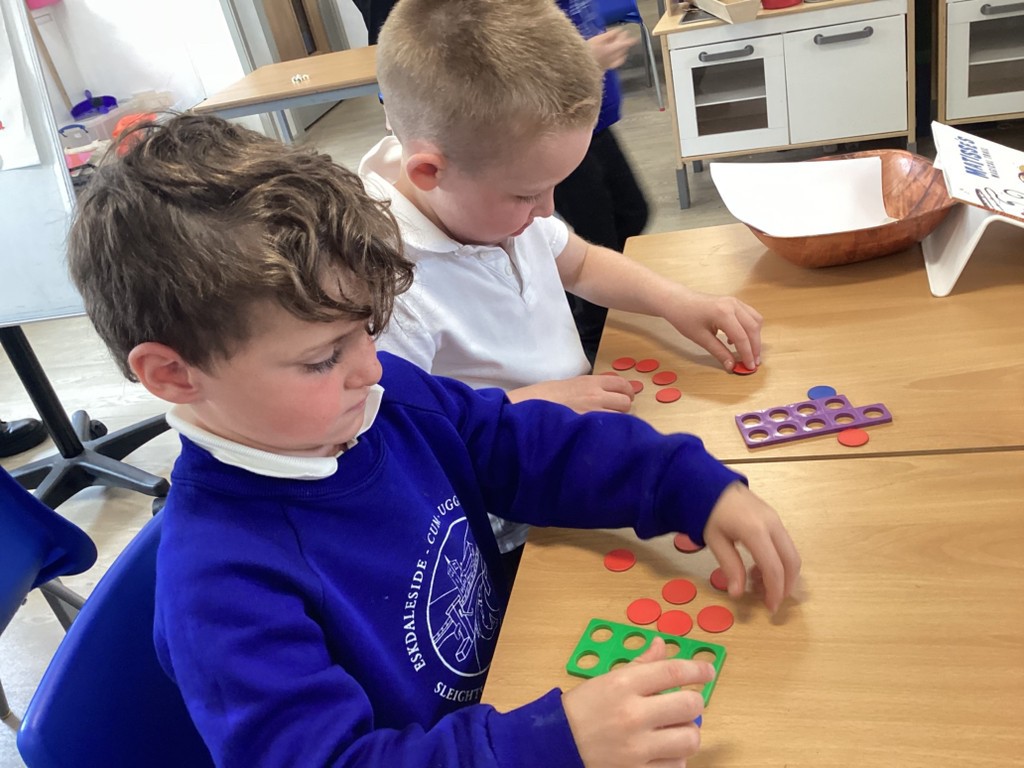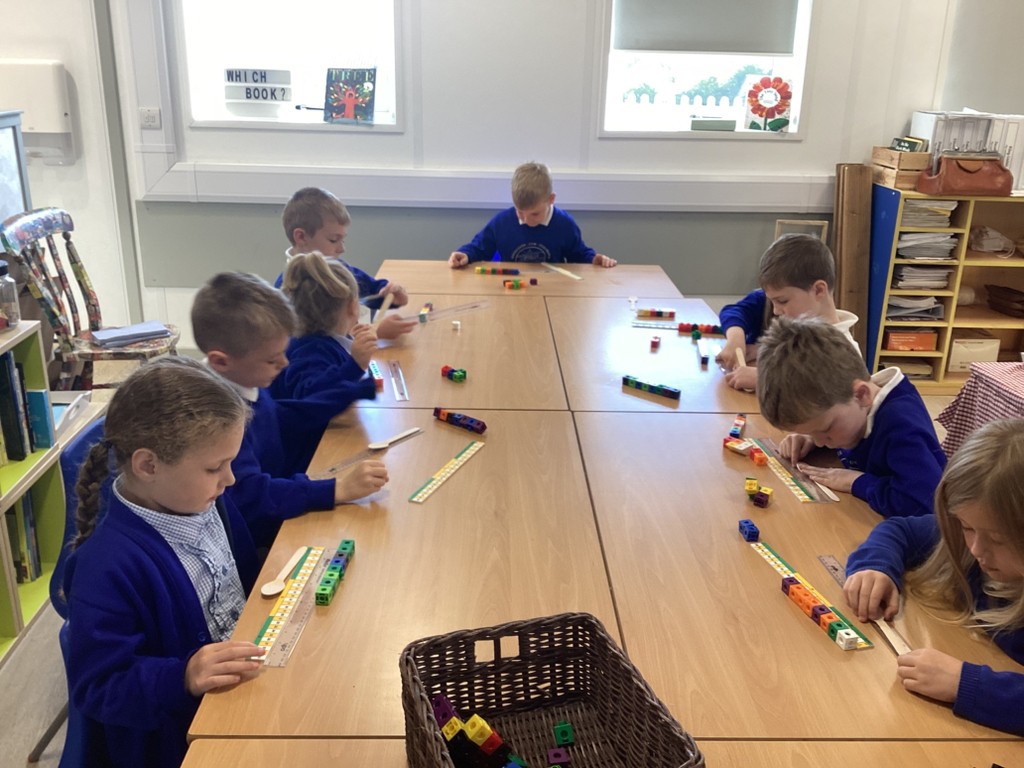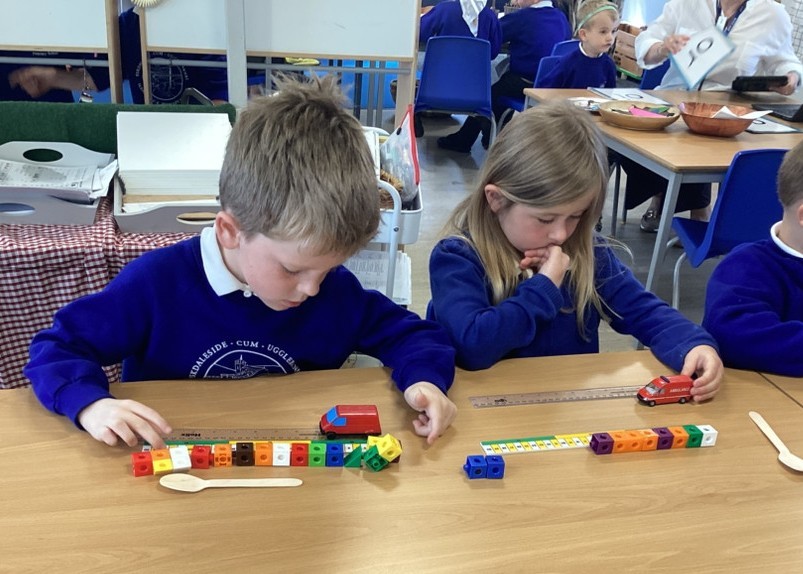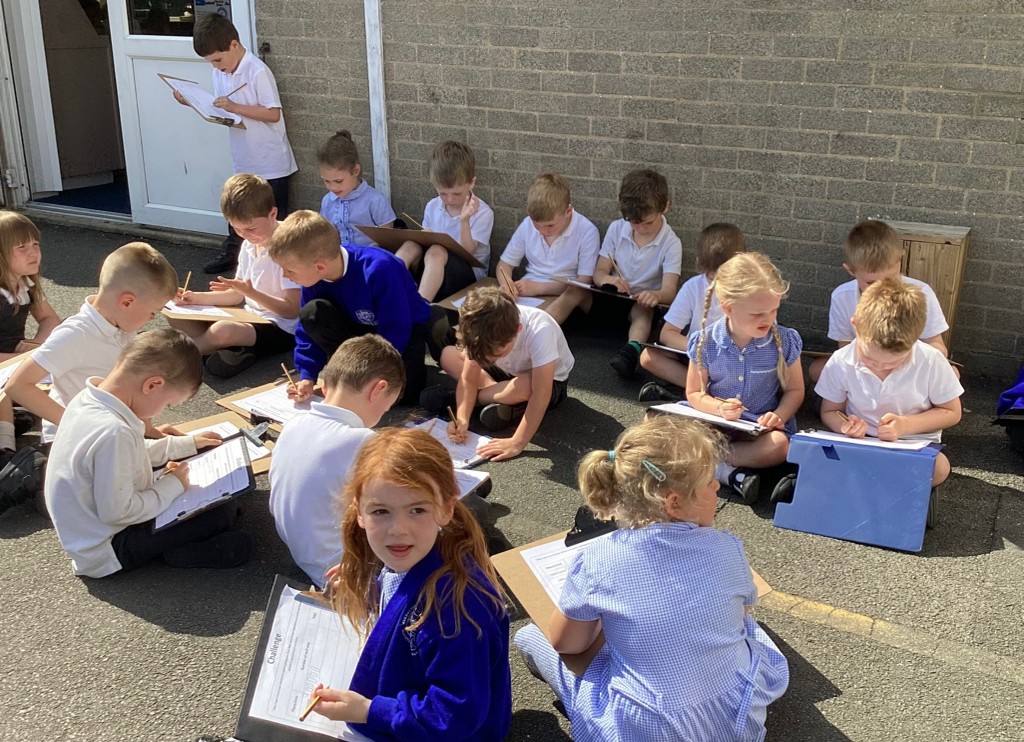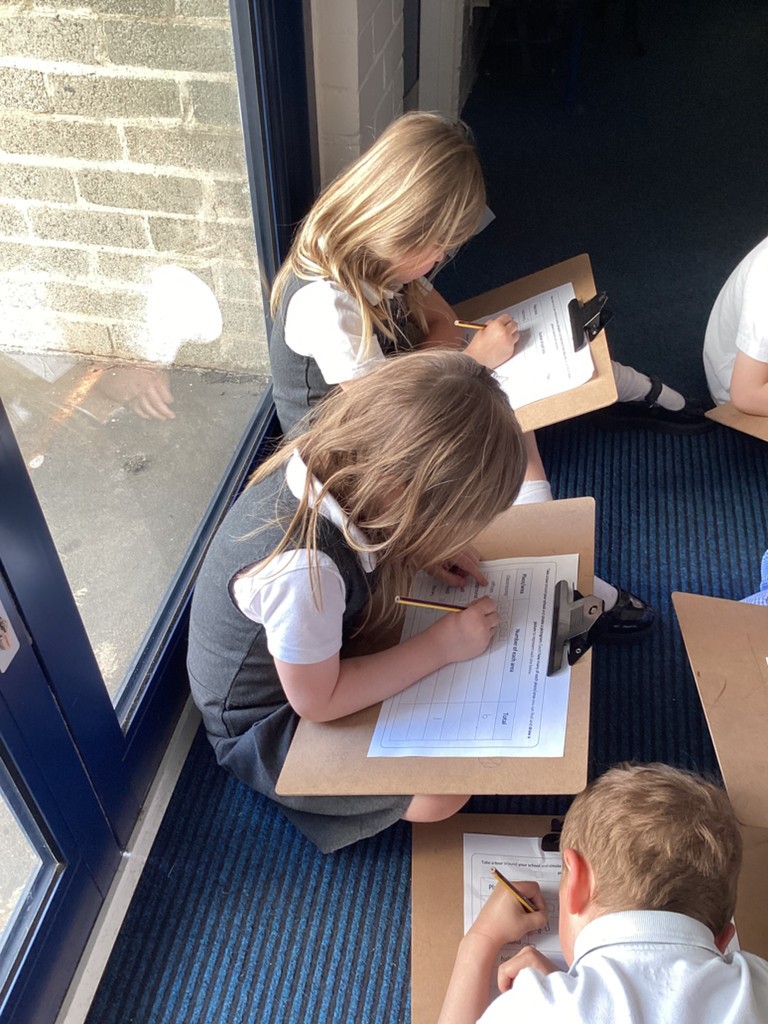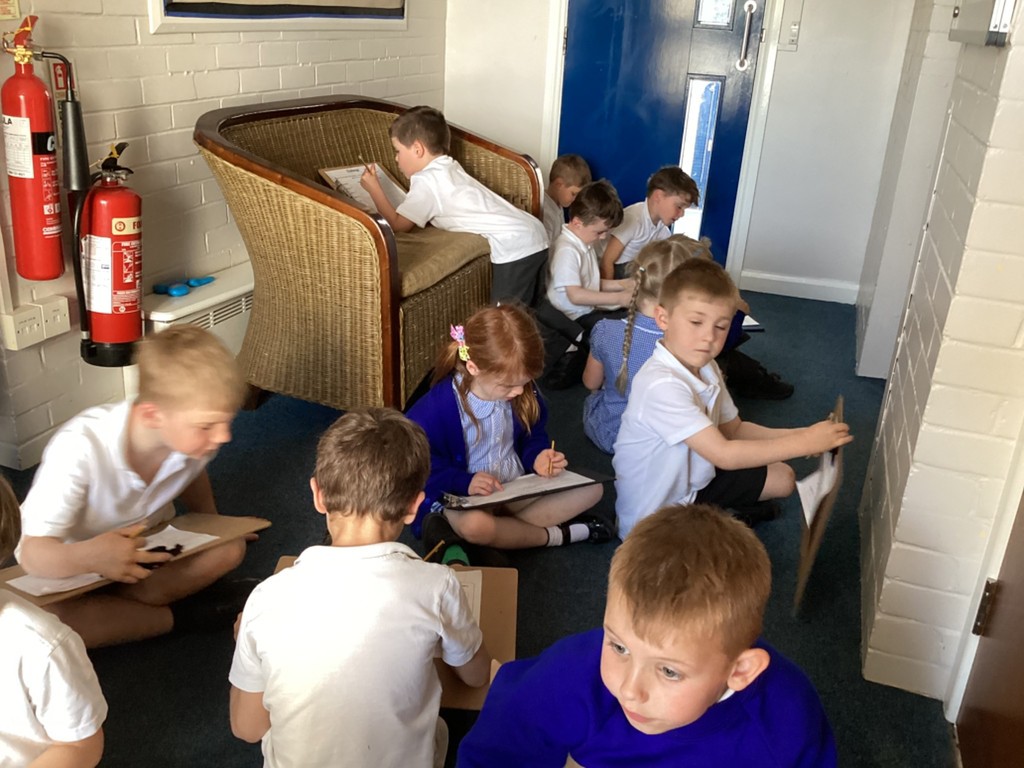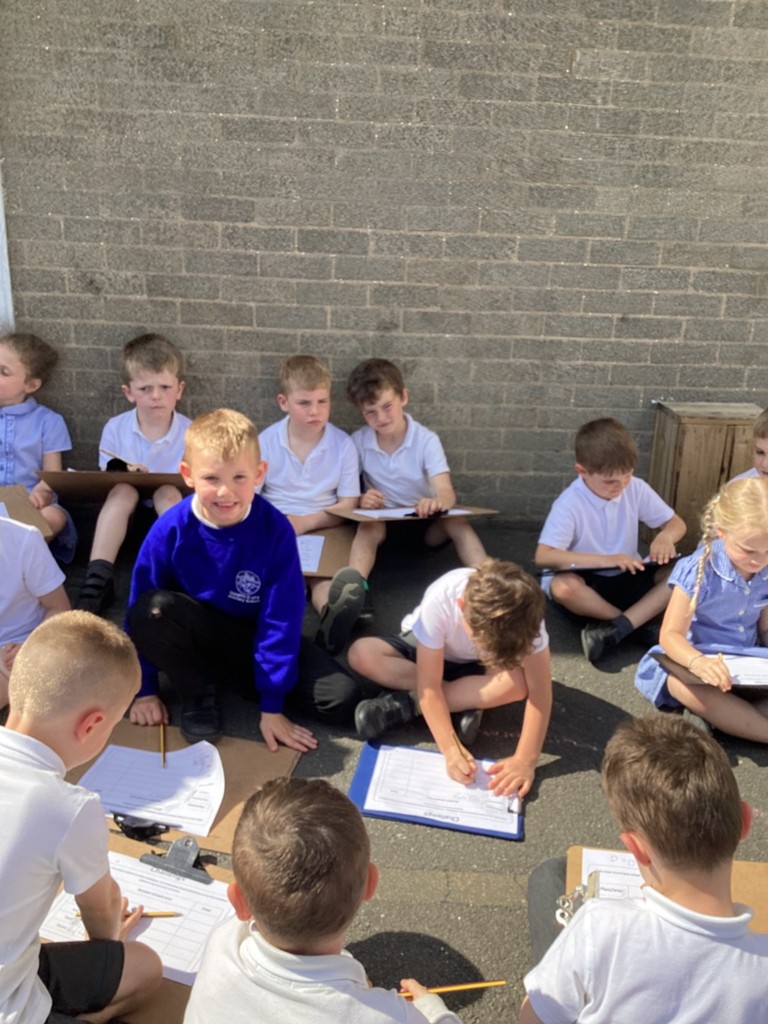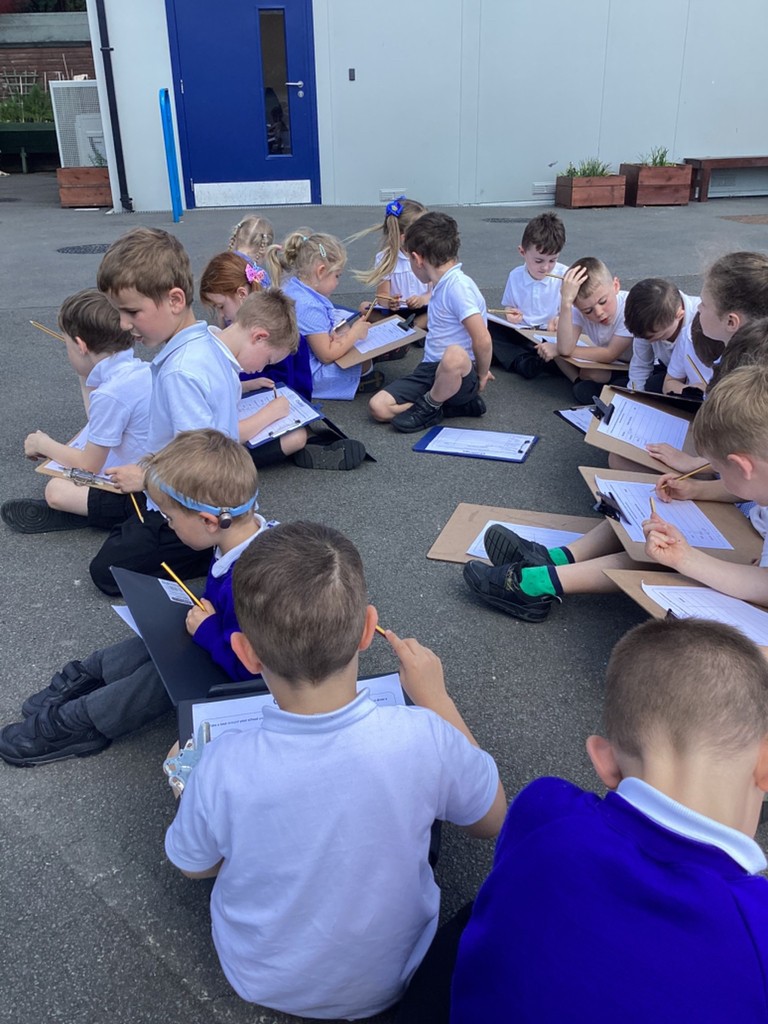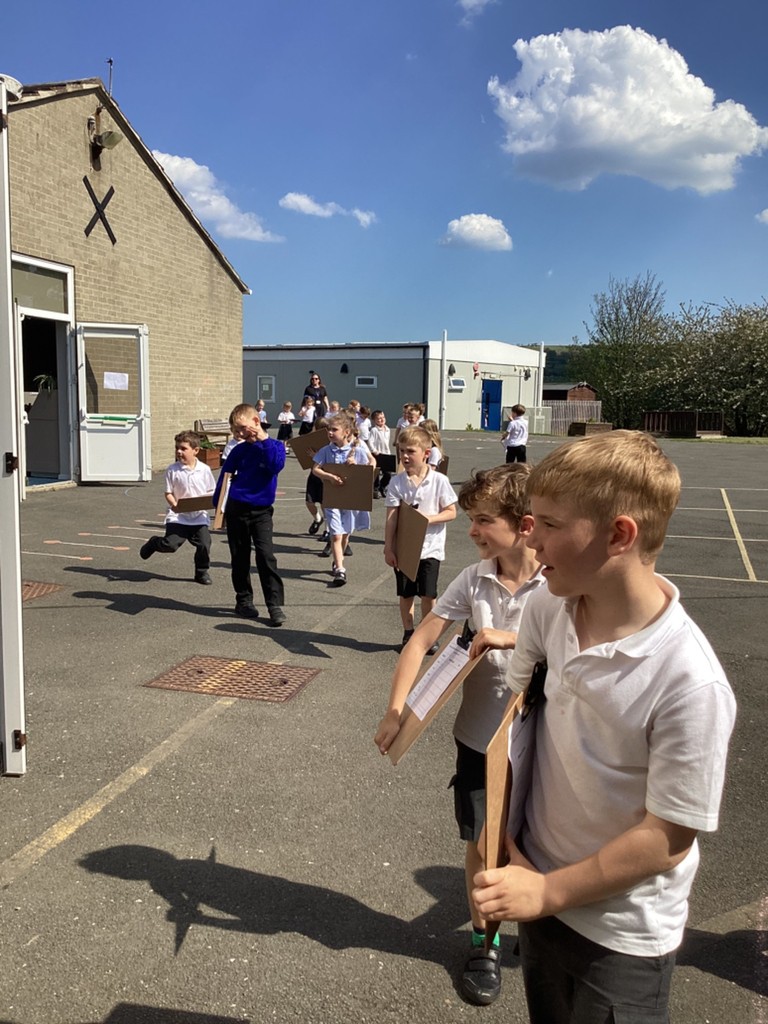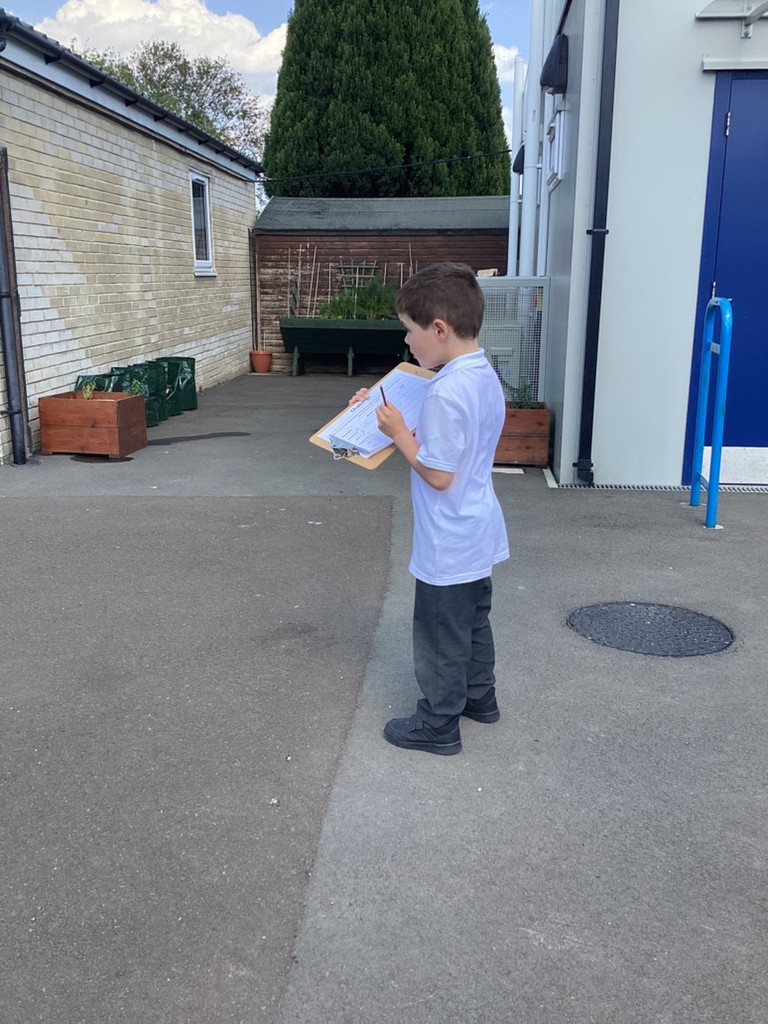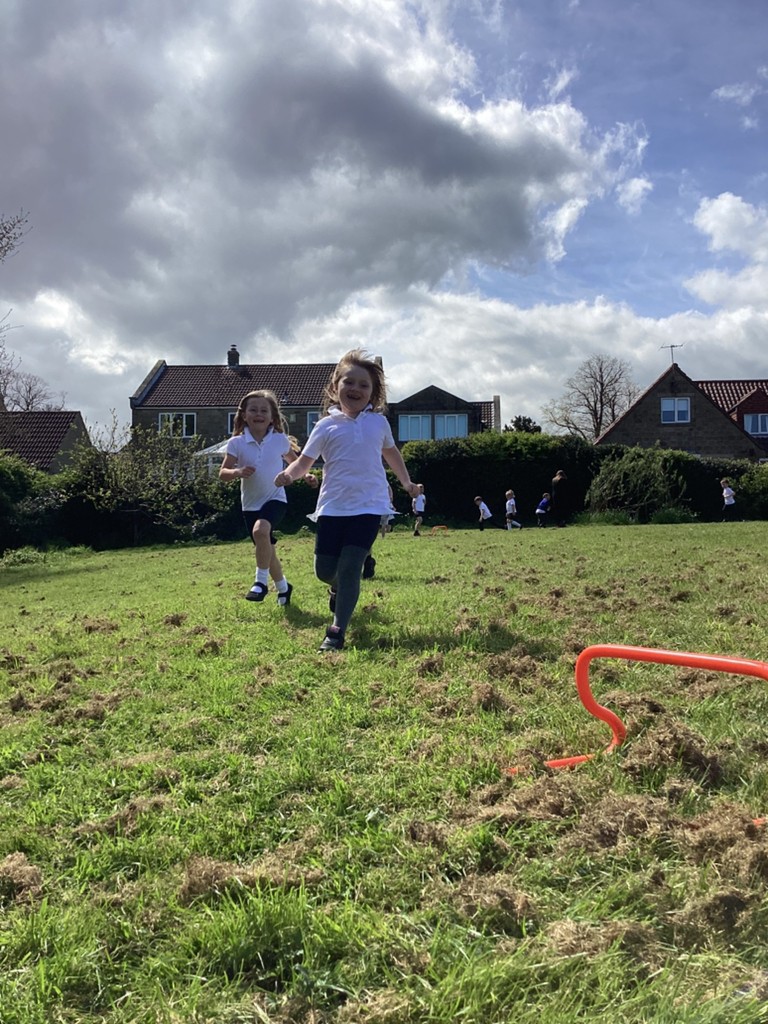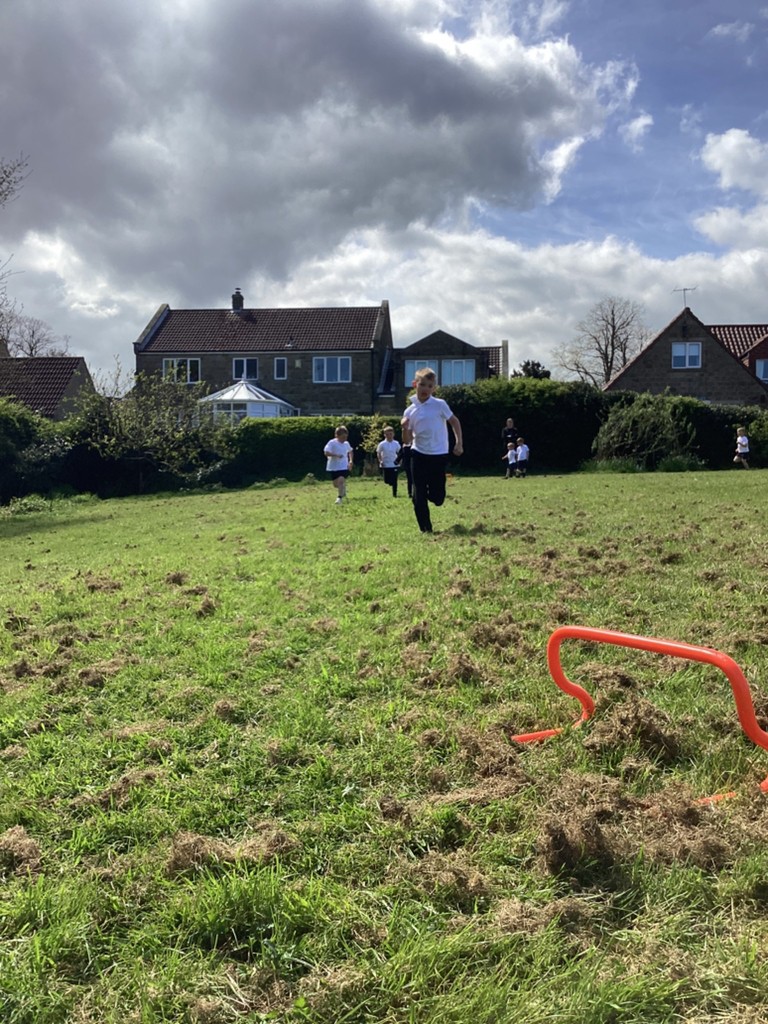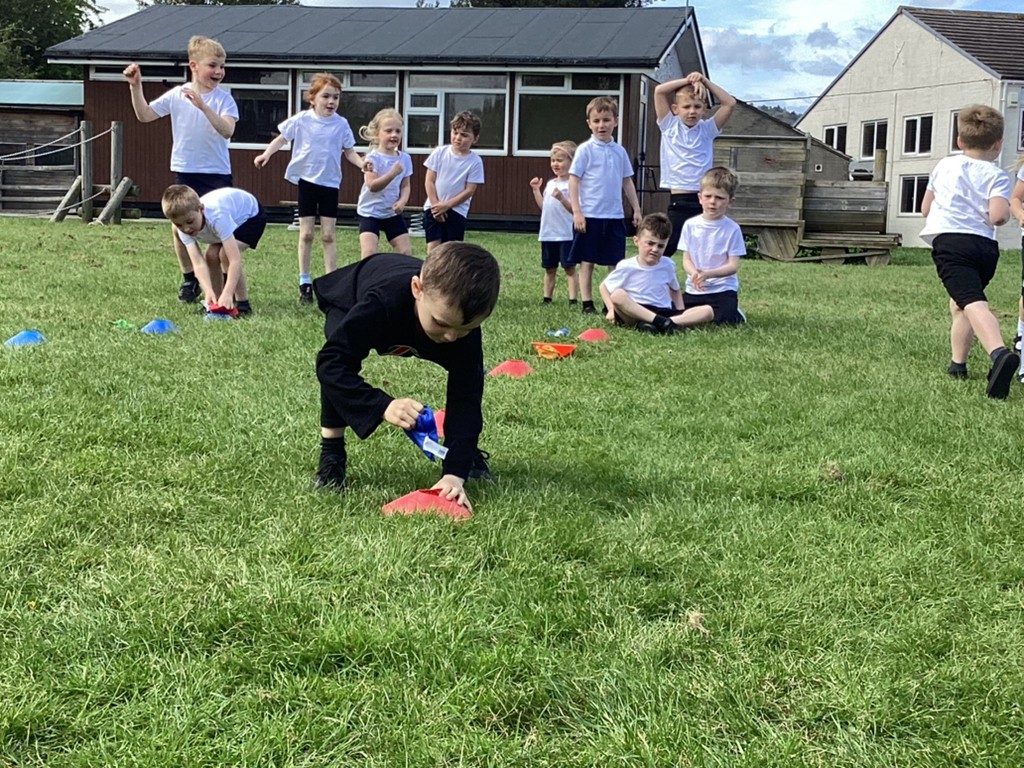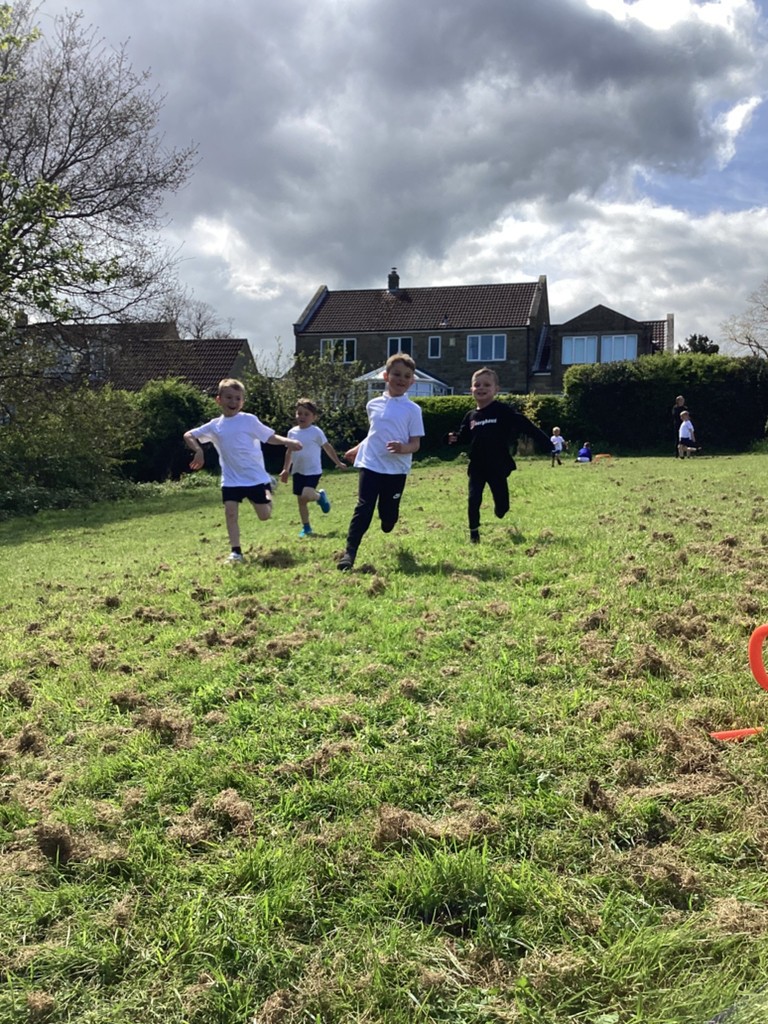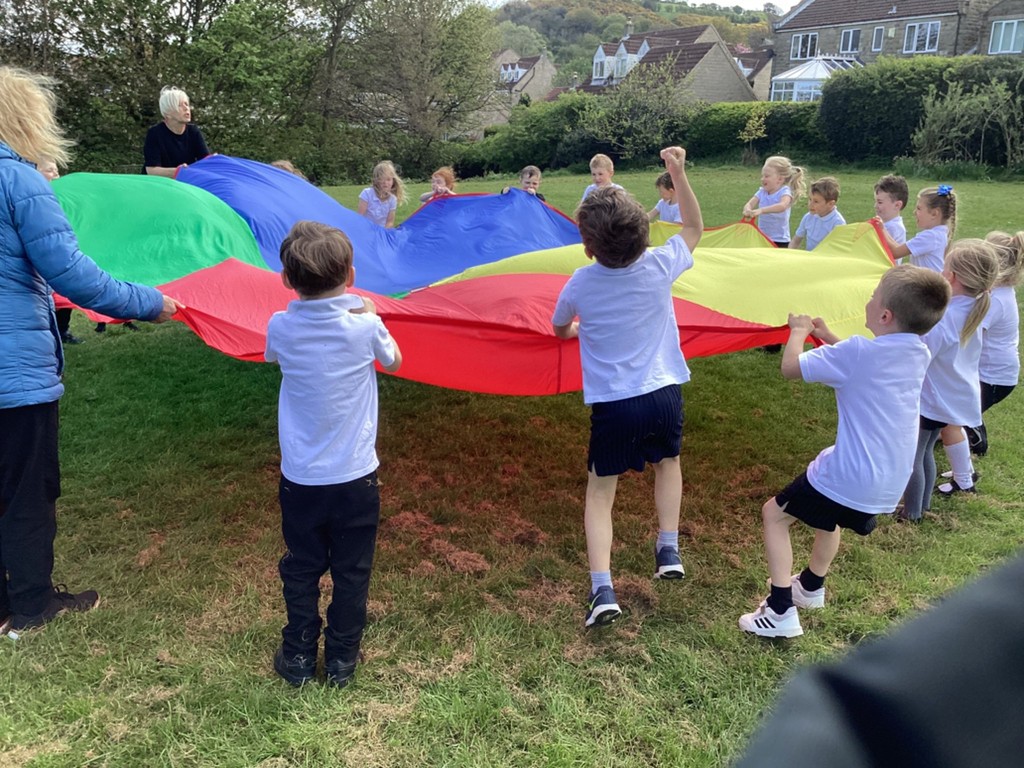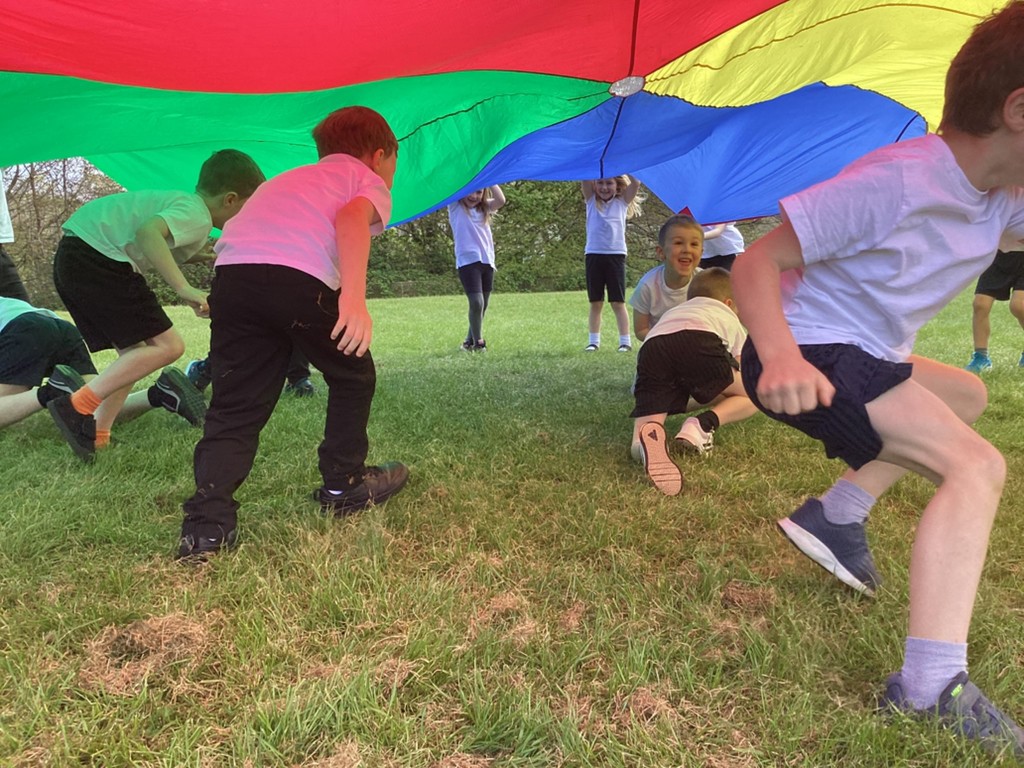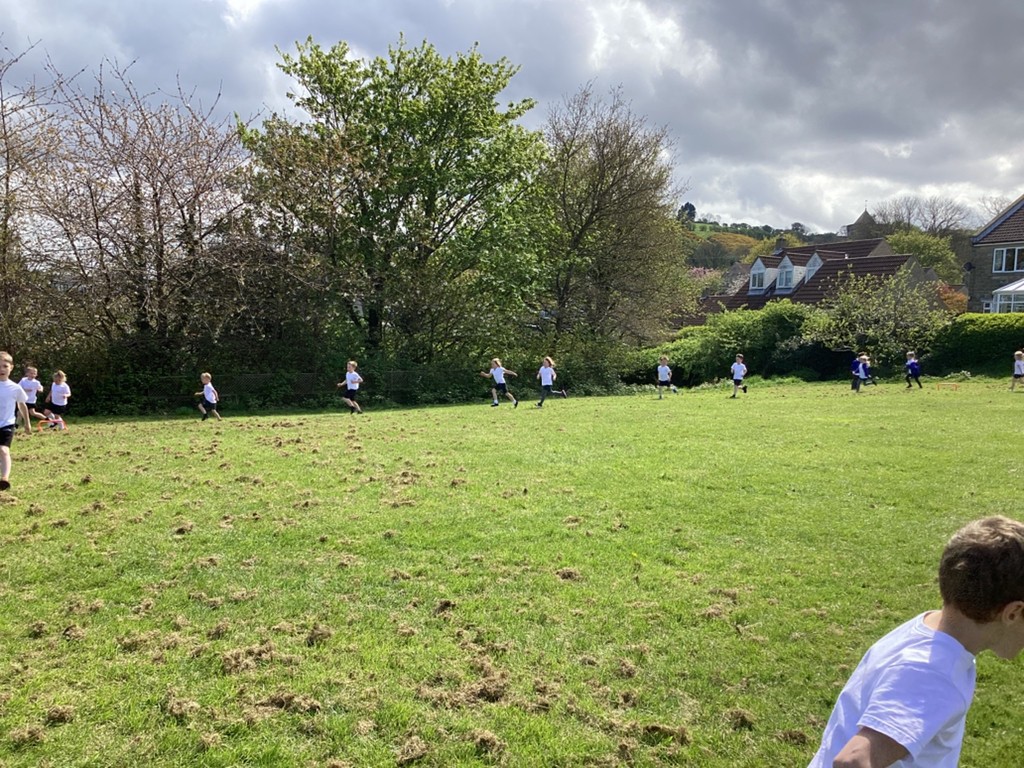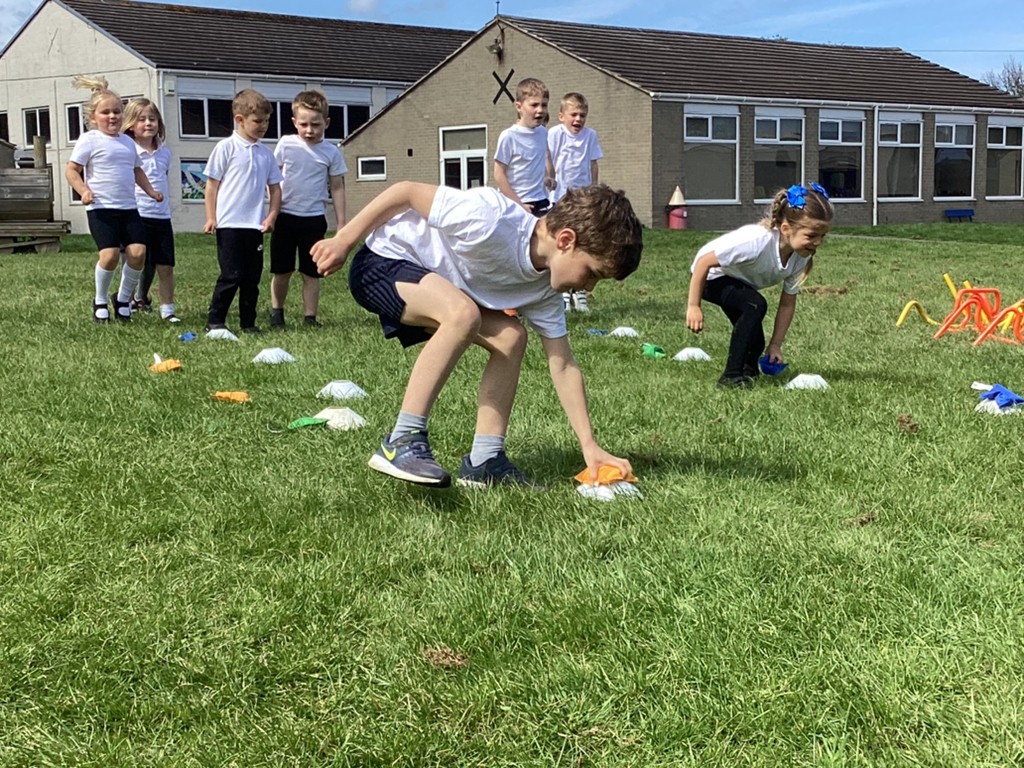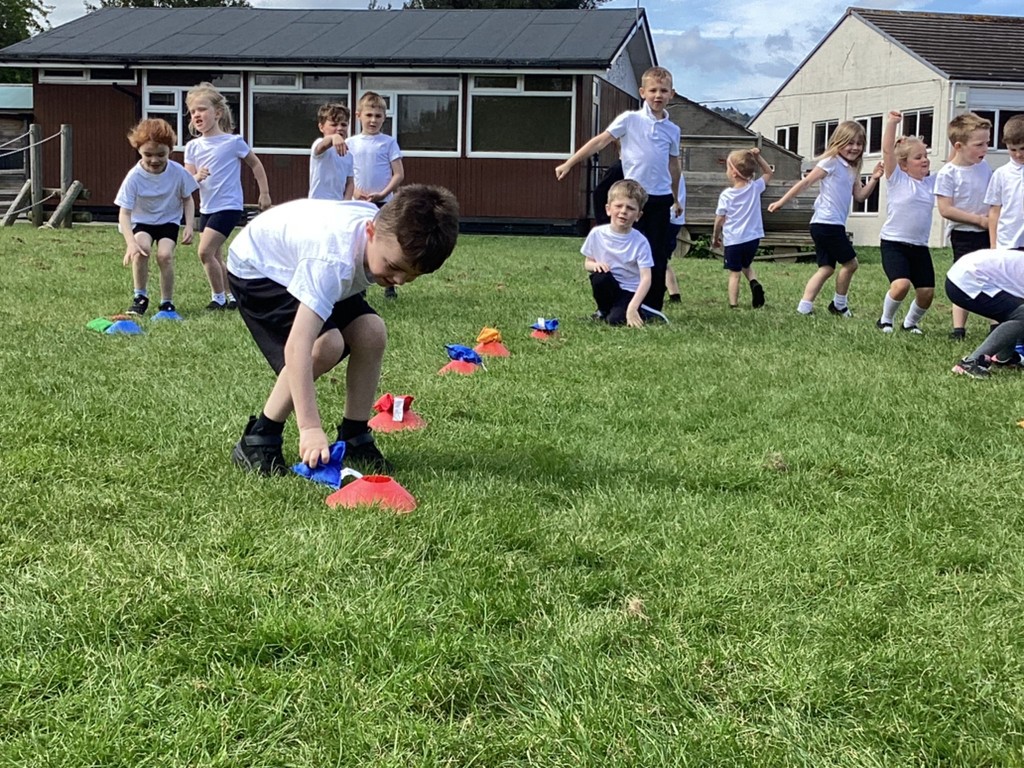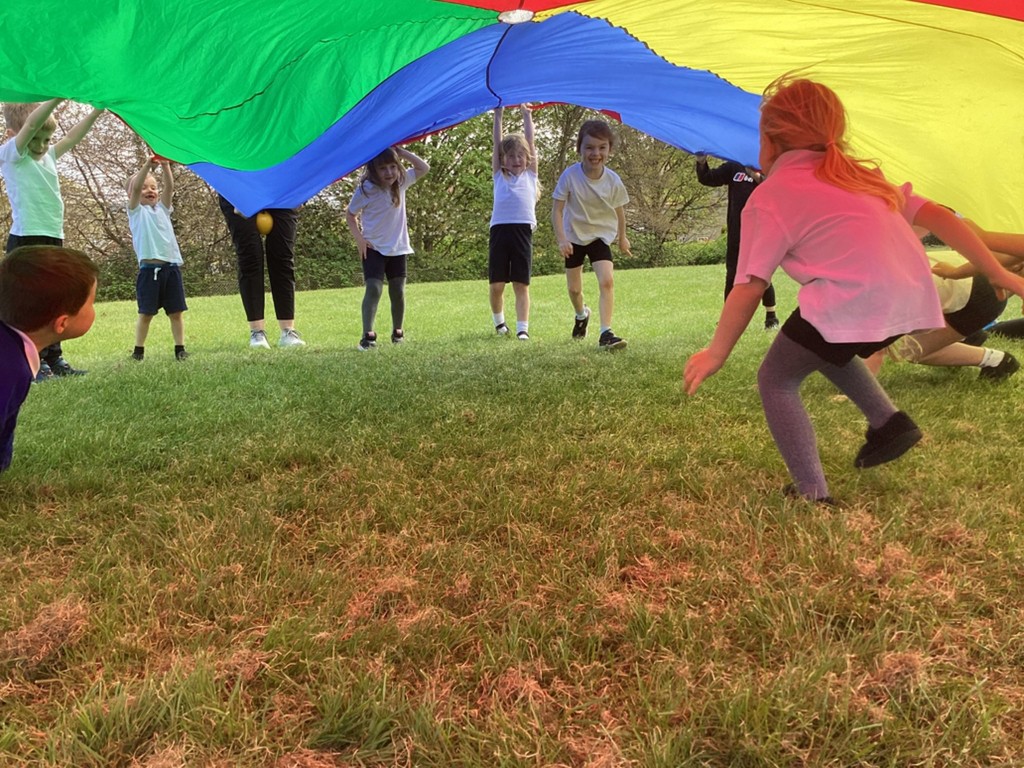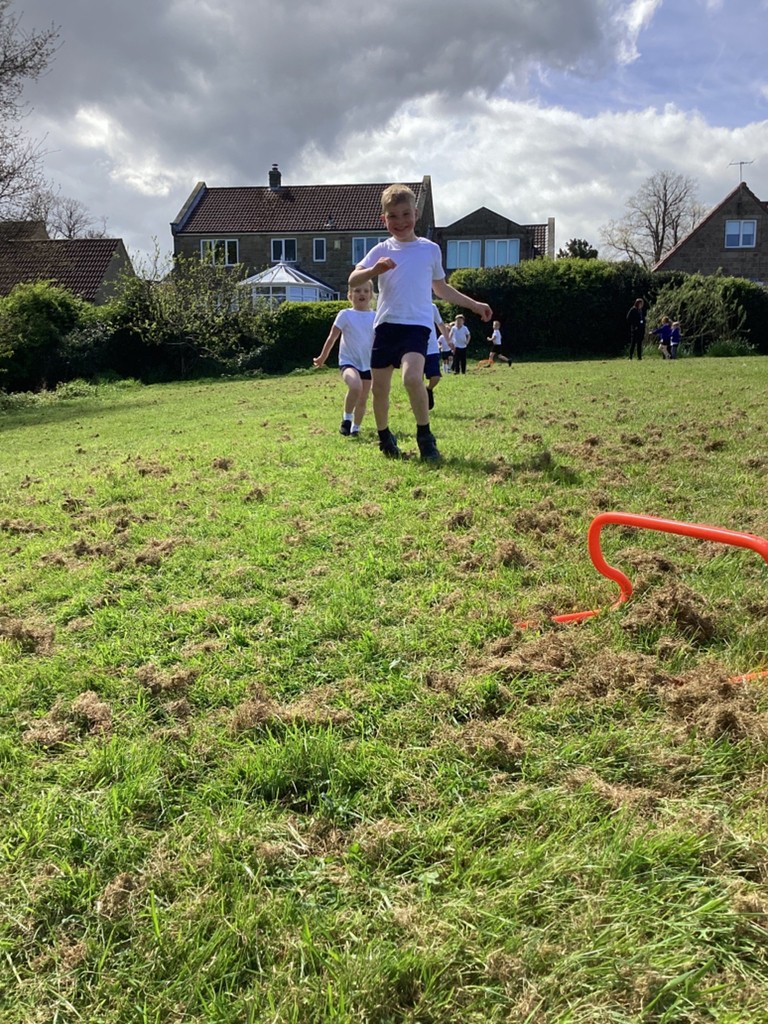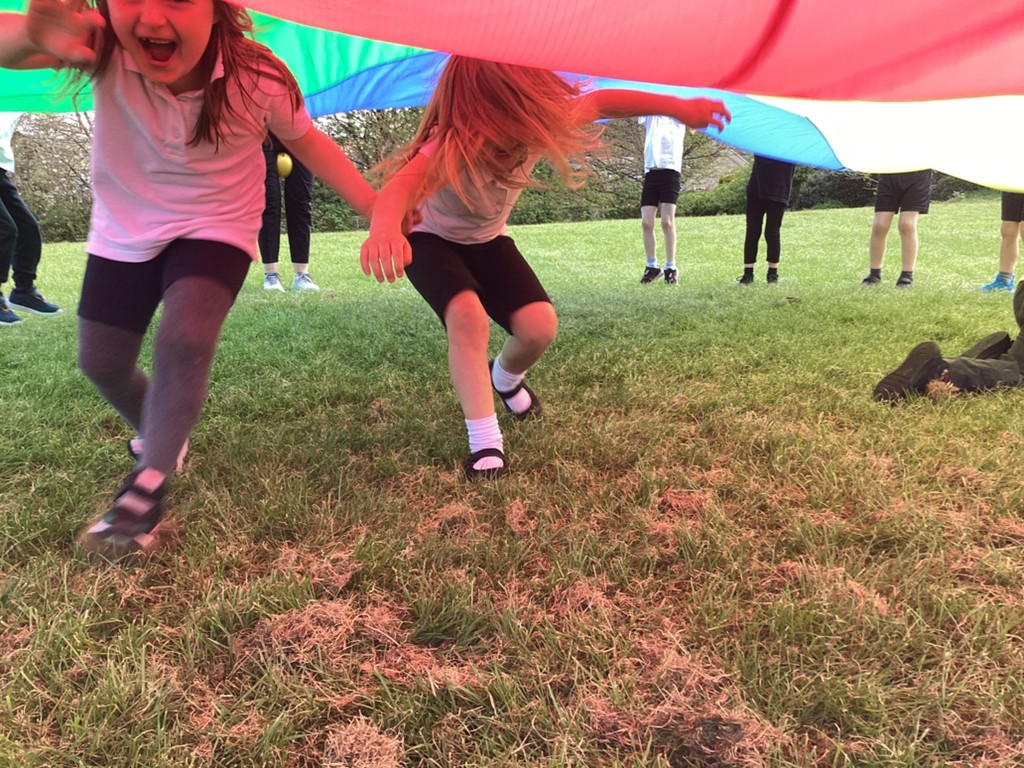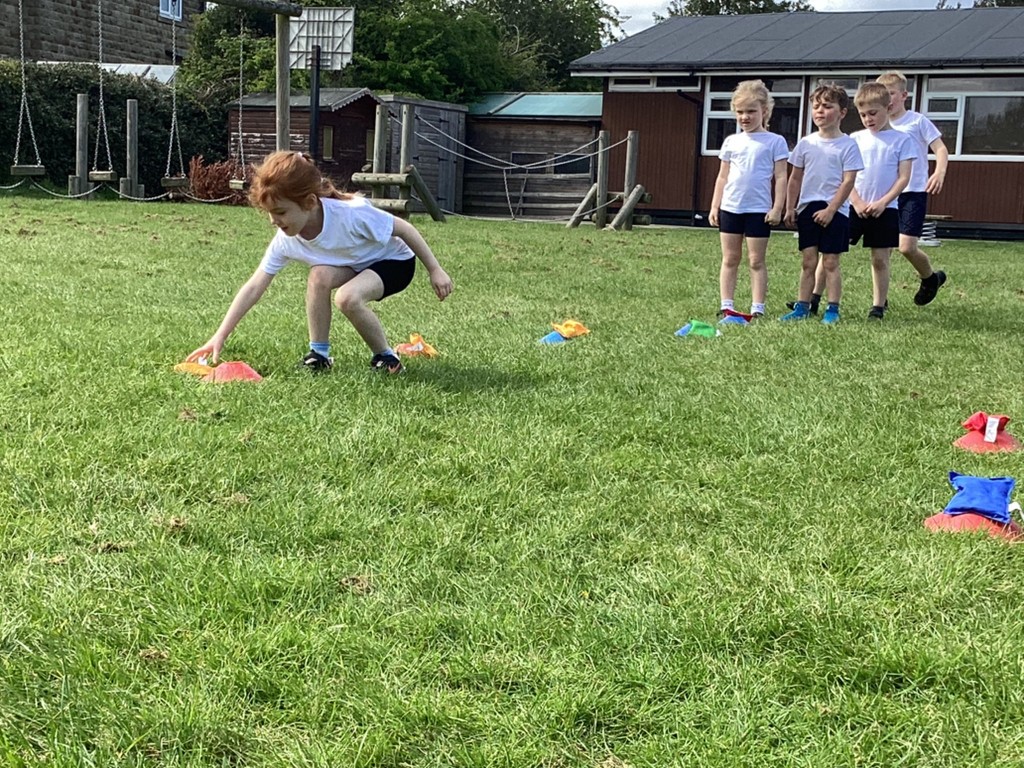Friday afternoon was really exciting. We looked at Google Earth and spotted the road and the river. We discussed the things to see in Sleights and then got going with some building. Even Sid the Cat had a go on the whiteboard! His paws caused a problem however.
We moved the furniture back and filled the space with boxes and tiles and sheets. The focus was fabulous and everyone explored in different ways. It was a pleasure to stand back and watch all of the interaction and decisions.
We discussed chimneys and how many were on different buildings. We discussed the river Esk and going over bridges. We talked about the railway line next to the river.
Some Pioneers began drawing maps and added the word ‘map’ which was a fantastic step.
Next week we will build and photograph from above to create maps.
Category: Pioneers Class
Enjoying the Autumn Sunshine
We have the most wonderful school site and in the autumn it is simply stunning. The Pioneers got out and about to check on the acorns on our oak tree in the forest. We collected bags of forest treasure and had a story on the field. There were lots of brambles and nettles to tackle and this was tricky. Managing to find your boots when there are 25 pairs to choose from is quite a skill!
Happy Learning
We welcomed the Pioneers into their classroom this week and everything was ready. They have filled the space with curiosity and questions. They have moved everything to combine dominoes and train track, buttons and magnets, dough and acorns. They have been dressing up, singing and dancing, writing and building.
The days have found a rhythm and the Pioneers are learning the routines. They managed lunch and outside playtime, collective worship and our end of week disco which was quite something. We talked about how important it is to be part of a team and they certainly played this out in their actions this week.
Happy Learning
Writing and Drawing
The Pioneers love to write and to draw and it is at this time of the year that we can look back and see just how far we have come. The desire to write is there. The desire to understand is there. The awe and wonder found by looking at and learning about our natural world is fabulous. The Pioneers love new knowledge. They are hungry and impatient and demanding and this is so wonderful and long may this continue.
Pioneer don’t stop.
Exploring Collage
We continue to be delighted by collage. This week we added our painted paper to our willow lanterns and onto wet strength tissue paper. We had additional single colour paper to combine in our collage. The Pioneers used cutting,ripping and crumpling to add a variety of textures.
We also had a go at combining colour , exploring how wool worked. One Pioneer identified that the strands needed to look like candy floss and this was the perfect comment to get everyone started on the right road. This took patience and focus and control.
While working we listened to Carnival of the Animals and the variety in the music certainly changed how we worked!
Exploring Structures
The atmosphere in Pioneers was wonderful as we explored new building materials, how to join them and make strong and stable structures.
Using dry willow, we made tripods joined with paper tape. One of the Pioneers recognised that this was a similar structure to the ancient Egyptian pyramids. Another Pioneer described this process as “very satisfying.” They worked together to make three frames before beginning the wonderful work of putting on the wet strength tissue paper to form a skin. We will add our collage tissue paper once it has all dried. The final shapes are fabulous.
We then moved on to building with a huge selection of cups and the collaboration and cooperation we a privilege to observe. They began setting out structures individually but then moved to all work together on one big building suggested to be a castle with doors and windows and the addition of carpet. We used the words hollow, stable, base, arch and structure.
The tidy up process was wonderful and all the resources were collected and sorted to explore further with the addition of flat paint mixing sticks.
Making Music
The Pioneers have shown perseverance and tenacity in their approach to music this week. It is very tricky not to bang on your woodblock or play your new chime bar while waiting for your conductor. The Pioneers want to explore and find out and it is very tempting to take your chime bar apart to explore the features! This is all part of the learning. We started our explorations with clapping and tapping before using the untuned percussion and then adding in the chime bars. The focus built up over our sessions and there was wonderful collaboration.
We opened the windows to allow the parents to hear our wonderful sound at pick-up time!
Maths Happens Everywhere
Maths happens all over the place in Pioneers and always involves stuff-things to subitise, count, compare, move around and measure. It is a noisy process with lots of chat and articulation of thinking. There’s lots of comparing and repeating how you did it and if there might be an answer. What appears initially straightforward is actually really complex and we need time to think and do.
Some incredible discoveries were noted when using a ruler then moving to looking at a powerpoint on how to measure with a ruler. The Pioneers were not satisfied that the graphics were accurate and were frustrated, understanding that small differences can make a huge difference.
During the week, Pioneers were observed using stuff to make connections and talk about odd and even numbers and their links to doubles.
Congratulations on a wonderful week of learning.
Preparing for Map Making
In geography, fieldwork is obviously a priority and when making maps we have to do the research. To begin with we looked at how we would represent our environment on a map. We identified items on a prepared map before drawing a map of our own, very familiar classroom. Next we went on a information gathering tour of our site. Managing a clipboard and a pencil is a skill in its self and we all did very well on that.
We are familiar with how to make a pictogram from our work last term so we repeated this to gather information to make a map of our site. We stopped to record a various places around the school, checking that we were not making double recordings when classrooms were seen from different locations.
PE in the Sun
It was so lovely to be able to use the field to kick off our Athletics for the term. We began with a great warm up being able to use the space and run. We discussed managing sprinting mixed with fast walking to manage pace. Everyone was able to feel their heart beating. We stopped to talk about how we can encourage each other and also discussed finding your own pace. It is not just about overtaking.
We moved on to a circuit of jumping, slalom and hurdles, working together to share space and equipment which is always a challenge.
We finished our session with a relay race. These have become more complex over time and the Pioneers always enjoy the challenge and the competition
The wind blew and the parachute gave us a nice little upper body workout!
Happy Learning
